カワバタモロコ
Hemigrammocypris rasborella
Since 2005
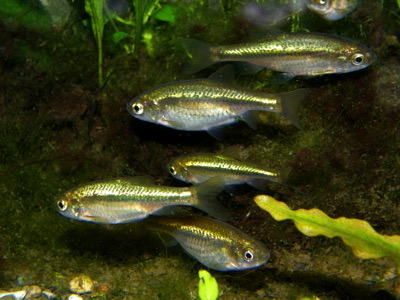
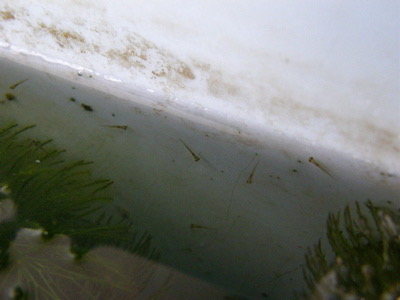
自家繁殖個体です。画像(左)はガラス水槽中ですが、水草を入れた容器で屋外飼育していると毎年7月頃に無数の稚魚が湧くように産まれます(右)。普段あまりよく観察していないので産卵には気が付きません。稚魚はとても小さく市販のパウダー状飼料も食べられないようです。屋外で水中に湧く微生物に頼るのが今のところ一番良い結果になっています。この飼育例に限ることかも知れませんが、親魚は殆ど底の方にいますので、かなりの稚魚が捕食を逃れています。2005年に5匹導入、2019年現在その子孫を飼育中。累代数は不明。
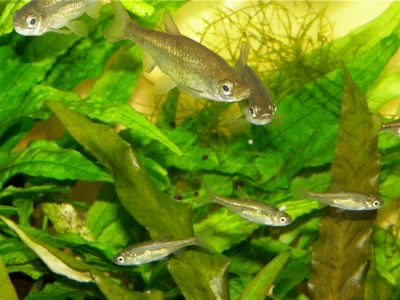
小さいの(メダカサイズ)が2016年春夏に産まれた幼魚の同年10月の様子。大きい方は3-4才。
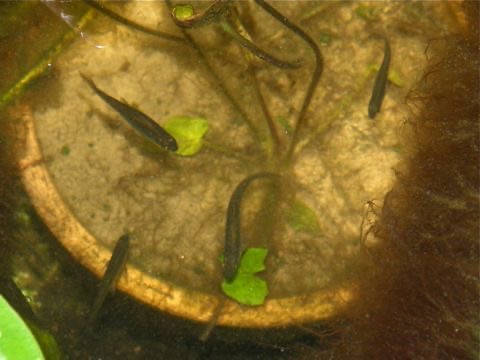
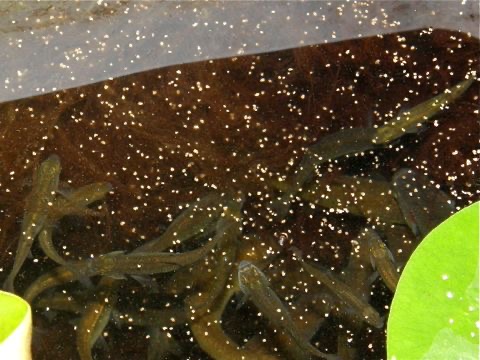
2017年5月、昨年産まれた幼魚のうちベランダのタンクで冬越しした魚たち。親魚も健在。
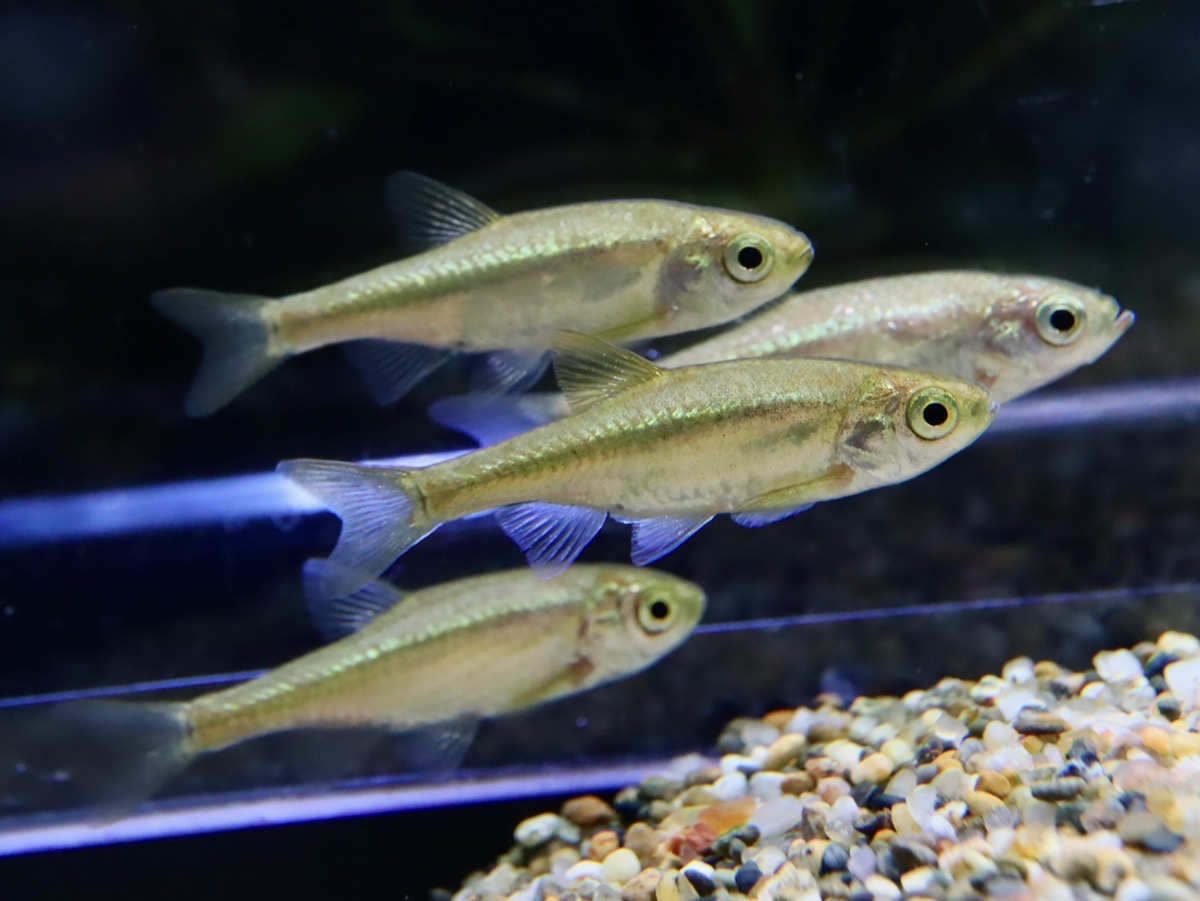
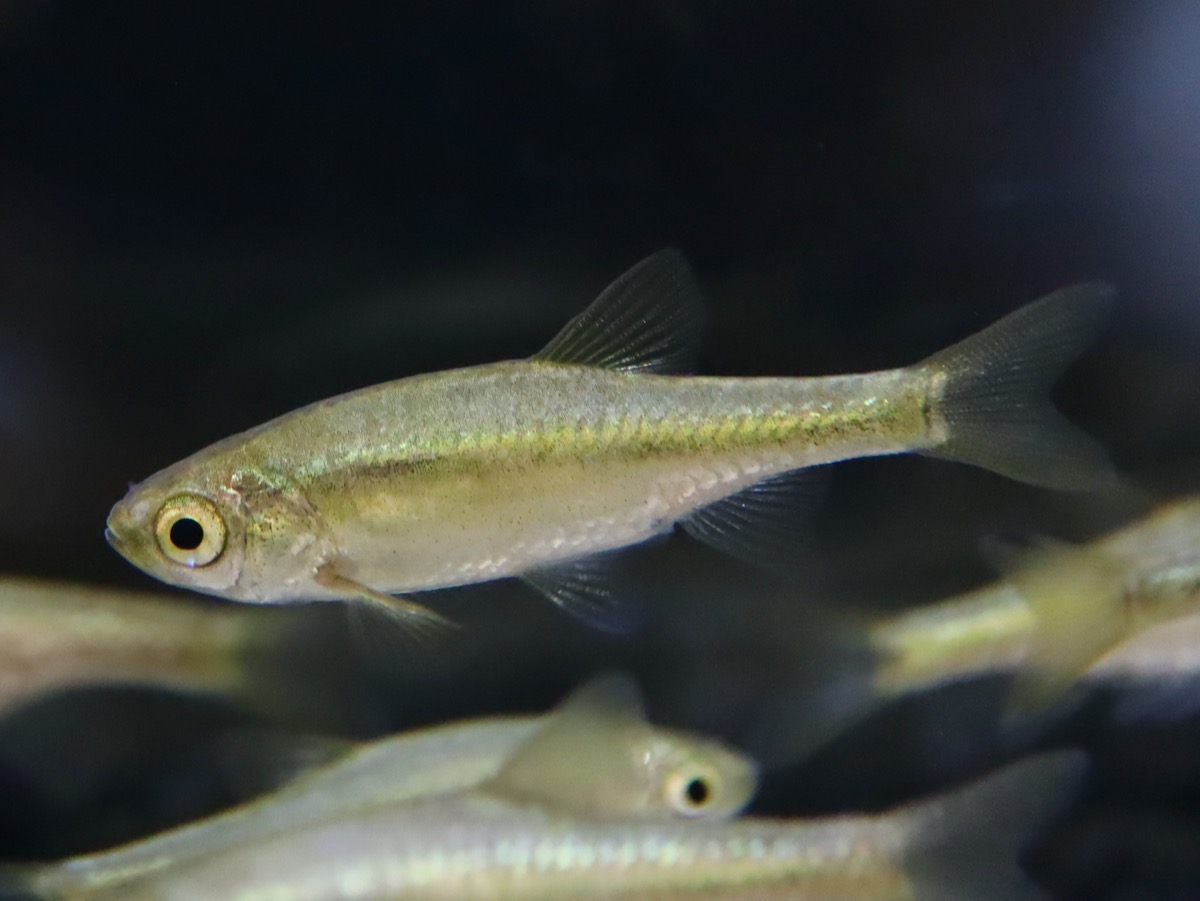
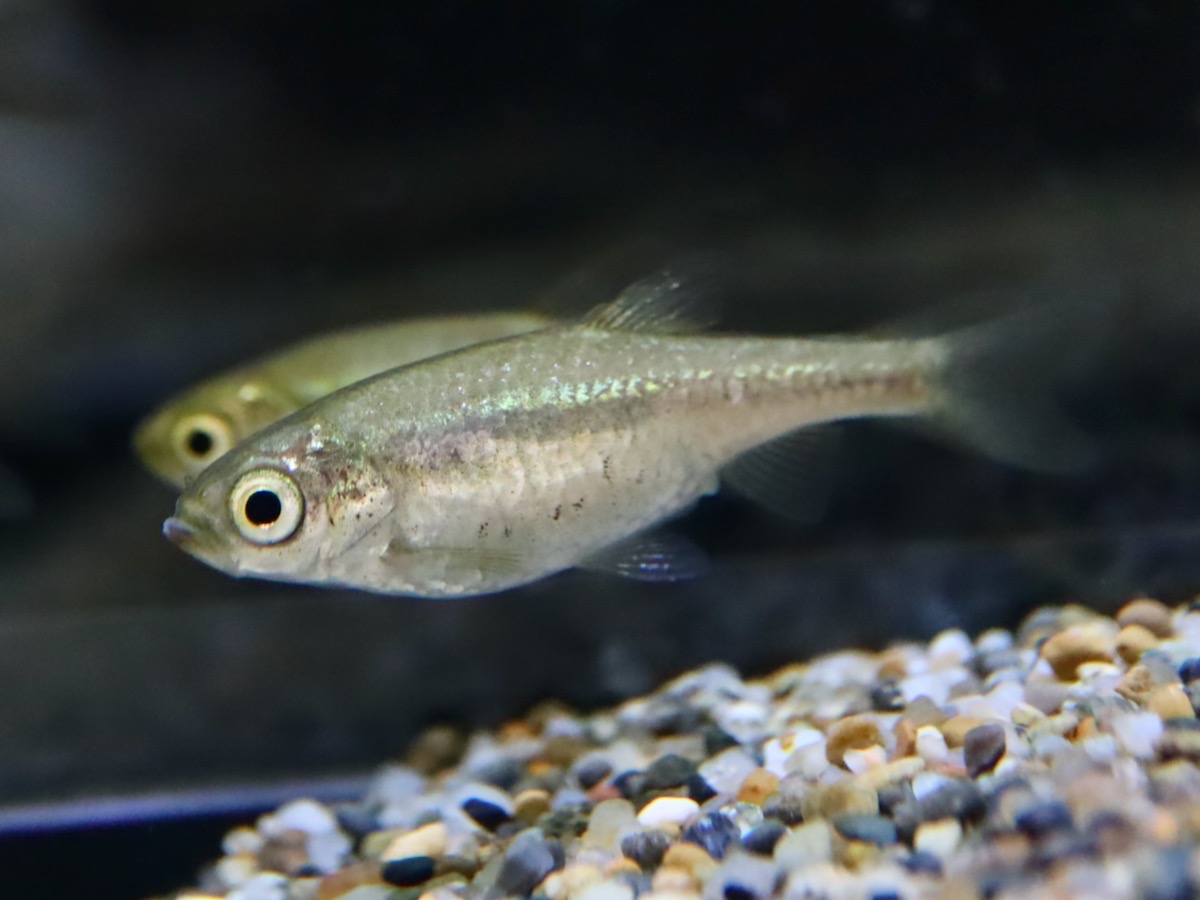
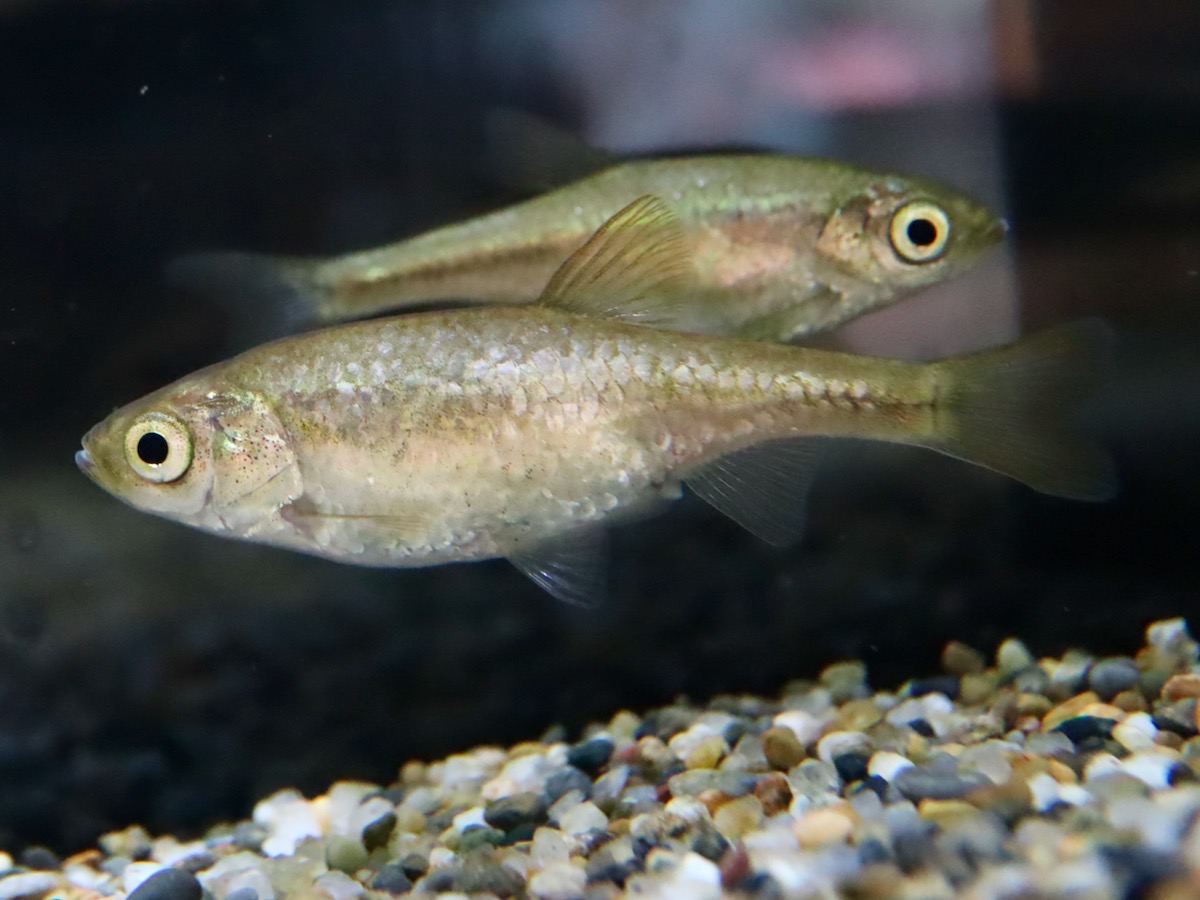
2020年6月、ガラス水槽に移して撮影。
カワバタモロコの水槽内繁殖 2020
Breeding of Hemigrammocypris rasborella (KAWABATAMOROKO) 2020
上に紹介したように、2005年からベランダのプラスティックコンテナ内での自然繁殖のみで累代飼育して来ましたが、2020年、撮影のしやすいガラス水槽内で繁殖させてみました。
水槽:30 x 20 x 30 cm
フィルター:底面、エアリフト、大磯砂
水質:pH=7.4、GH=5(調整なし)
水温:27-29℃(夏場の室温)
照明:LED、7時間/日
水草:マツモ
Kawabatamoroko (Hemigrammocypris rasborella) is a Japanese native cyprinid species. Starting from five individuals bought in 2005, the colony was kept through spontaneous reproduction in a plastic tank outdoor. In 2020, I tryed to breed them in a glass tank.
Tank size: 30 x 20 x 30 cm.
Filer: Air-lift undergravel with Oiso-sand.
Water condition: pH=7.4, GH=5. (Non-conditioned.)
Temperature: 27-29℃ (The room temperature in summer season.)
Lighting: LED, 7 hours/day.
Plants: Hornwort.
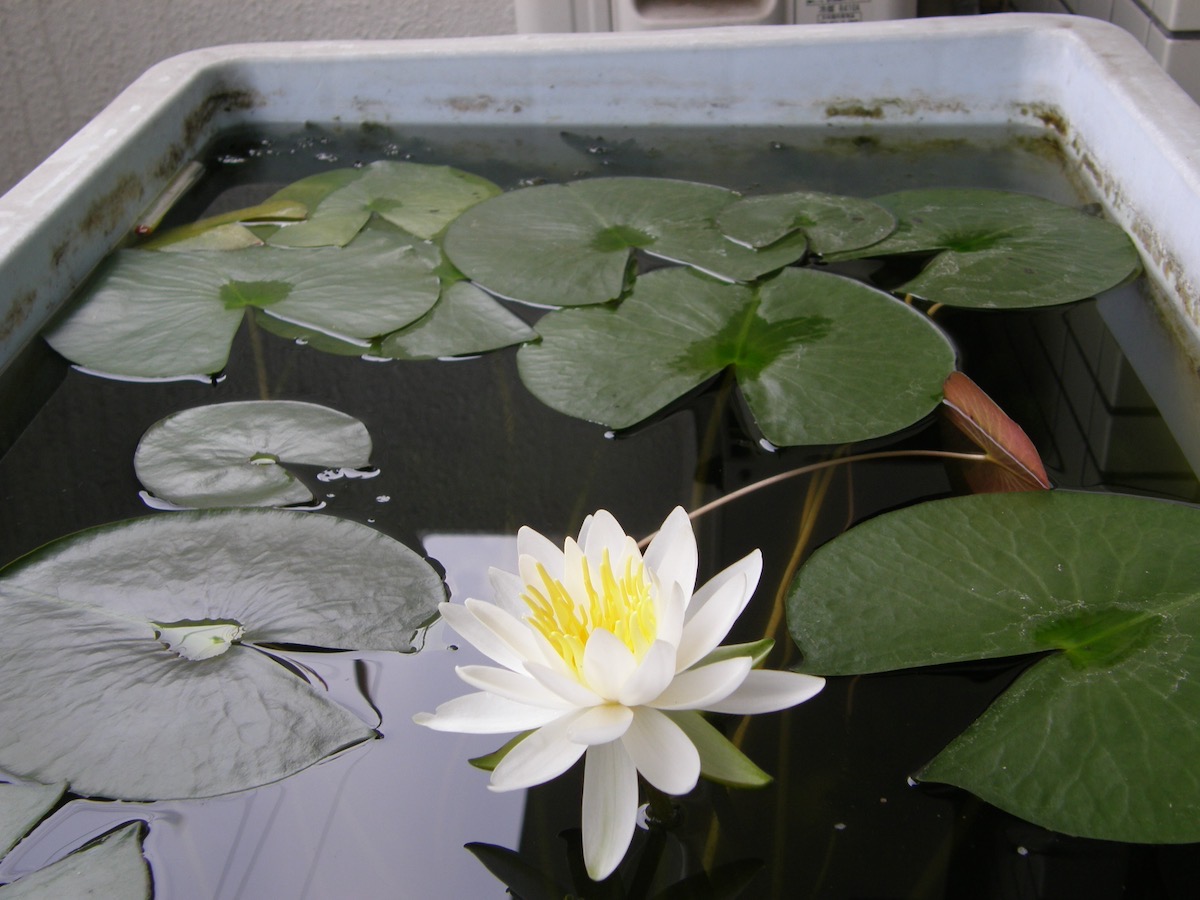
2005年以来この容器内で自然繁殖飼育しています。
The fish colony has been kept in this tank since 2005.
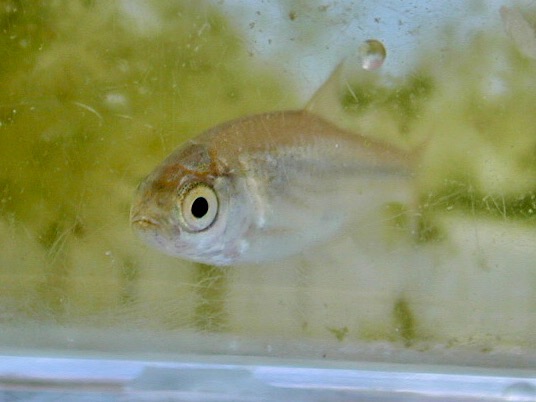
2006年に初めて産まれた個体。
The first-born fish in 2006.
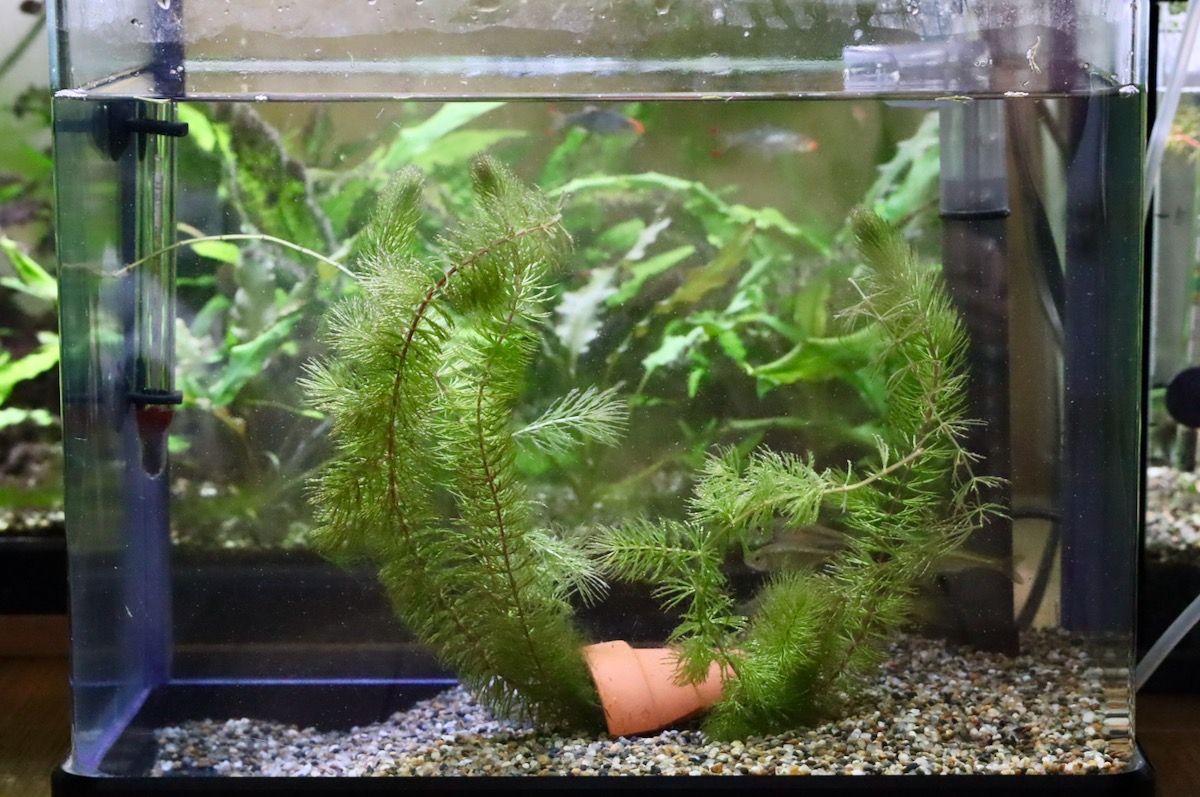
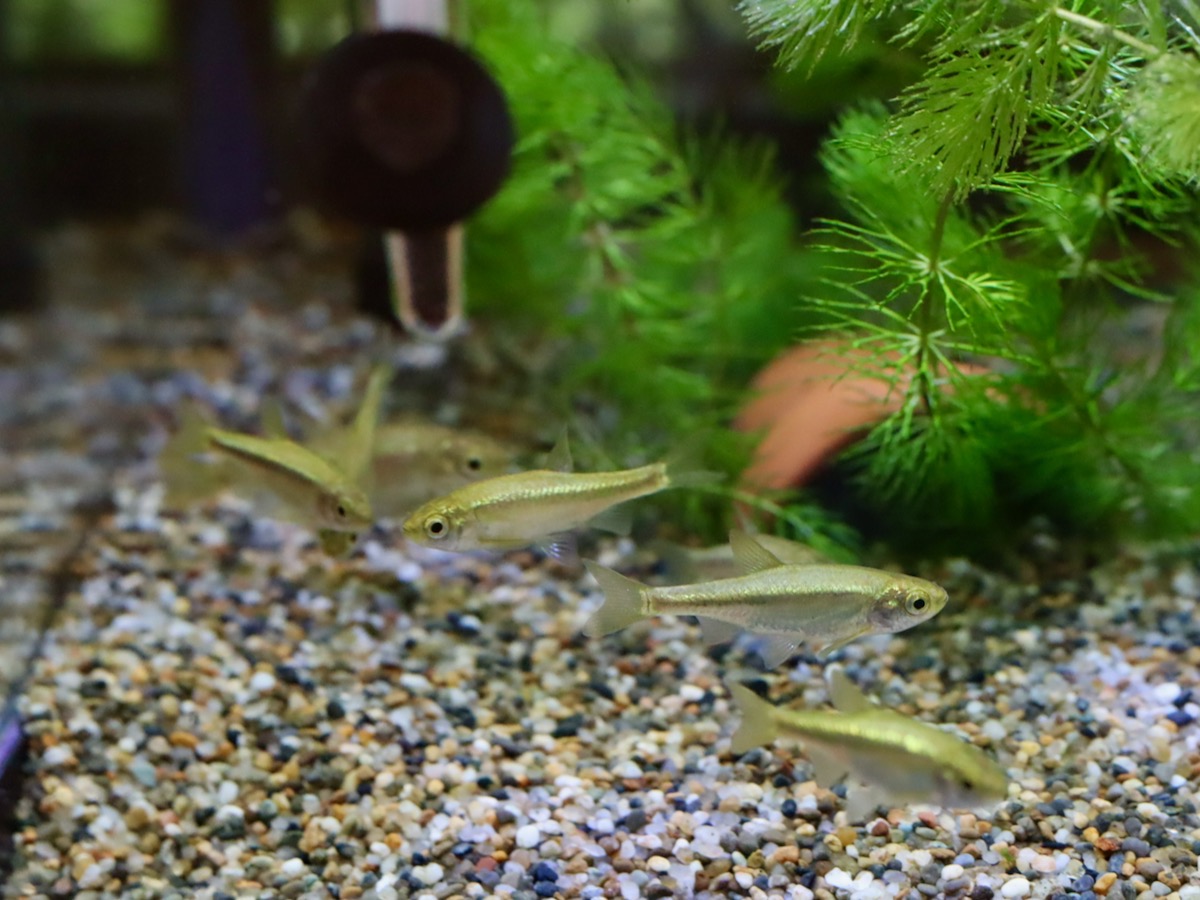
2020年6月、外で冬を越した魚を室内のガラス小型水槽へ導入。
Jun. 2020, fish overwinterd outdoor were introduced into a small glass tank indoor.
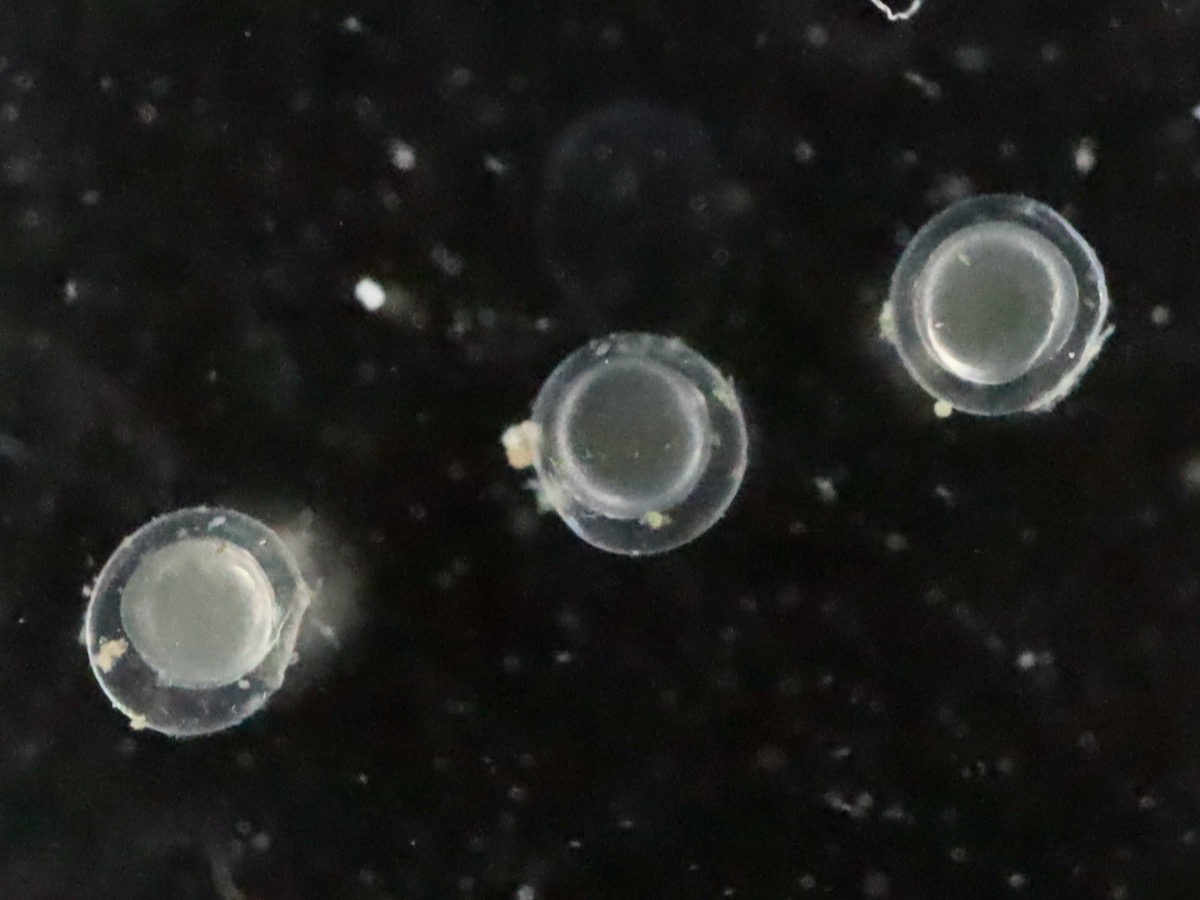
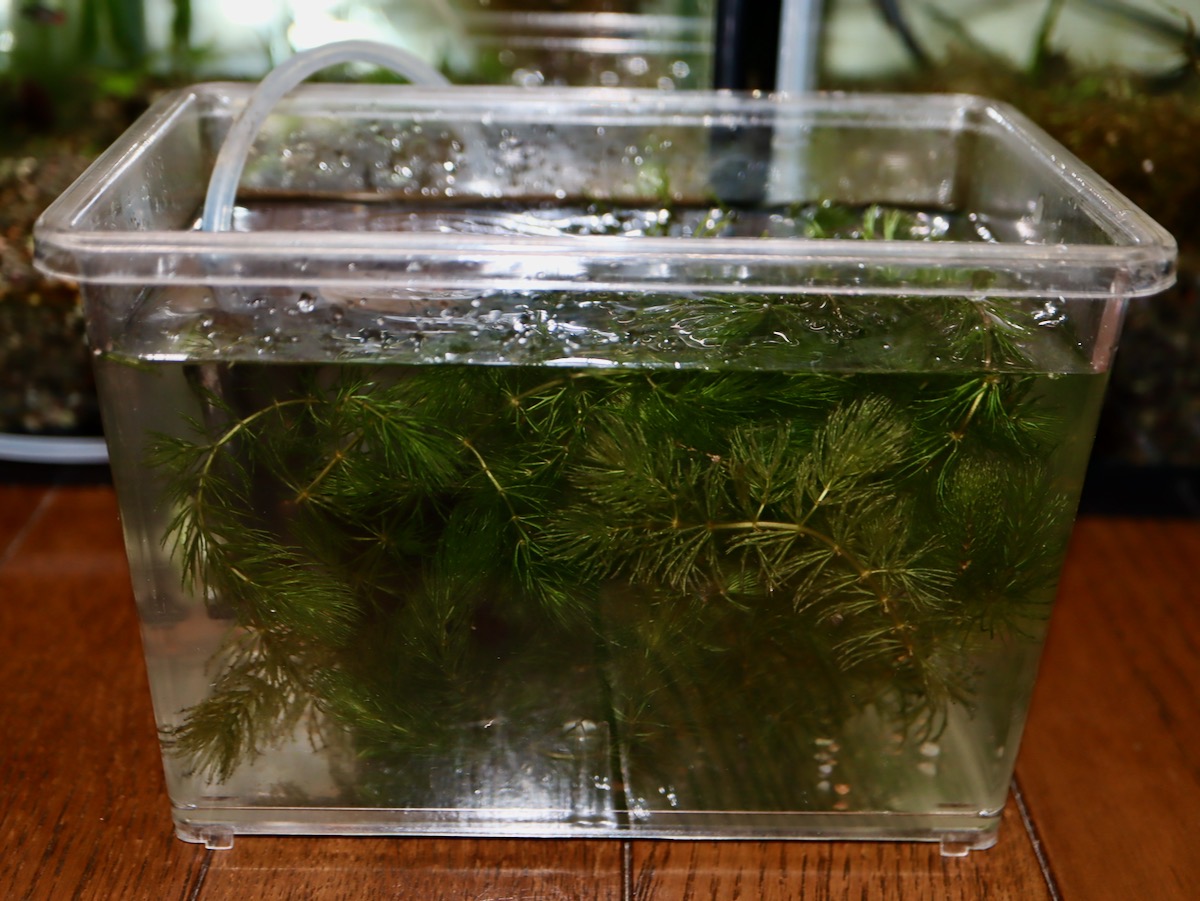
7月上旬、1匹のメスが細くなっているのに気付き、よく見ると卵がみつかりました。卵の多くは水草に付着しているようなので、水草ごとプラケースへ隔離しました。この日を0日目とします。
At the biggining of July, I noticed one female got thin, and found eggs. As many eggs are on the water plant, I isolated the whole water plant into a smaller plastic case. This day was set as day 0.
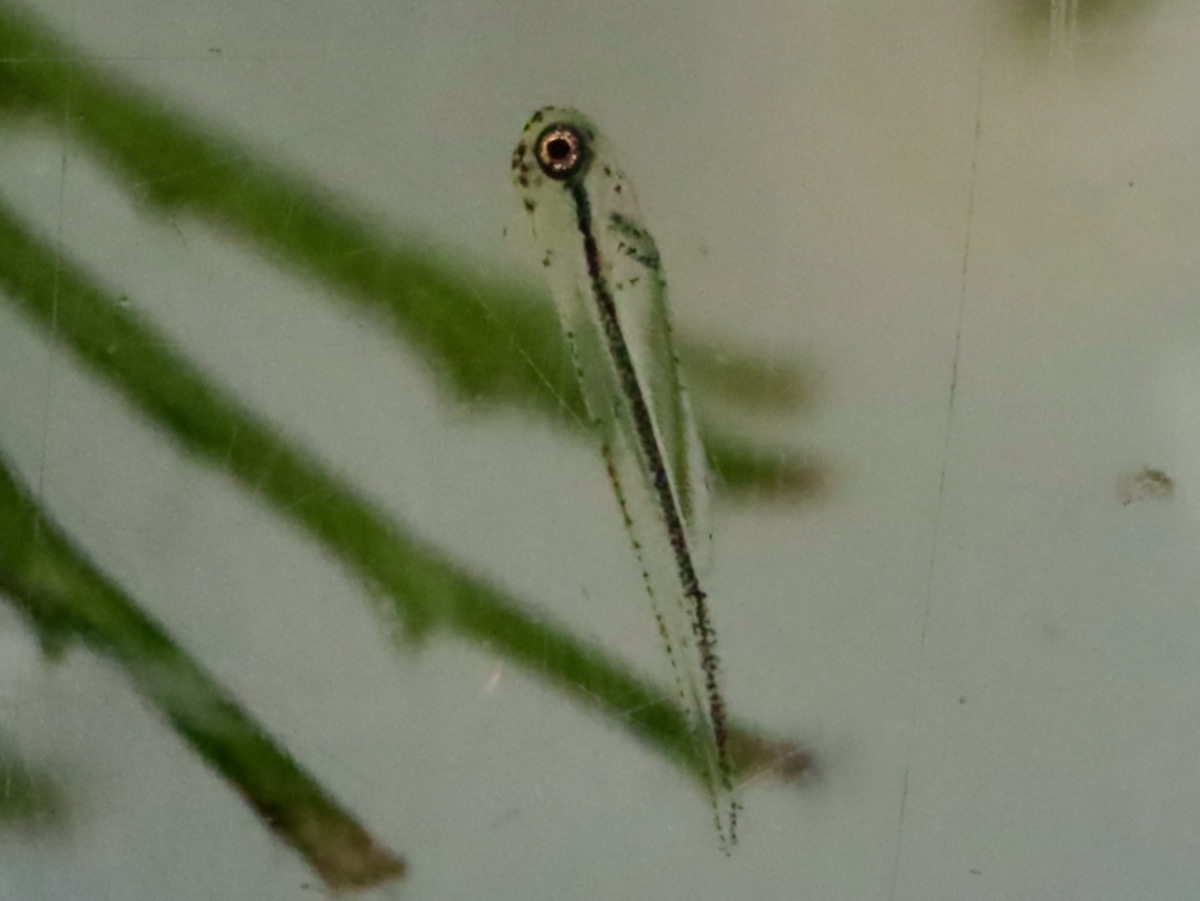
2日目、プラスティック面に付着した稚魚。このように横向きに付着するものは少なく、ほとんどは、腹側で付着しています。
Day 2. A fry on the plastic wall. Few fry show their sides like this picture, but most attach to the plastic wall by their bellies.
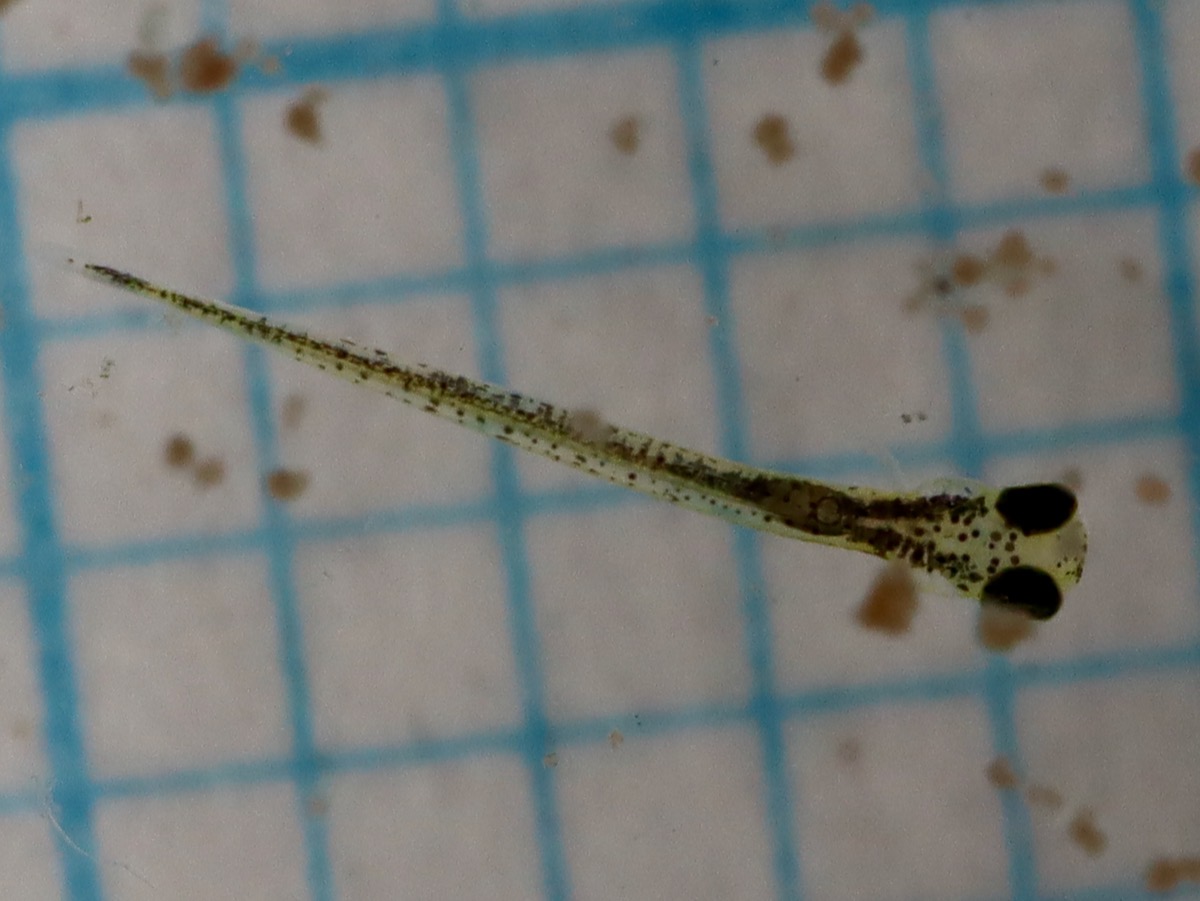
3日目、泳ぎ始めた稚魚。方眼は1mm。茶色の粒は市販のメダカの稚魚用の餌。口に入る大きさの粒は僅かしかないと思います。
Day 3. Fry started swimming. Grid, 1 mm. Brown granules are a commercially available baby fish food. The average-sized granules seem too big for the fry.
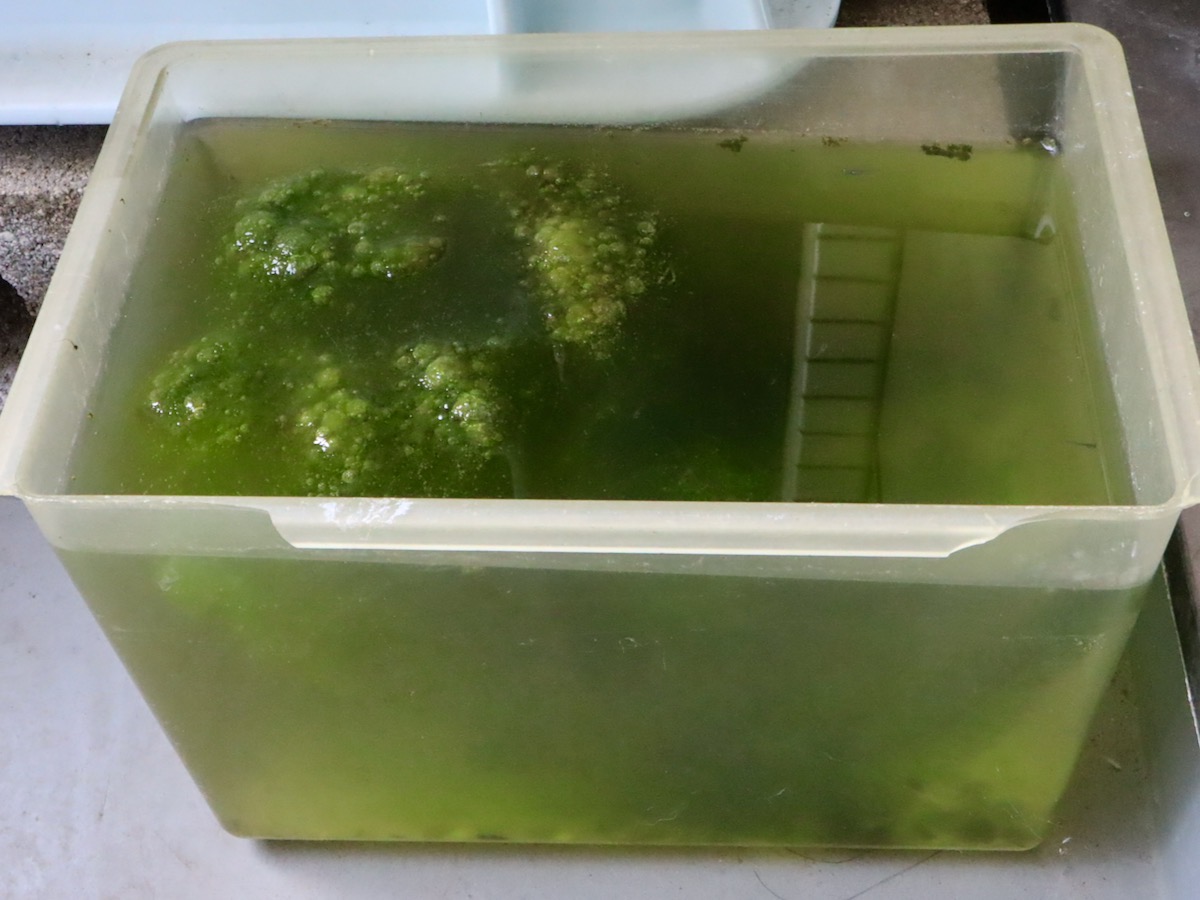
メダカの稚魚用のプラケースの水がちょうどグリーンウォーターになっていたので、毎日少しずつ、エサとしてカワバタモロコの稚魚水槽に入れました。
I poured a small amount of green water into the fry tank as a food.
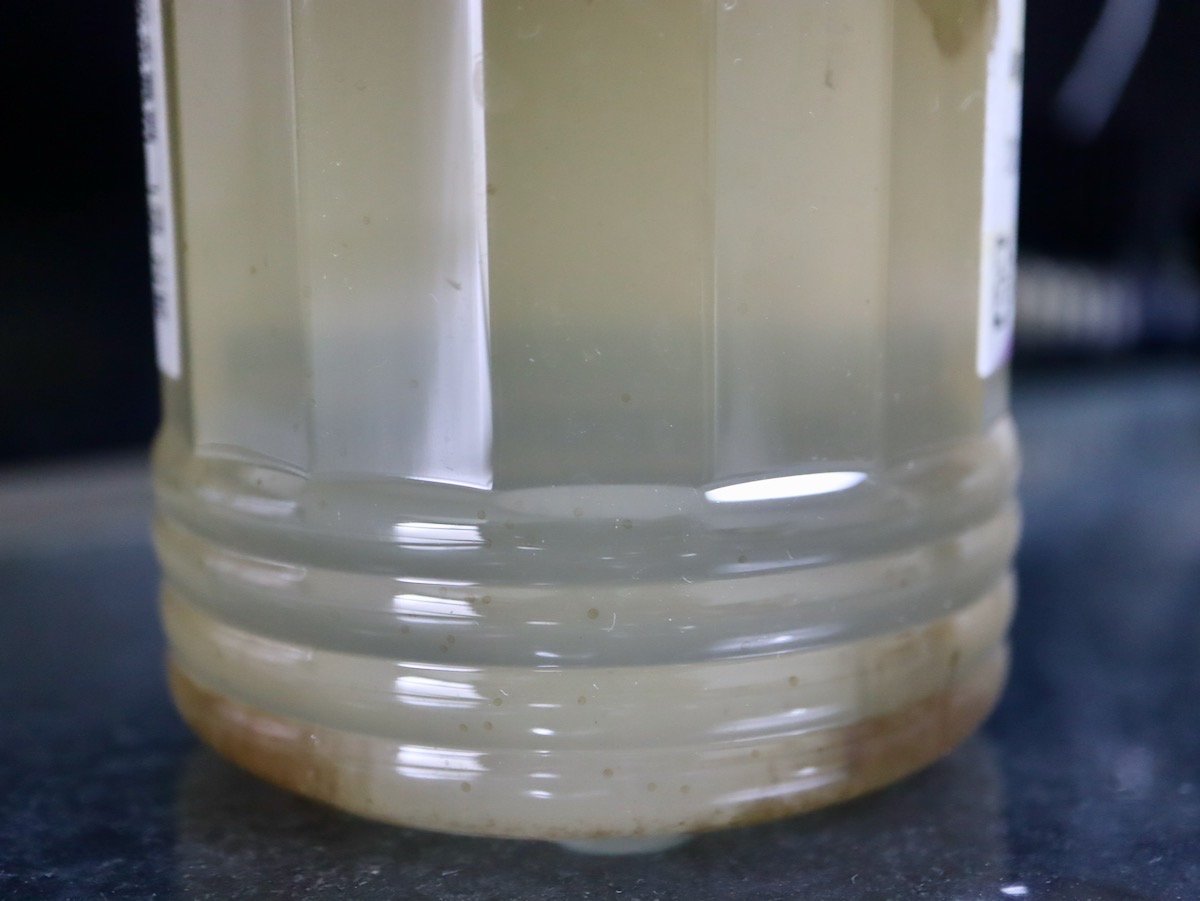
湧かしたインフゾリアもエサにしました。夏場は比較的簡単に湧きます。私はキャベツを使っています。
I used infuzoria also as the food. It can be prepared easily in summer season. I use cabbage as the substrate.
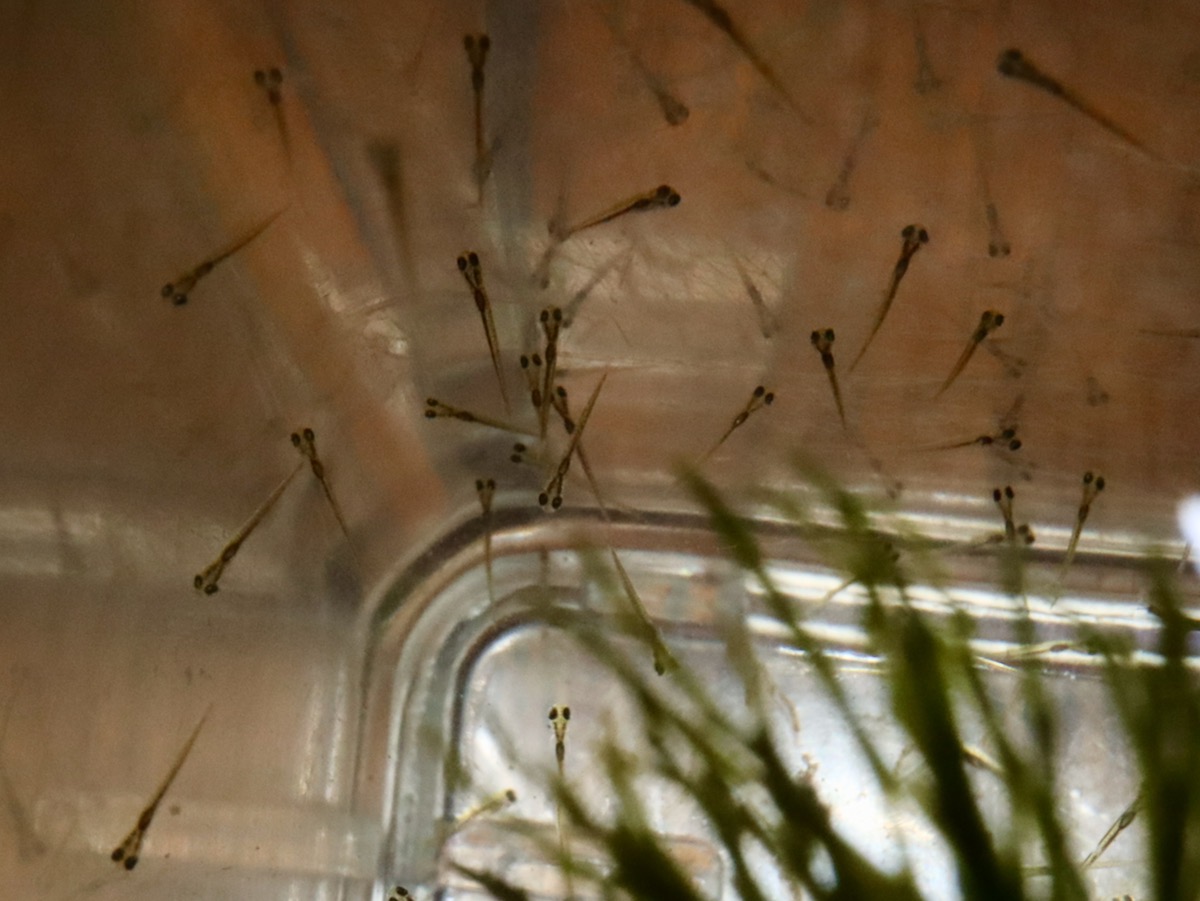
4日目。多数の稚魚が泳いでいます。
Day 4. Many fry started swimming.
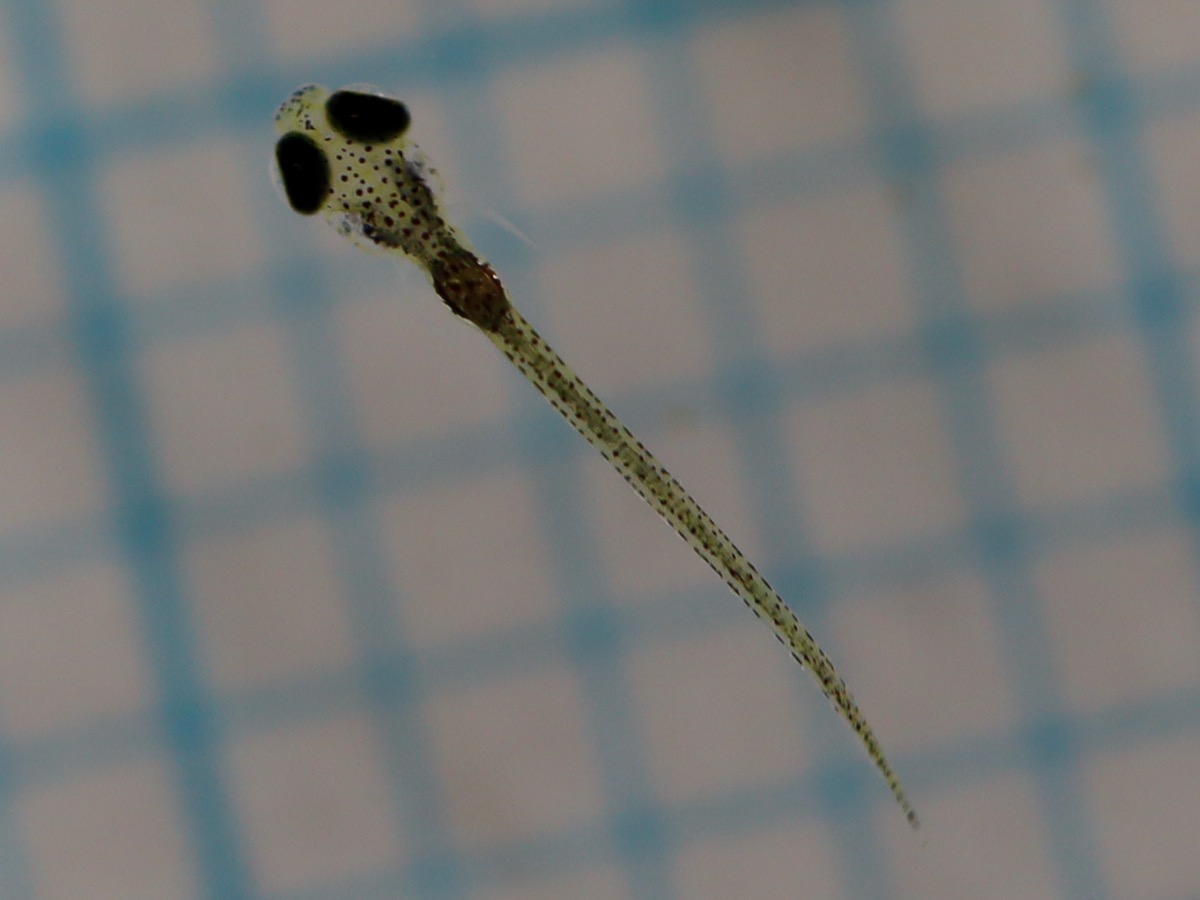
12日目。成長が遅いのは、やはり、エサの問題でしょうか。
Day 12. Growing slow. Are the foods not good?
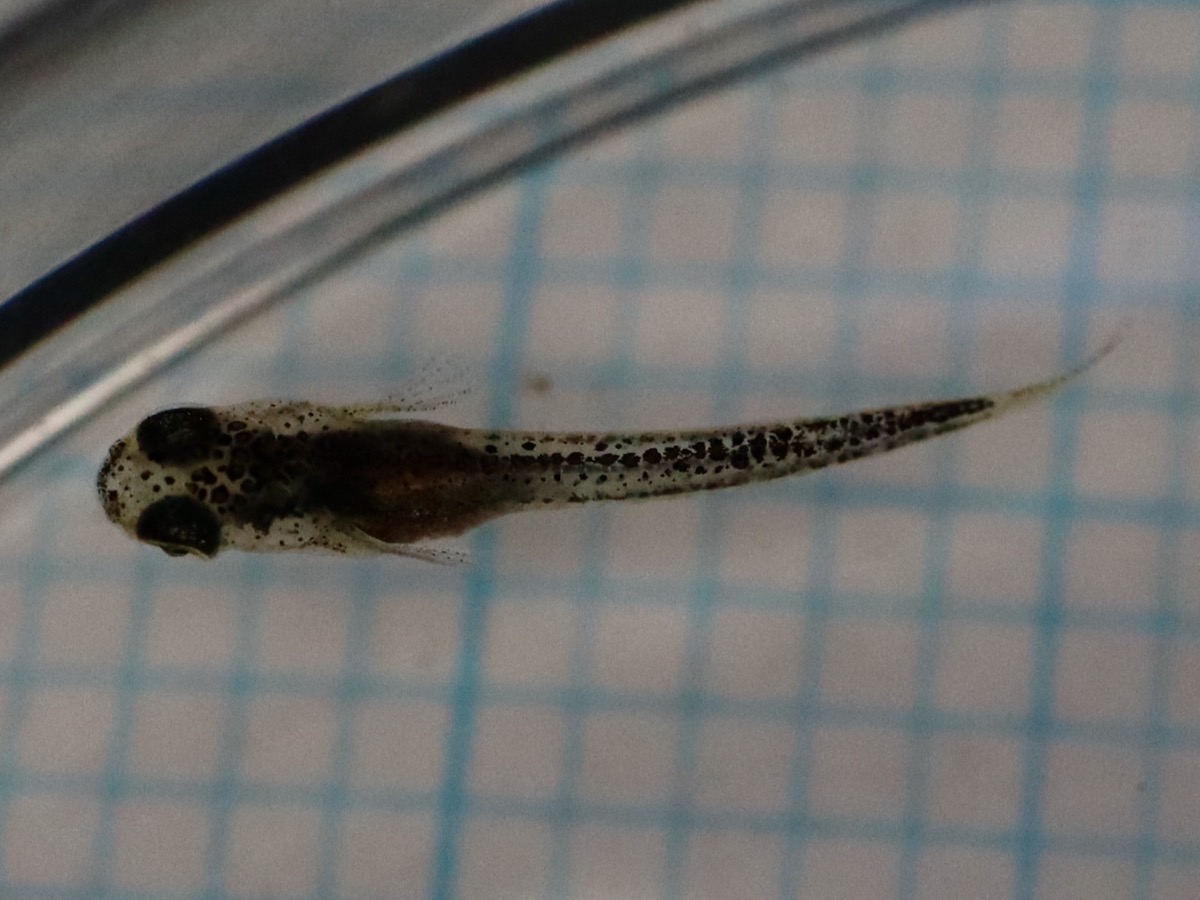
27日目。やっと成長が進んだ気がします。
Day 27. Finally, the growing maybe accelerated.
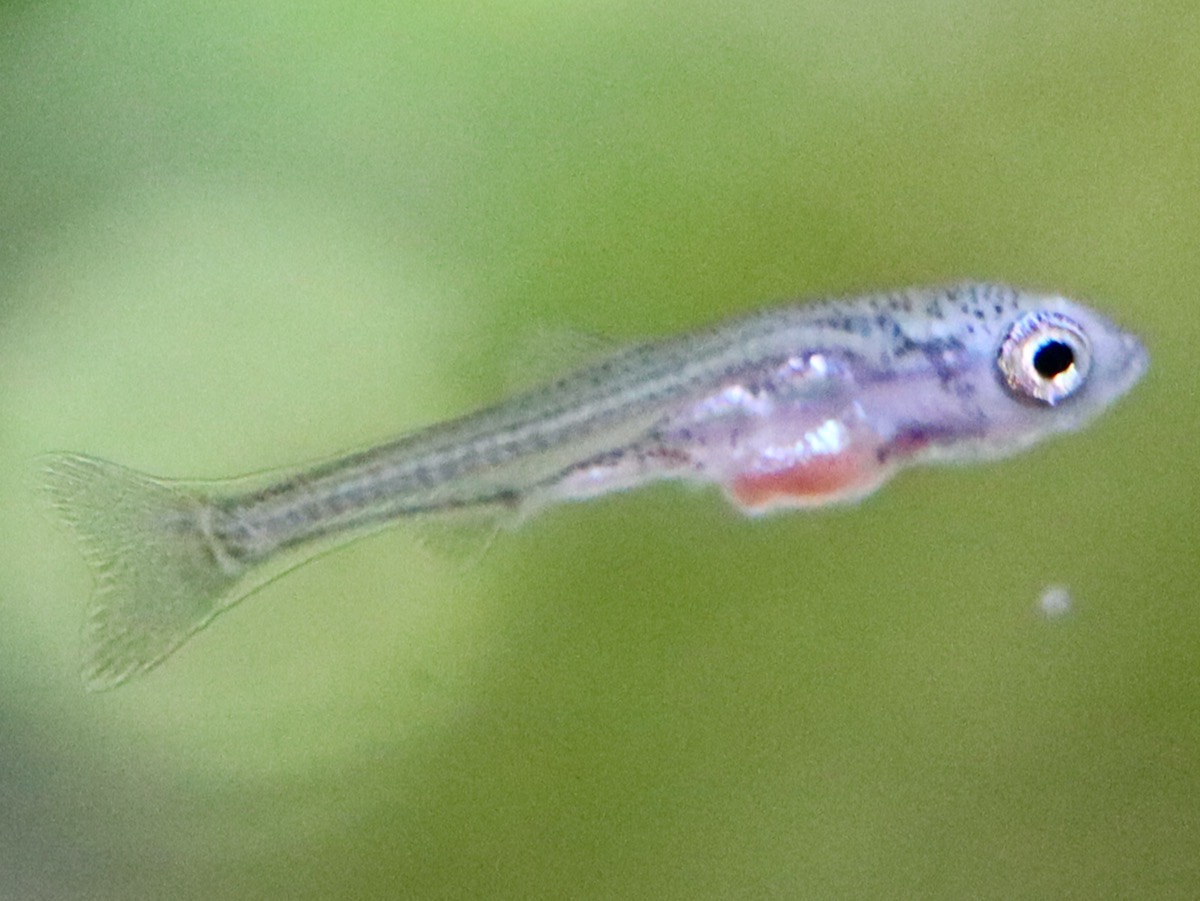
34日目。市販の稚魚用のエサを食べてお腹が膨らんでいます。
Day 34. The belly is full of a baby fish food.
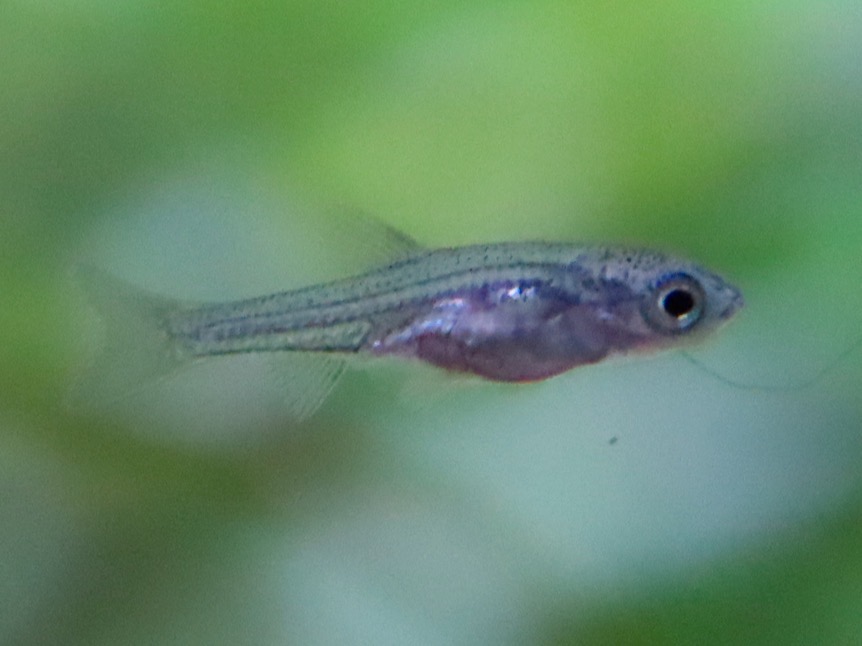
41日目。Day 41.
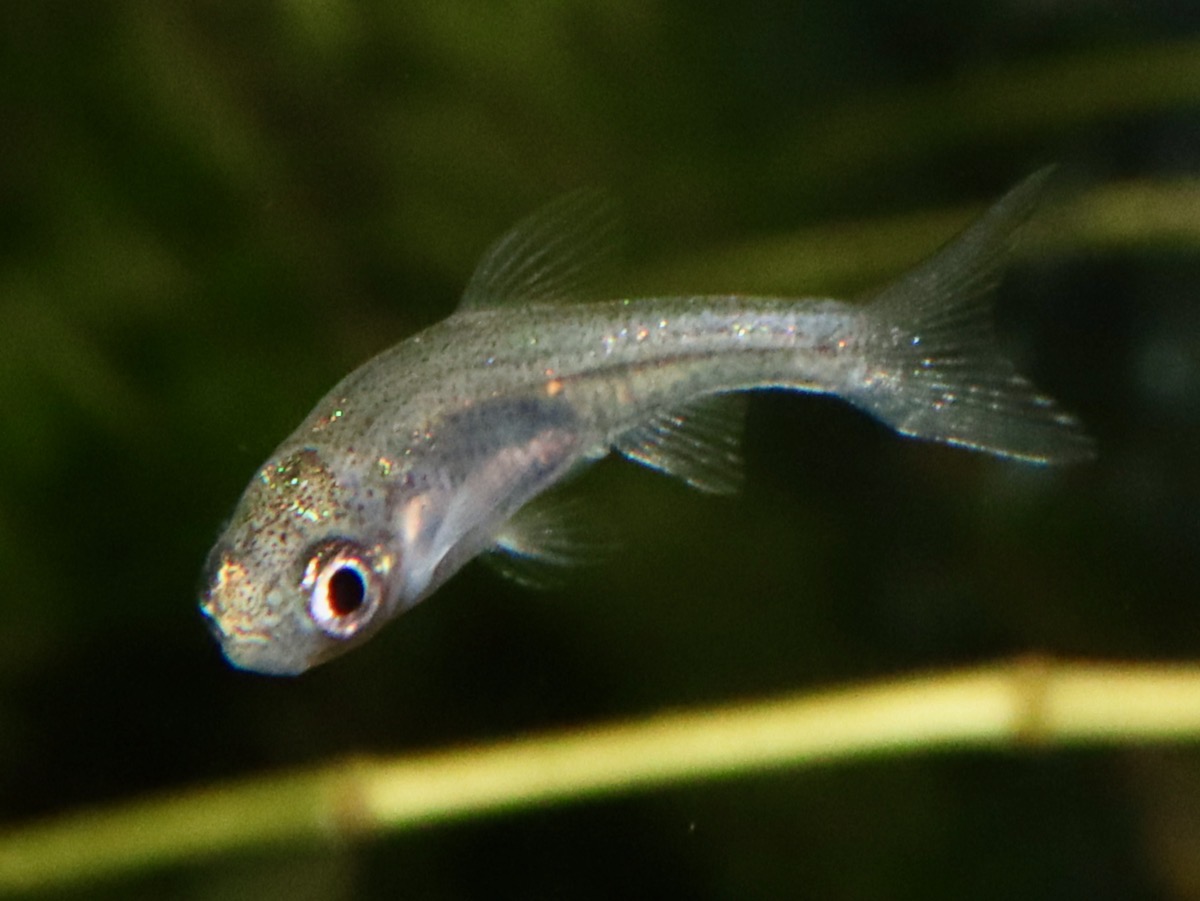
54日目。Day 51.
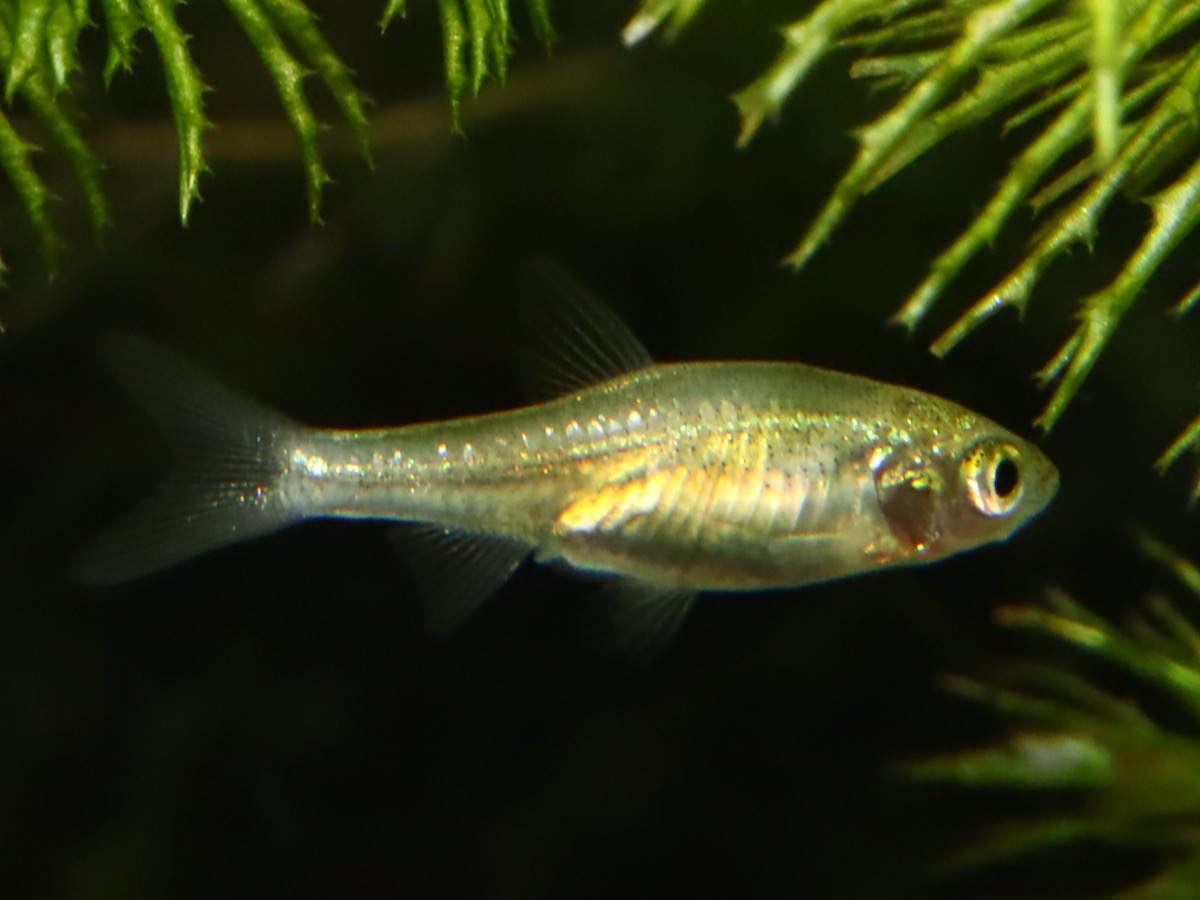
62日目。Day 62.
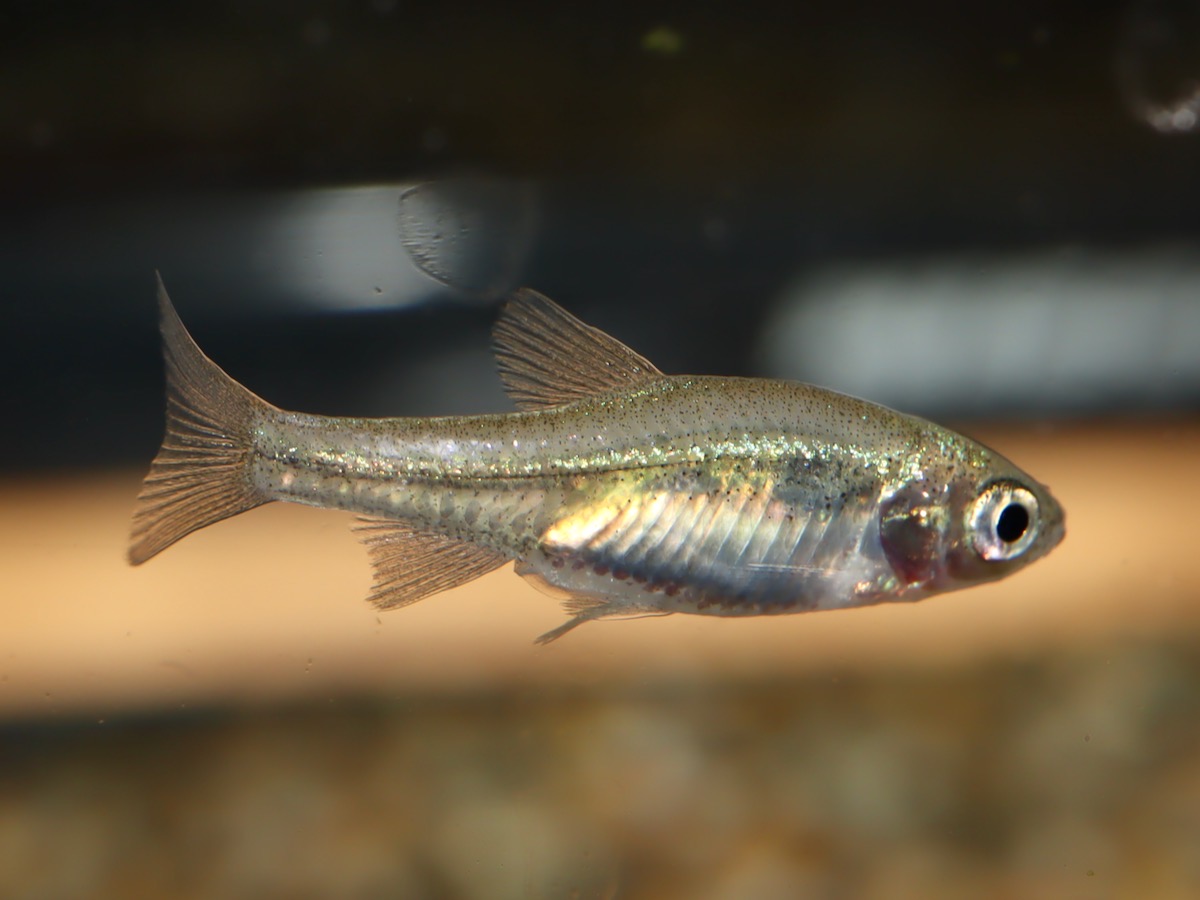
69日目。Day 69.
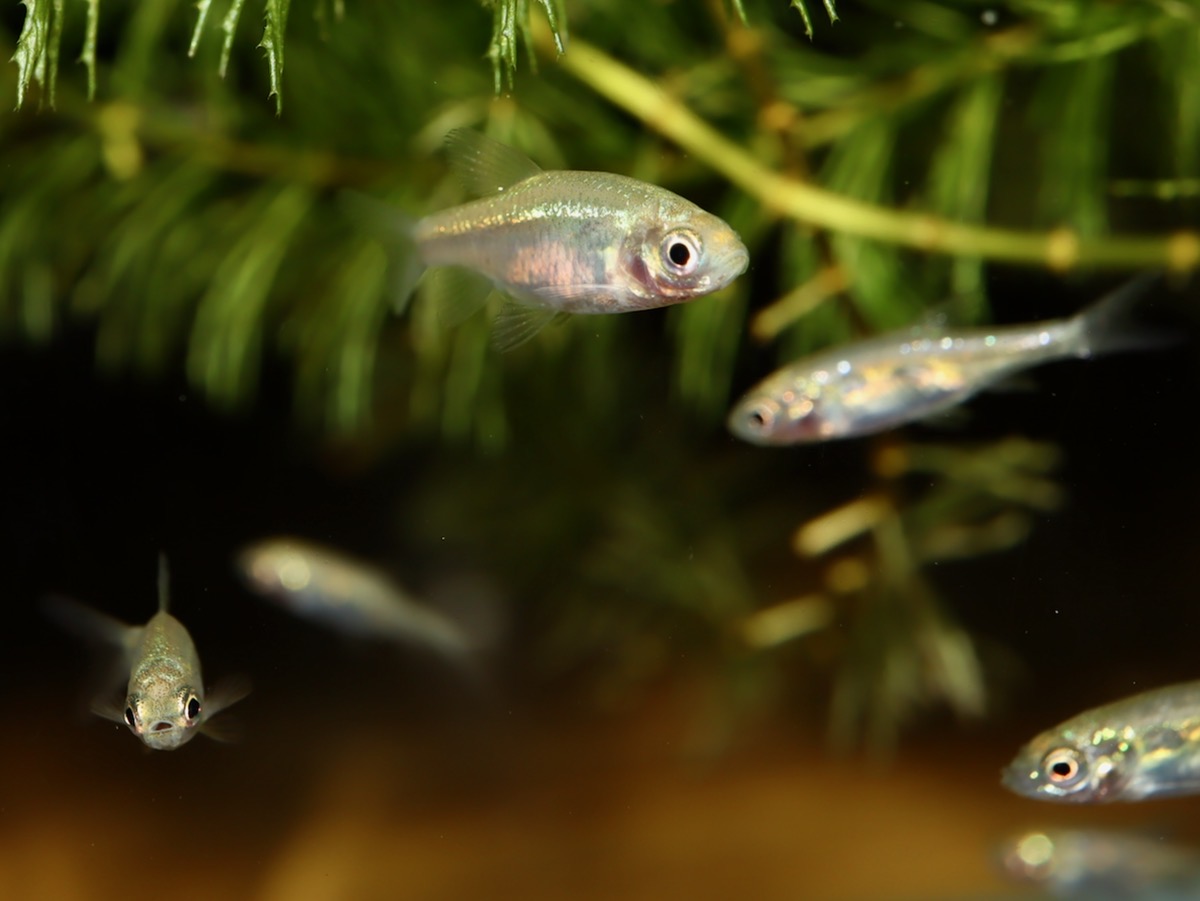
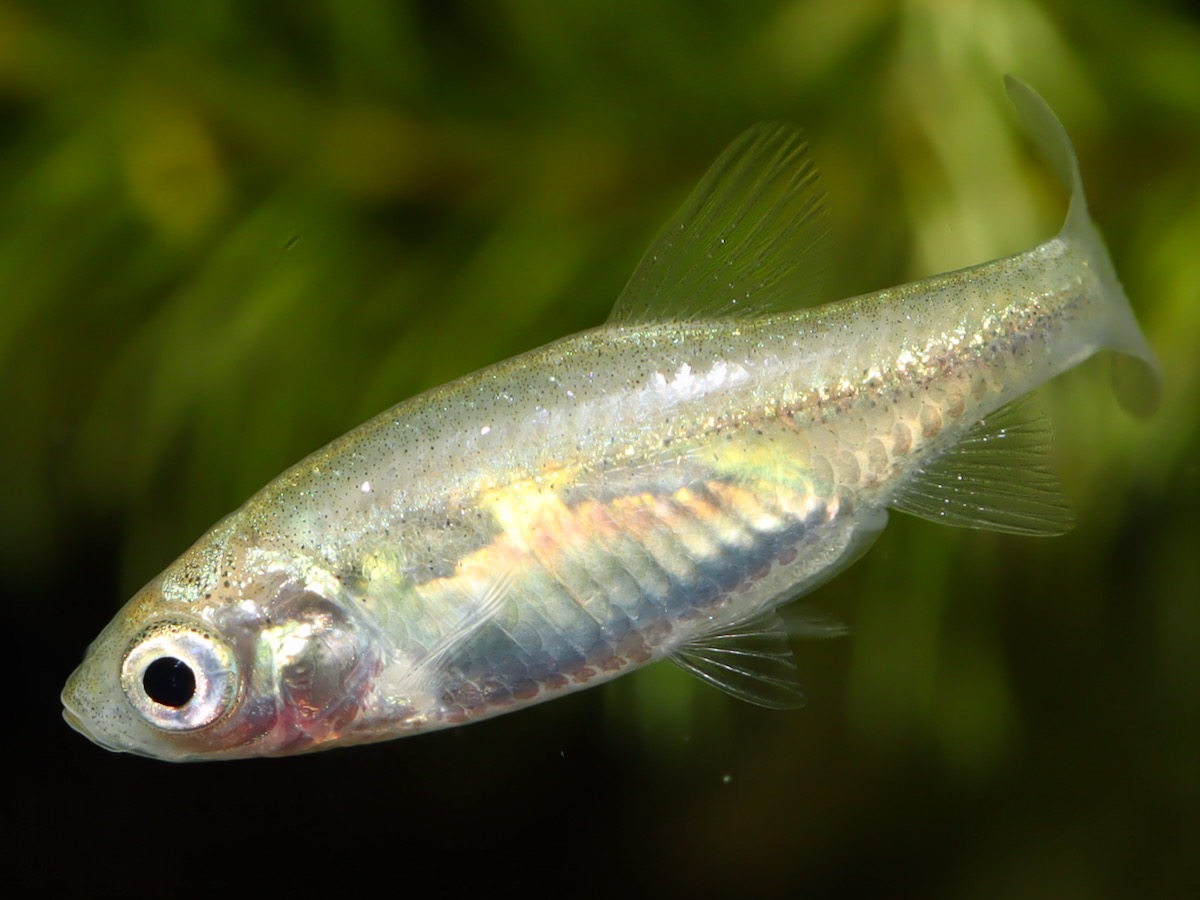
75日目。Day 75.
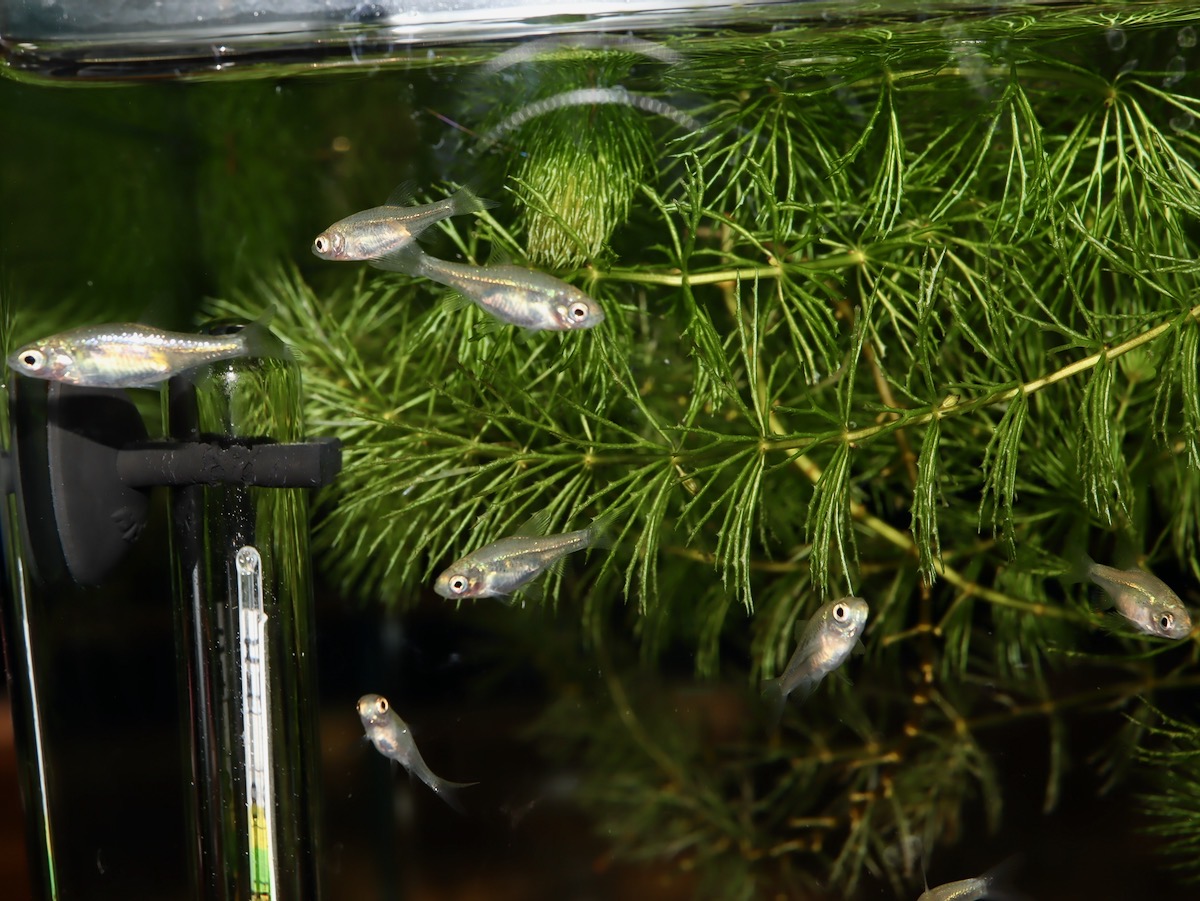
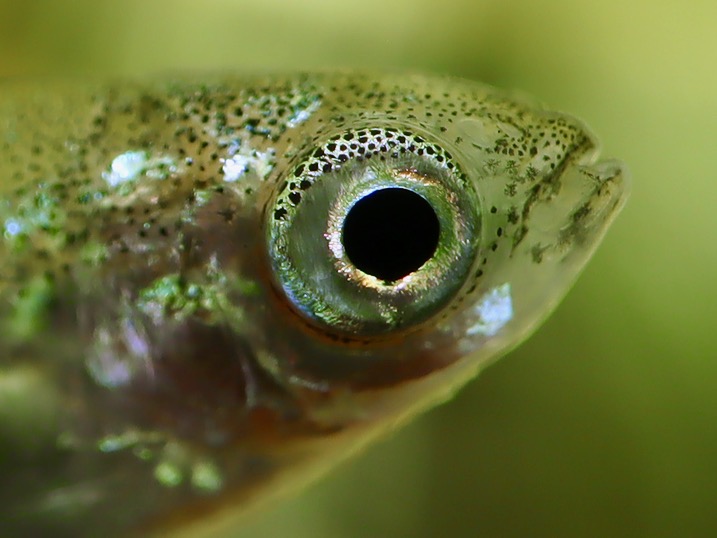
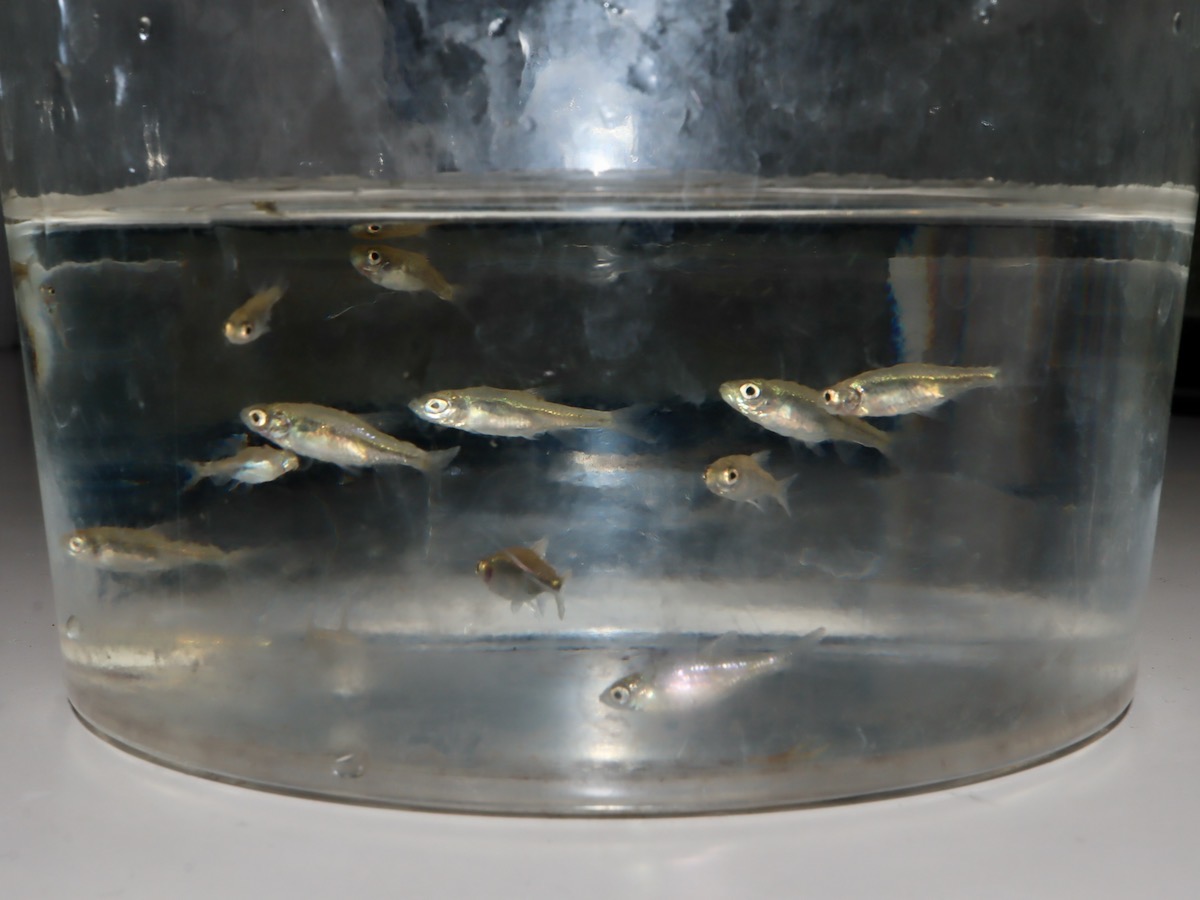
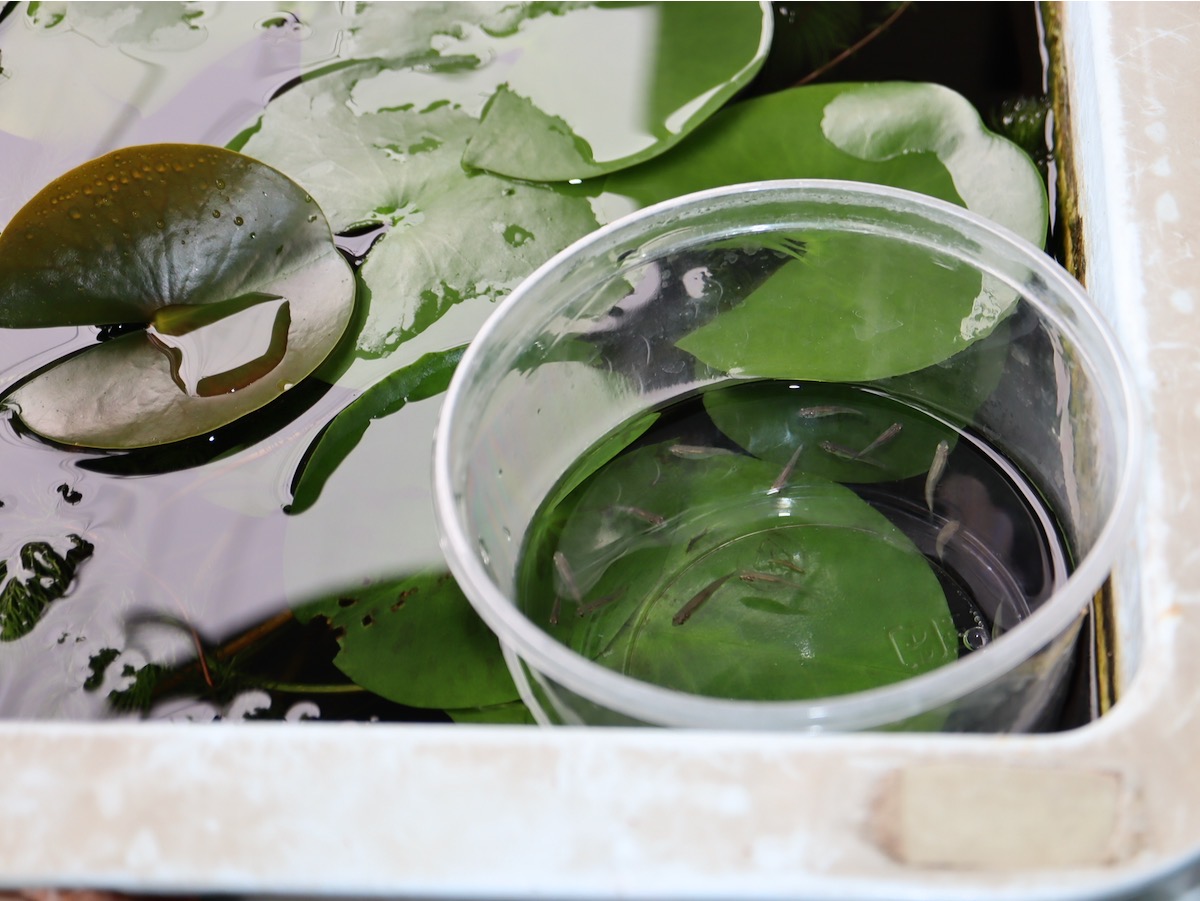
82日目、9月末、屋外で越冬させるため、屋内との温度差があまりない今のうちに外へ移動。ここまで育ったのは十数匹です。本種は2020年2月10日「種の保存法」で「特定第二種国内希少野生動植物種」に指定されました。今まで通り自分で飼い続ければ問題ないようです。
Day 82, at the end of Sep, I moved the fish into the tank outdoor at this point when outside and inside temperatures are not so different yet, thinking that they had better overwinter outside.
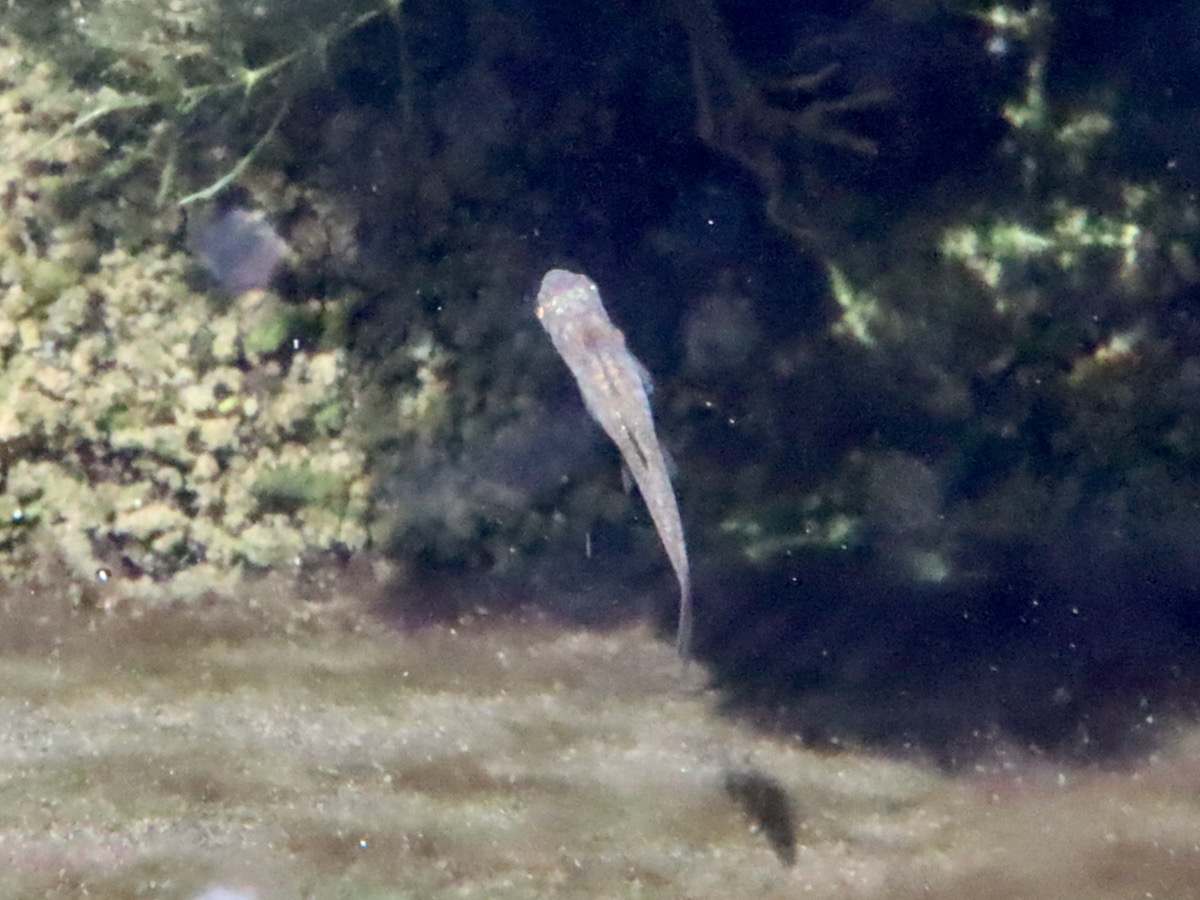
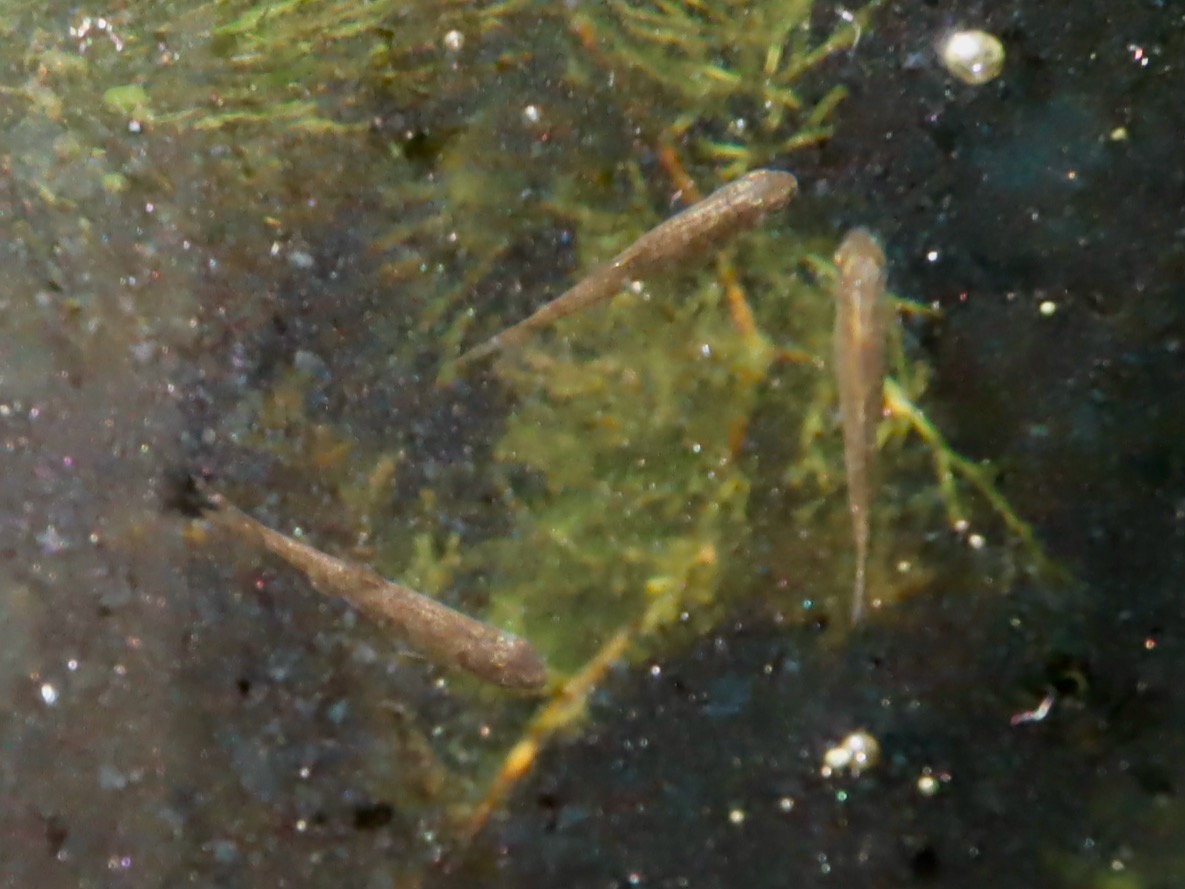
2021年3月、無事に冬を越し日光浴をする幼魚。
Mar. 2021. After overwintered safely, they came out for sunbathing.
カワバタモロコの水槽内繁殖 2022
Breeding of Hemigrammocypris rasborella (KAWABATAMOROKO) 2022
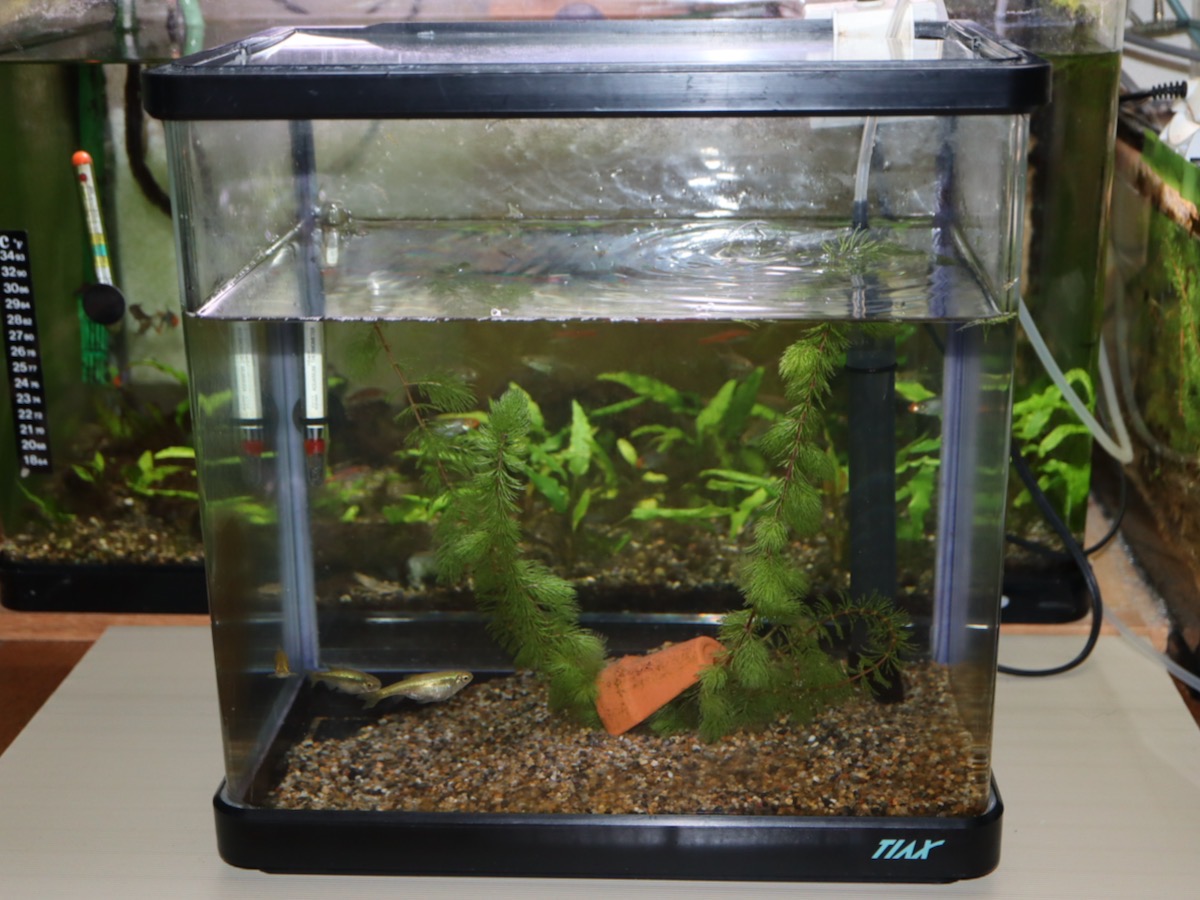
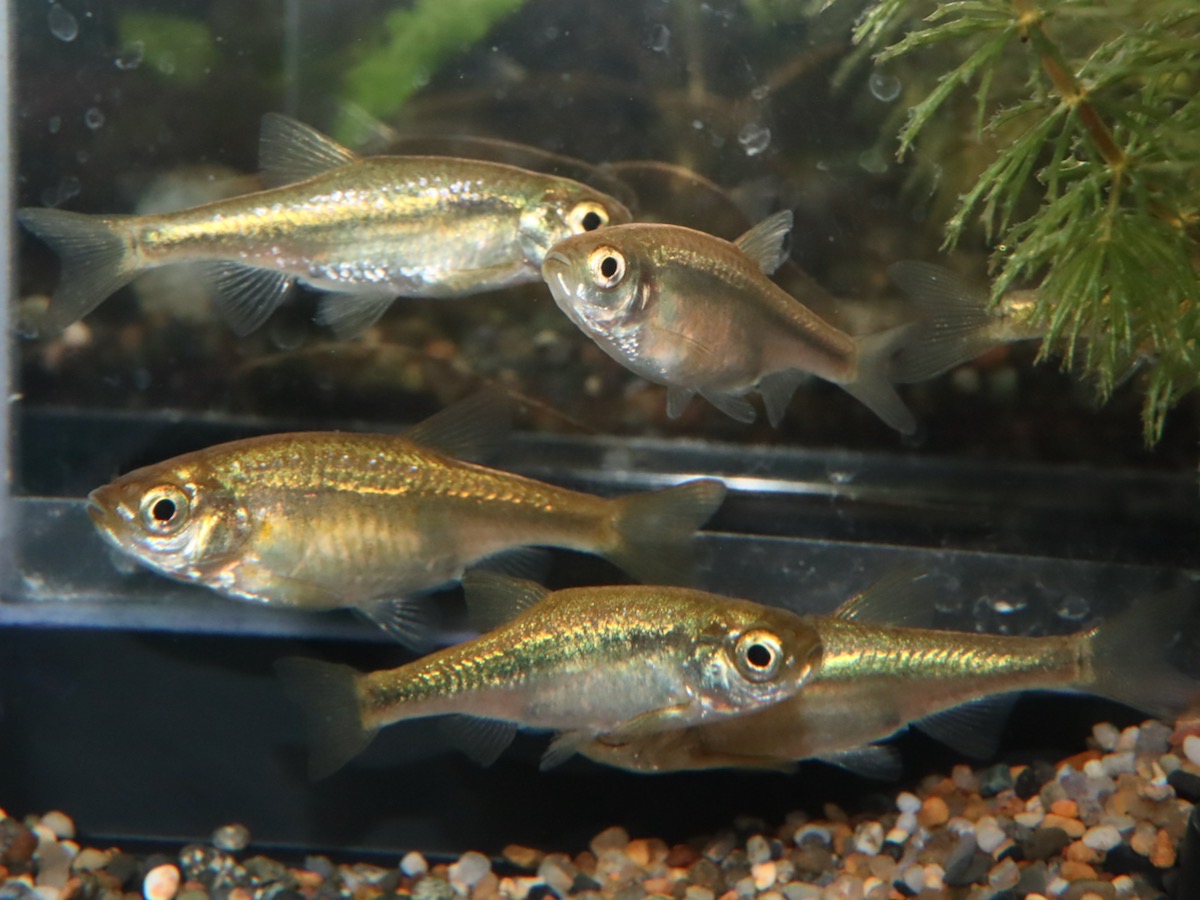
2022年6月、サイズから判断して上の2020年生まれと思われる魚を親魚にして水槽内で繁殖させました。
Jun. 2022, I bred the fish in a tank again. I presume that the parental fish were born in 2020 as above, judging by their body sizes.
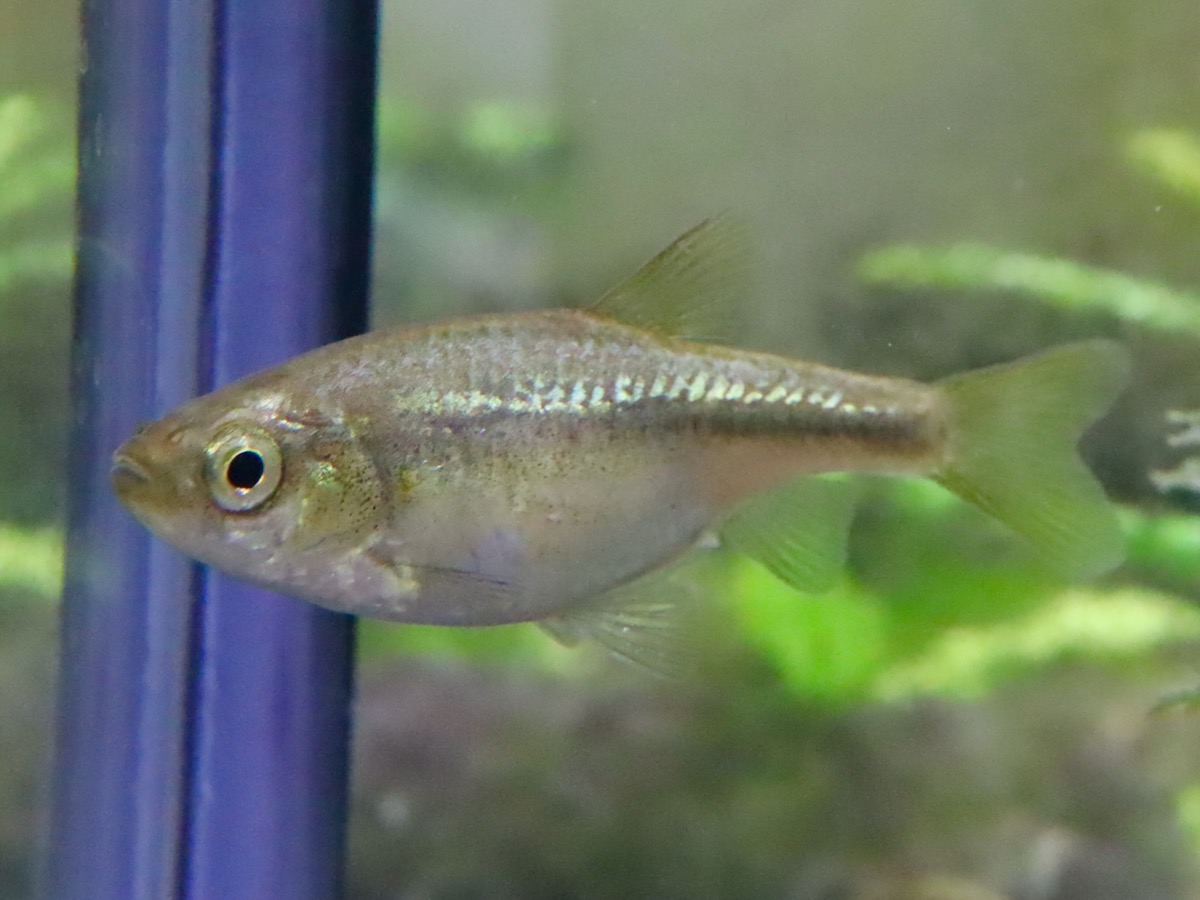
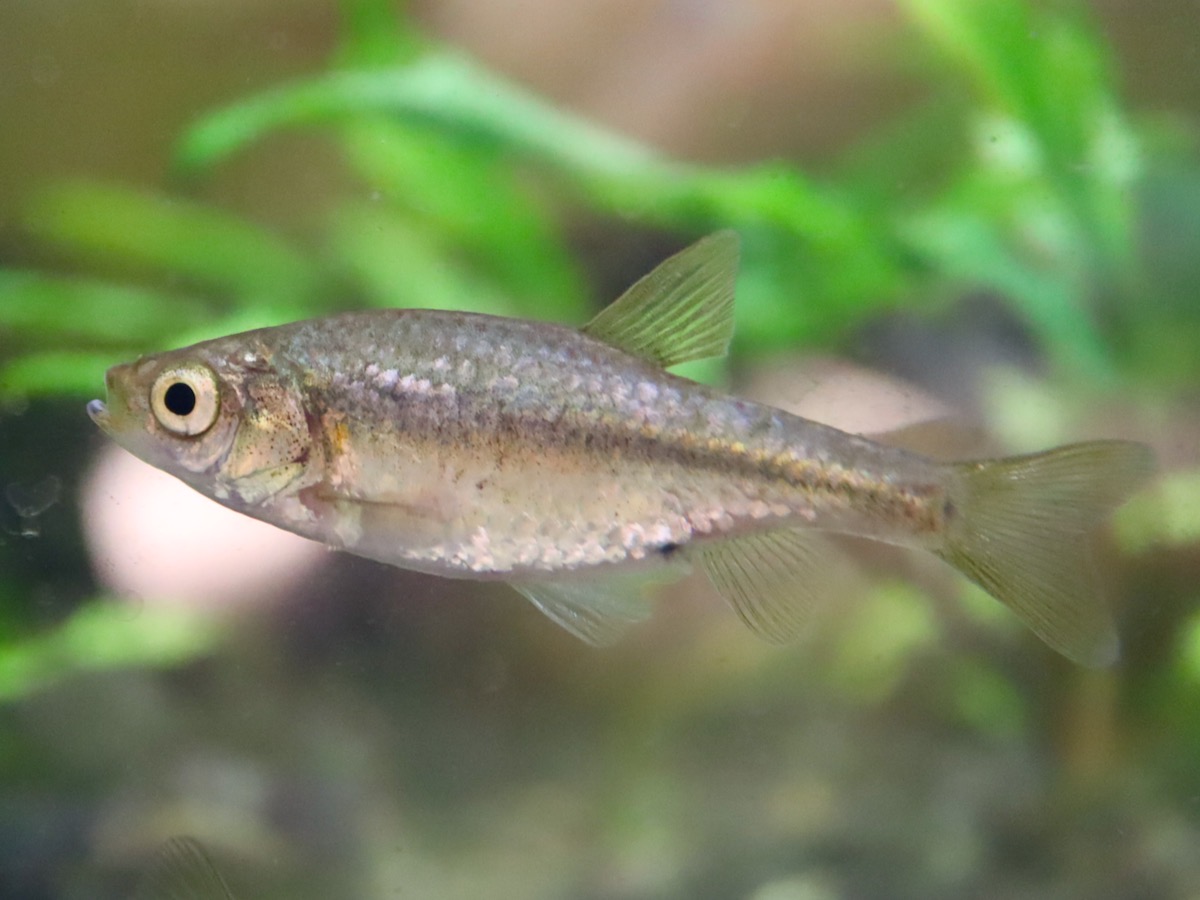
左は産卵前日に偶然撮影したメス。右は産卵直後の同一個体。
Left, the female in the previous day of the spawning; right, just after the spawning.
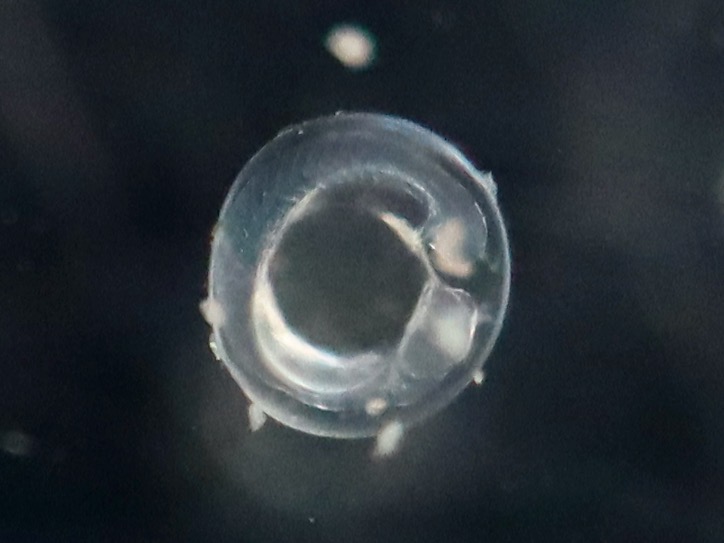
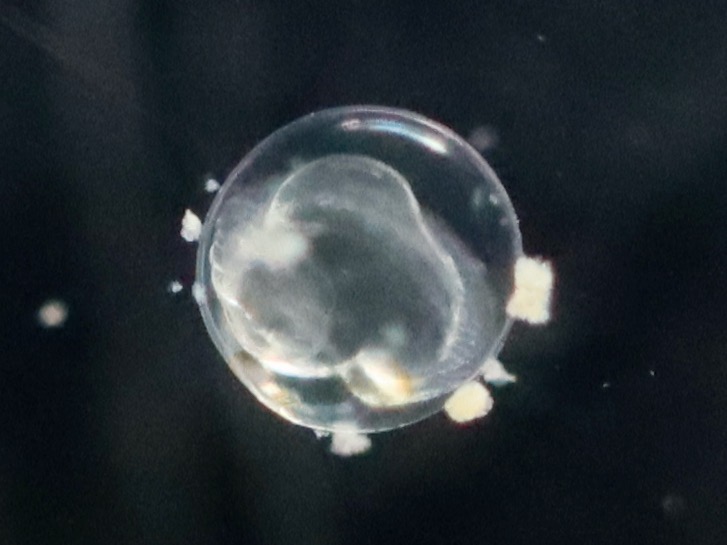
産卵当日(0日目)の卵ですが、かなり発生が進んでいるようです。一部は先に産まれていたのでしょうか。
An egg in the spawning day (day 0), but it has developped unexpectedly. I wonder some of the eggs were born before.
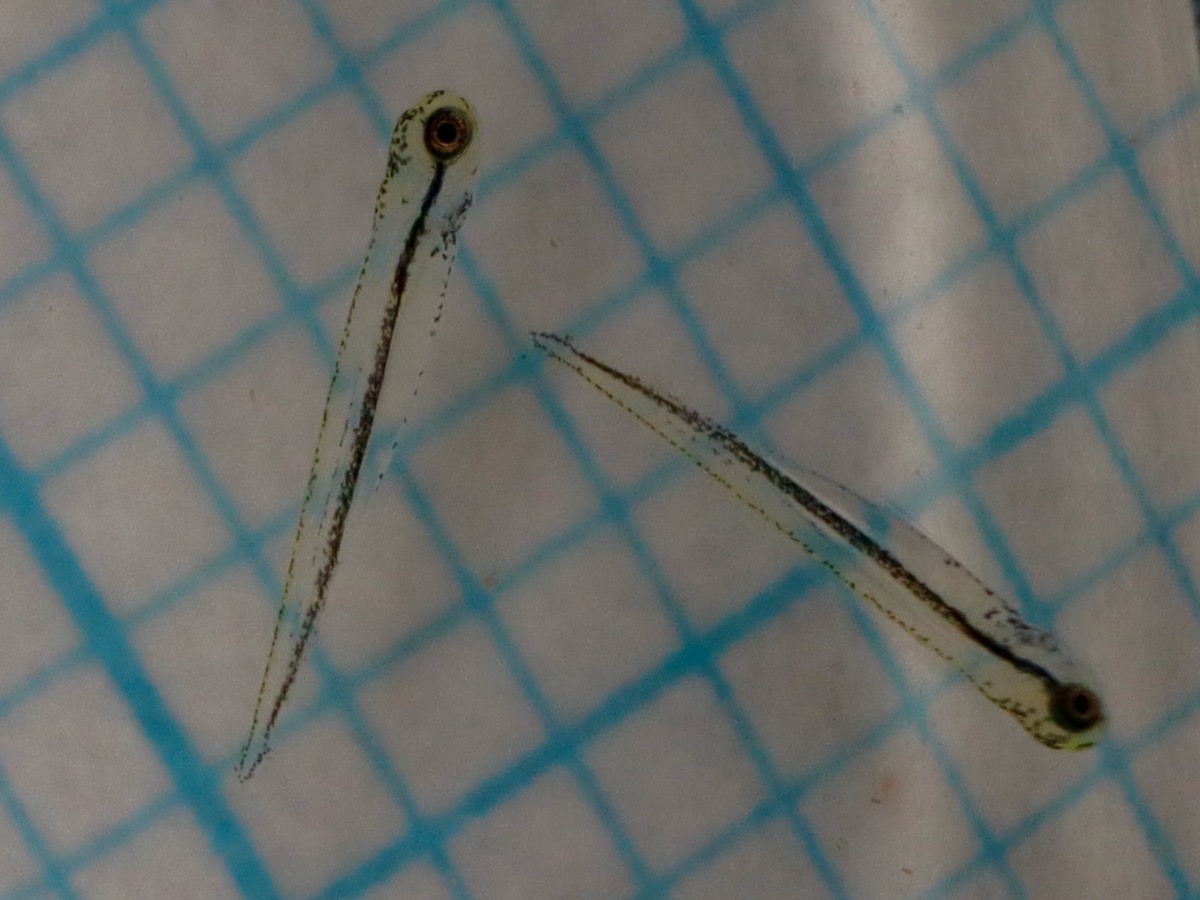
2日後。Day 2.
4日後。Day 4.
4日後。Day 4.
5日後。Day 5.
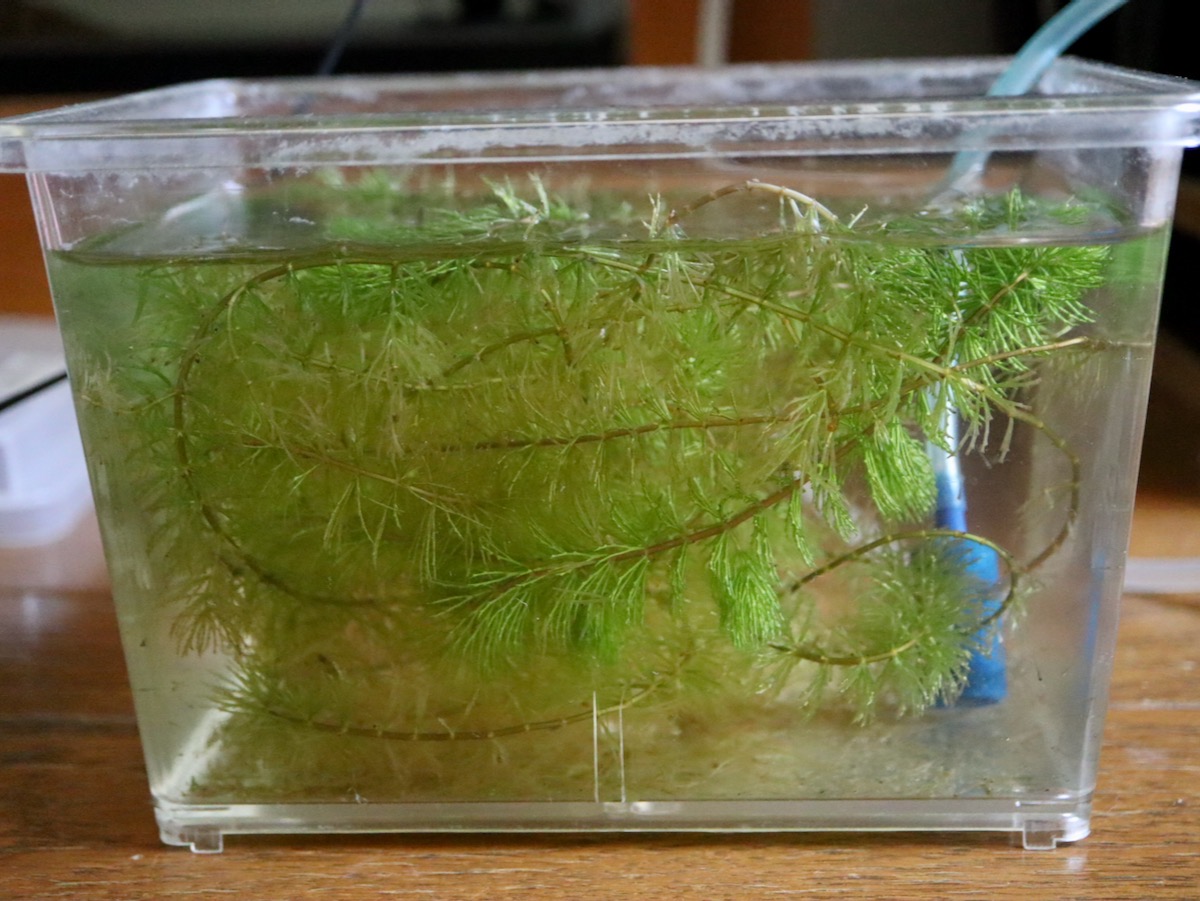
上の2022年1回目の産卵の後には、卵が付着した水草をプラケースに移して、未産卵の親魚は産卵用水槽に残しました。
After the first spawning of 2022, I transfered the water plant with the fish eggs into a small plastic tank, and left fish not laid yet in the breeding tank.
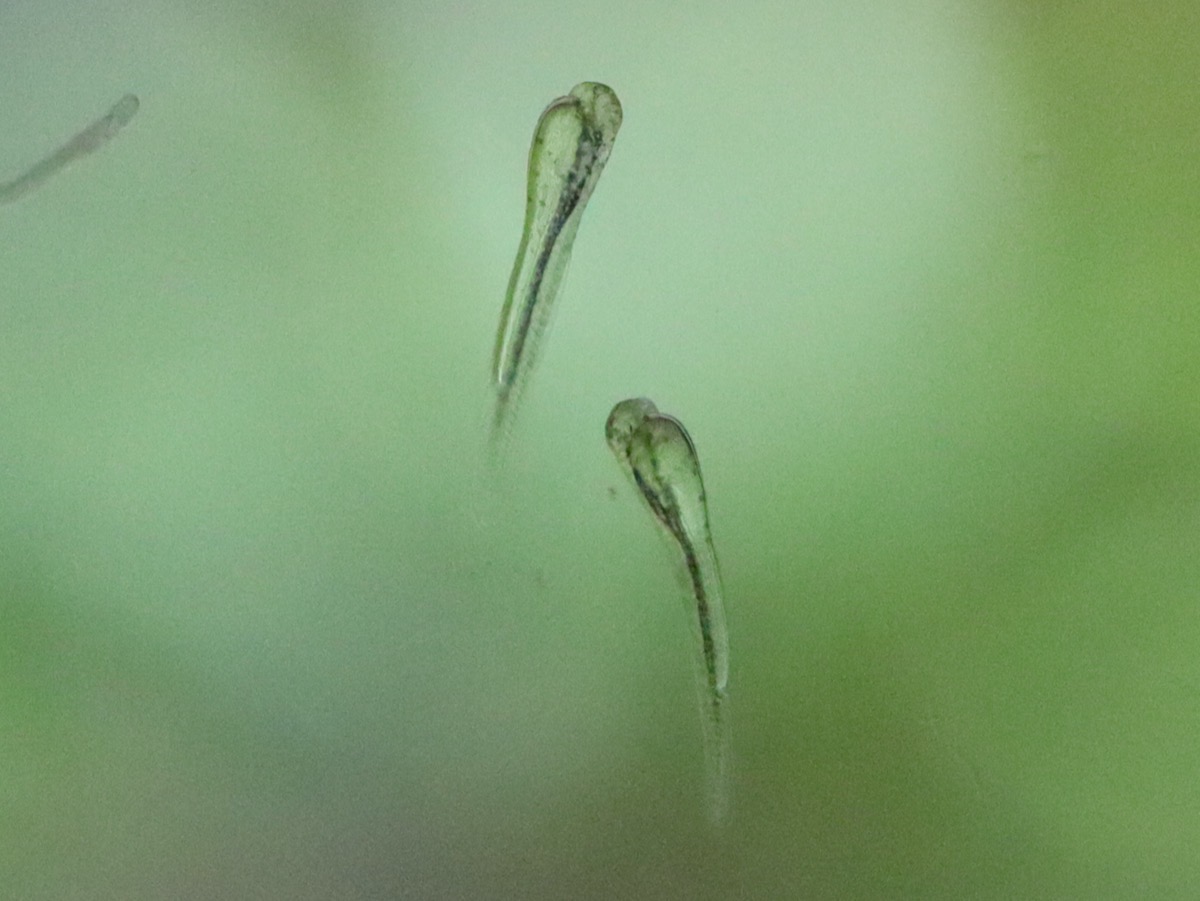
2022年2回目の産卵1日後、ガラス面に胚が付着しています。やはり、発生は速いようです。
One day aftet the second spawning in 2022, embryos are on the glass of the tank. I noticed the development is fast as above.
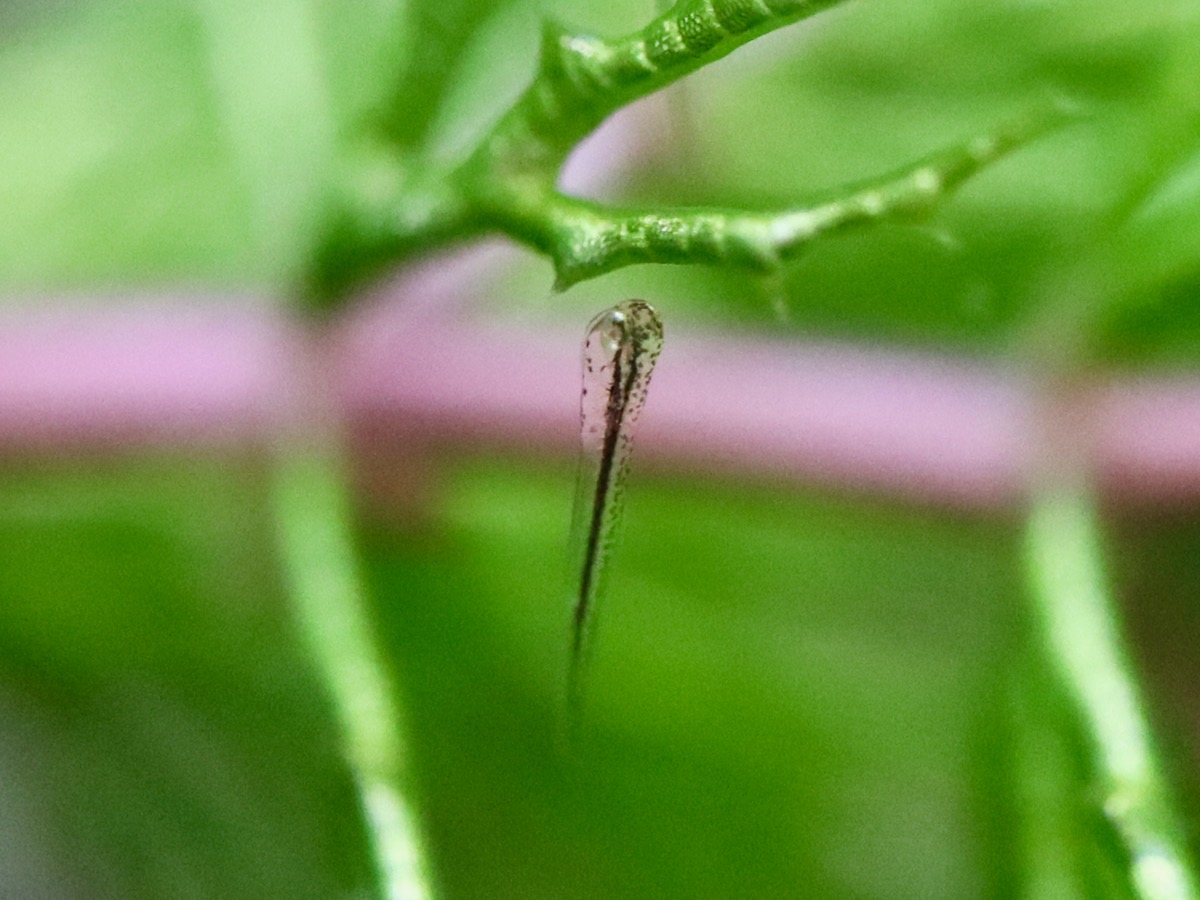
2日後。水草に胚が付着しています。見えませんが、細い糸のようなものでぶら下がっているかのような動きをします。
Two days later. An embryo hangs down from a water plant. It moves as if it is hung by a thin string.
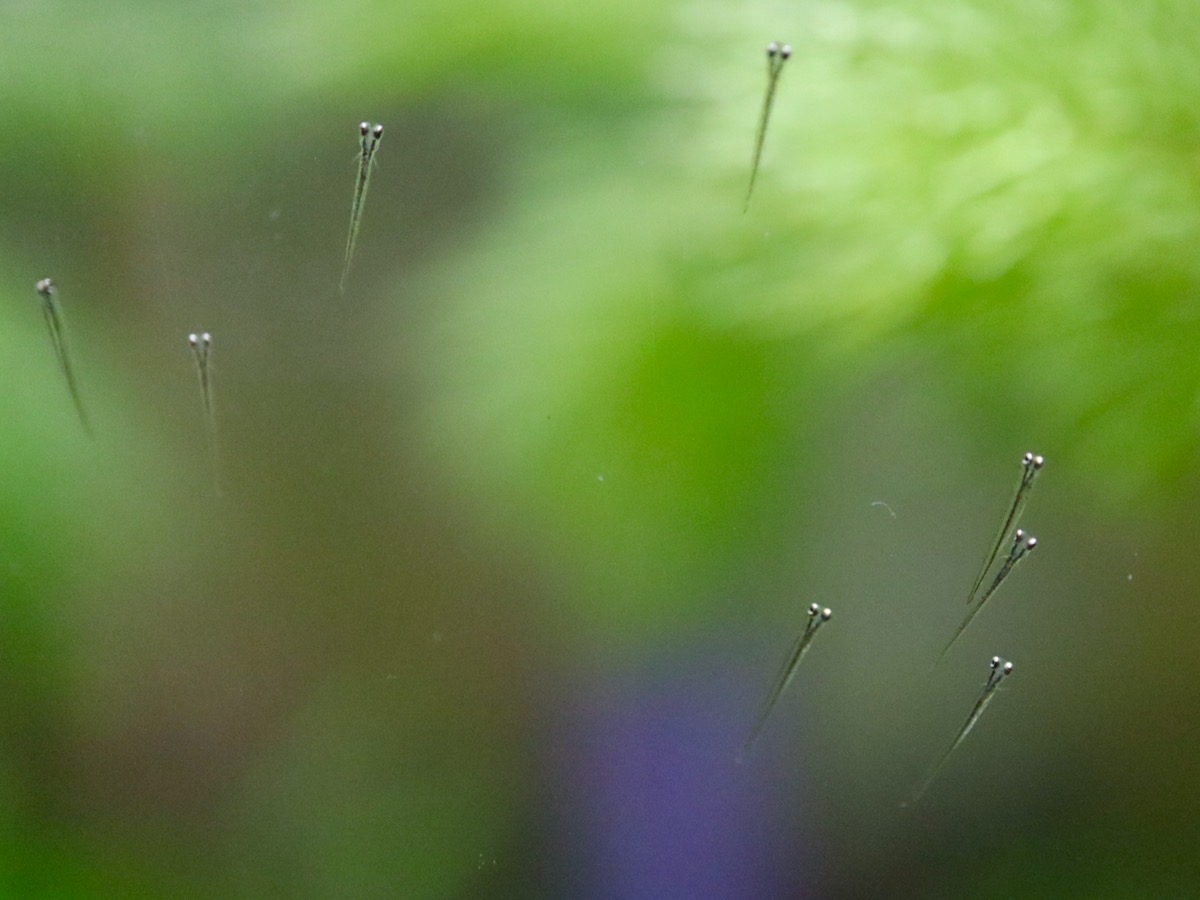
3日後。無数の稚魚がガラス面に付着しています。
Three days later. Many fry attach on the glass.
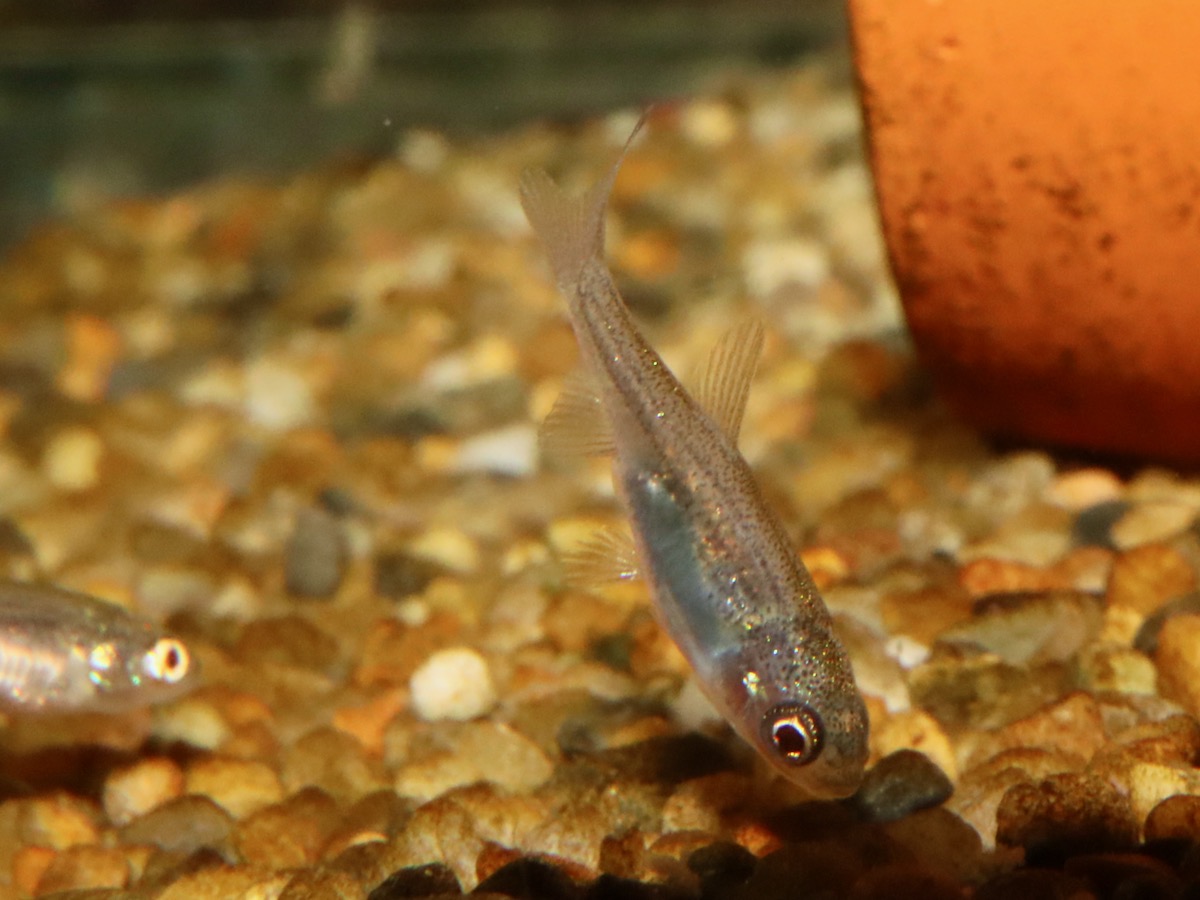
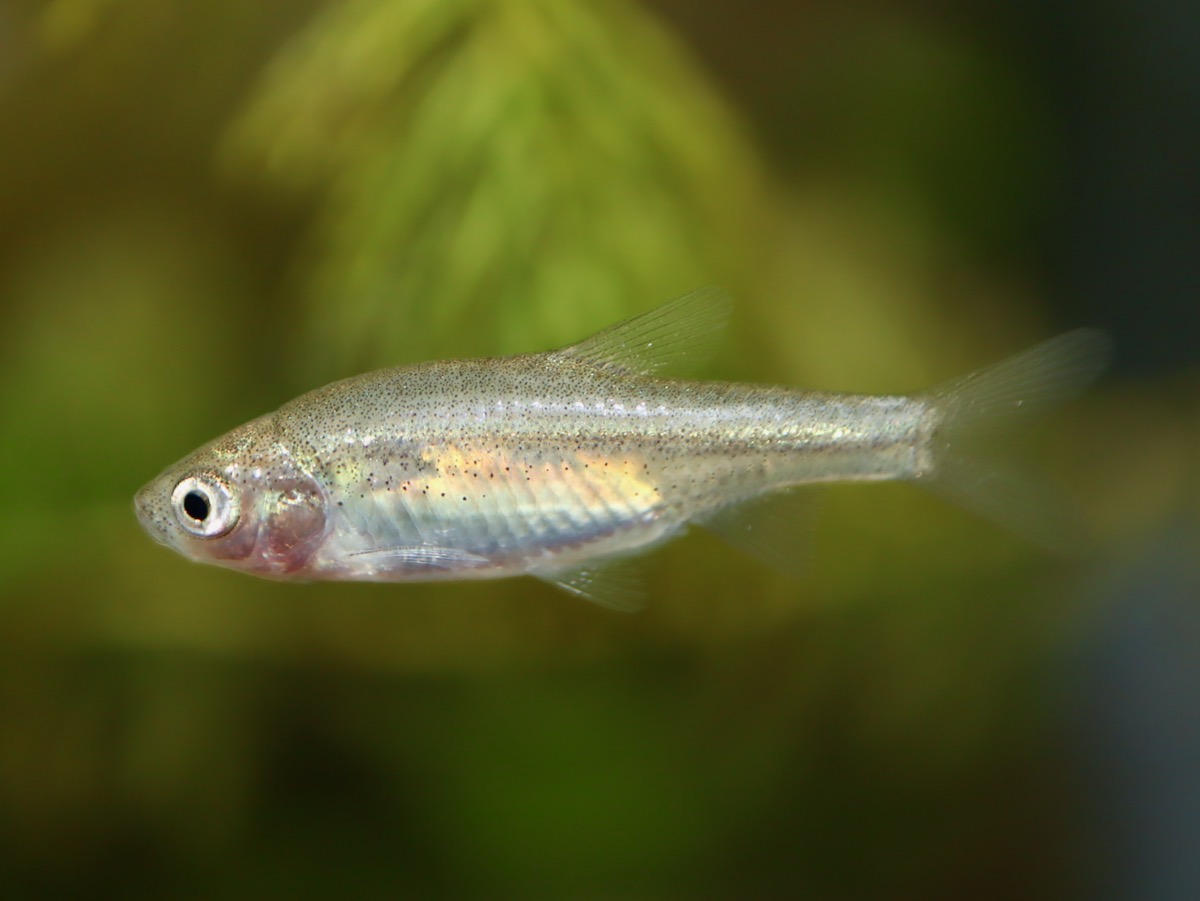
約1ヶ月、成長しています。
About one month after the birth, they are growing.
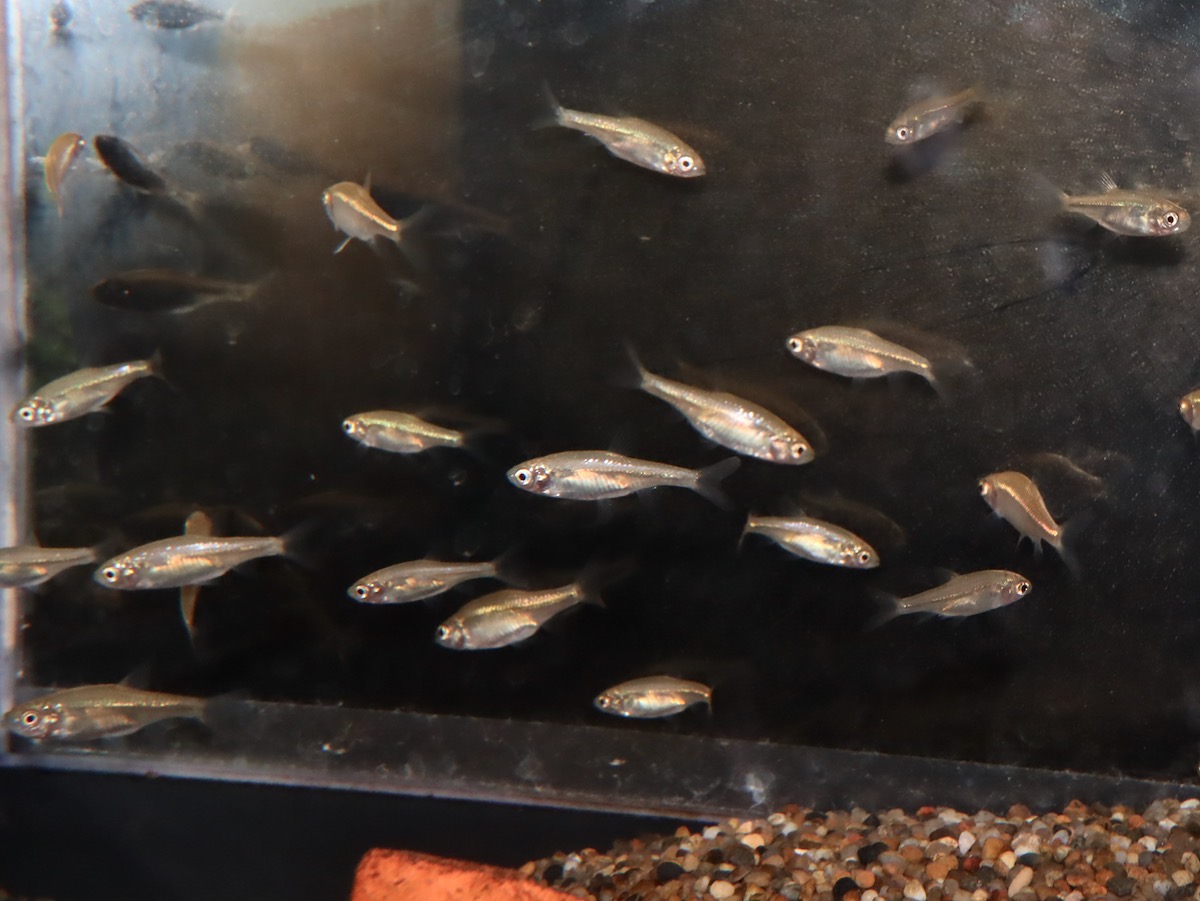
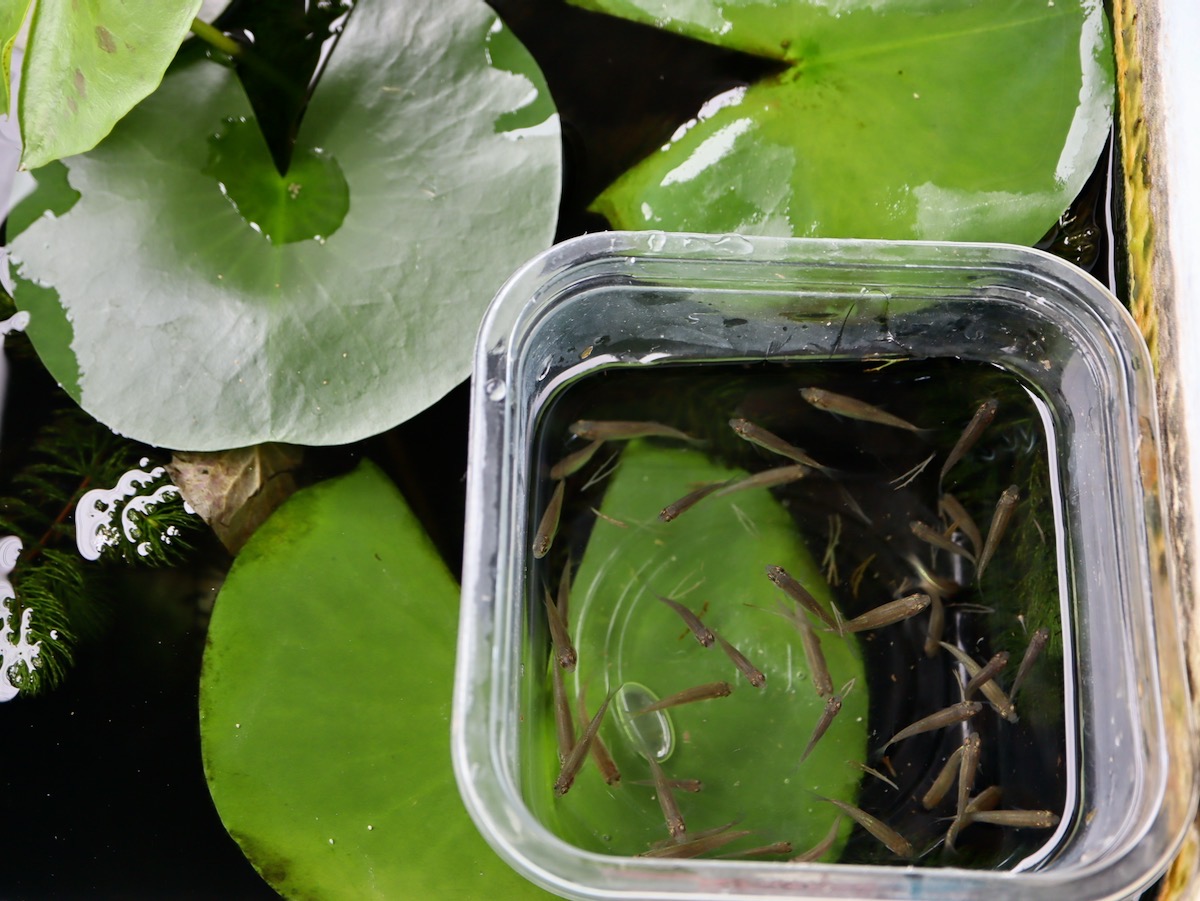
約3ヶ月、外の飼育容器に移しました。
About three months after the birth, they were moved into the tank outside.
カワバタモロコの水槽内繁殖 2024
Breeding of Hemigrammocypris rasborella (KAWABATAMOROKO) 2024
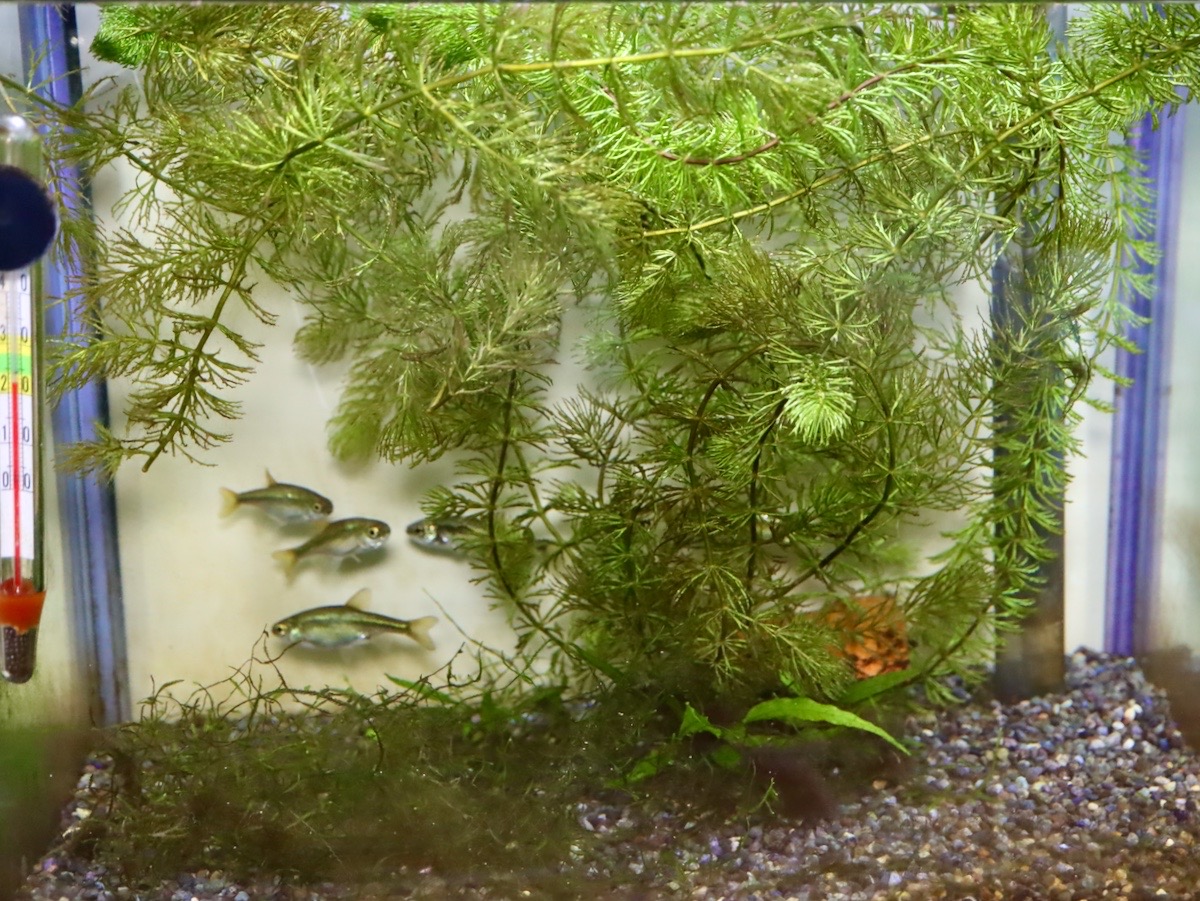
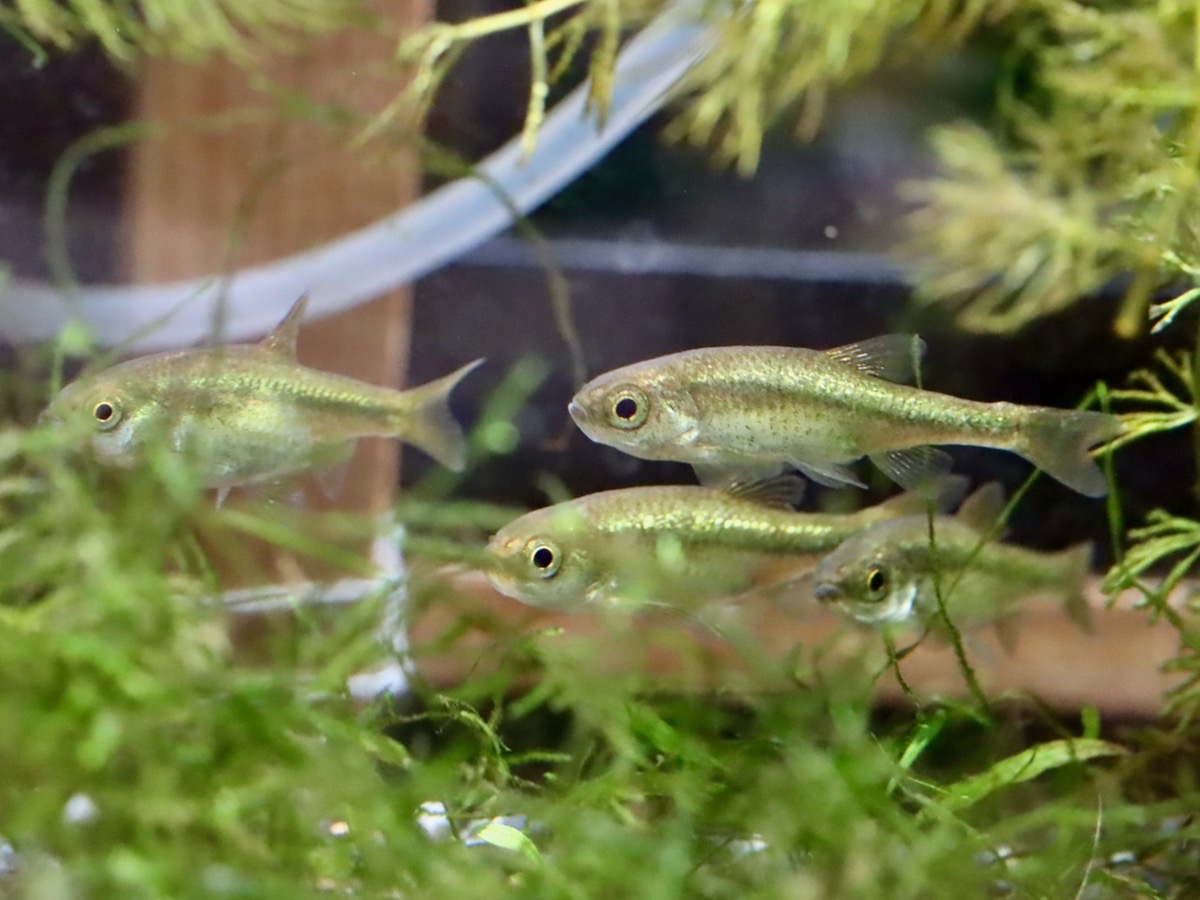
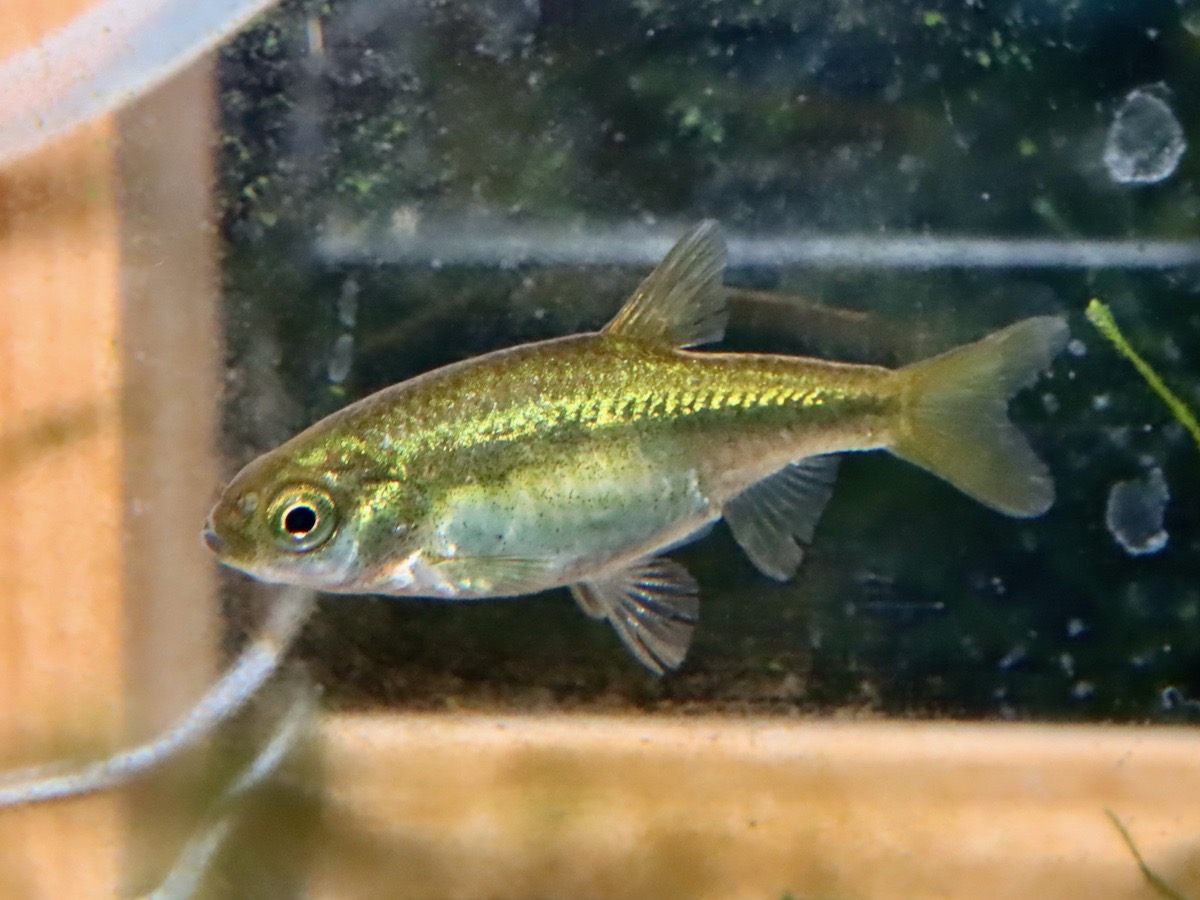
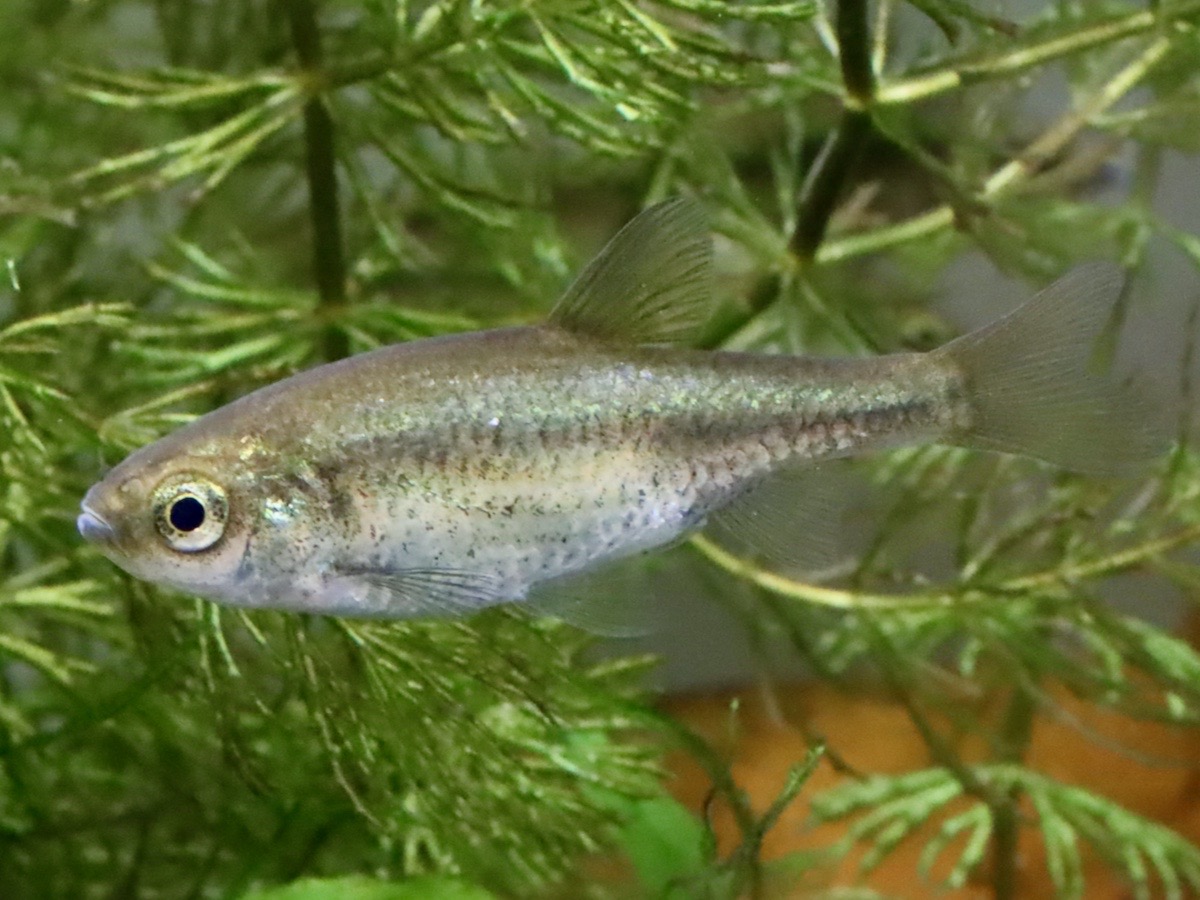
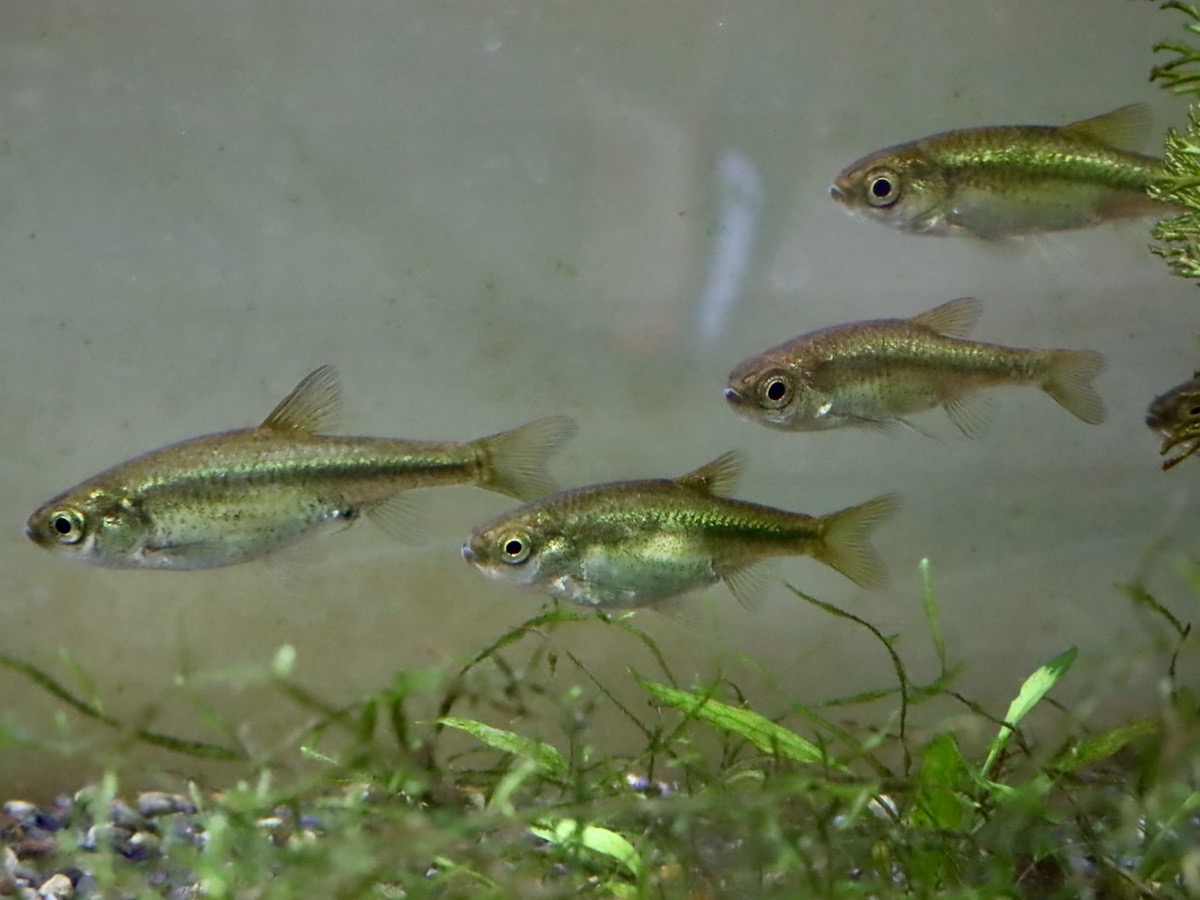
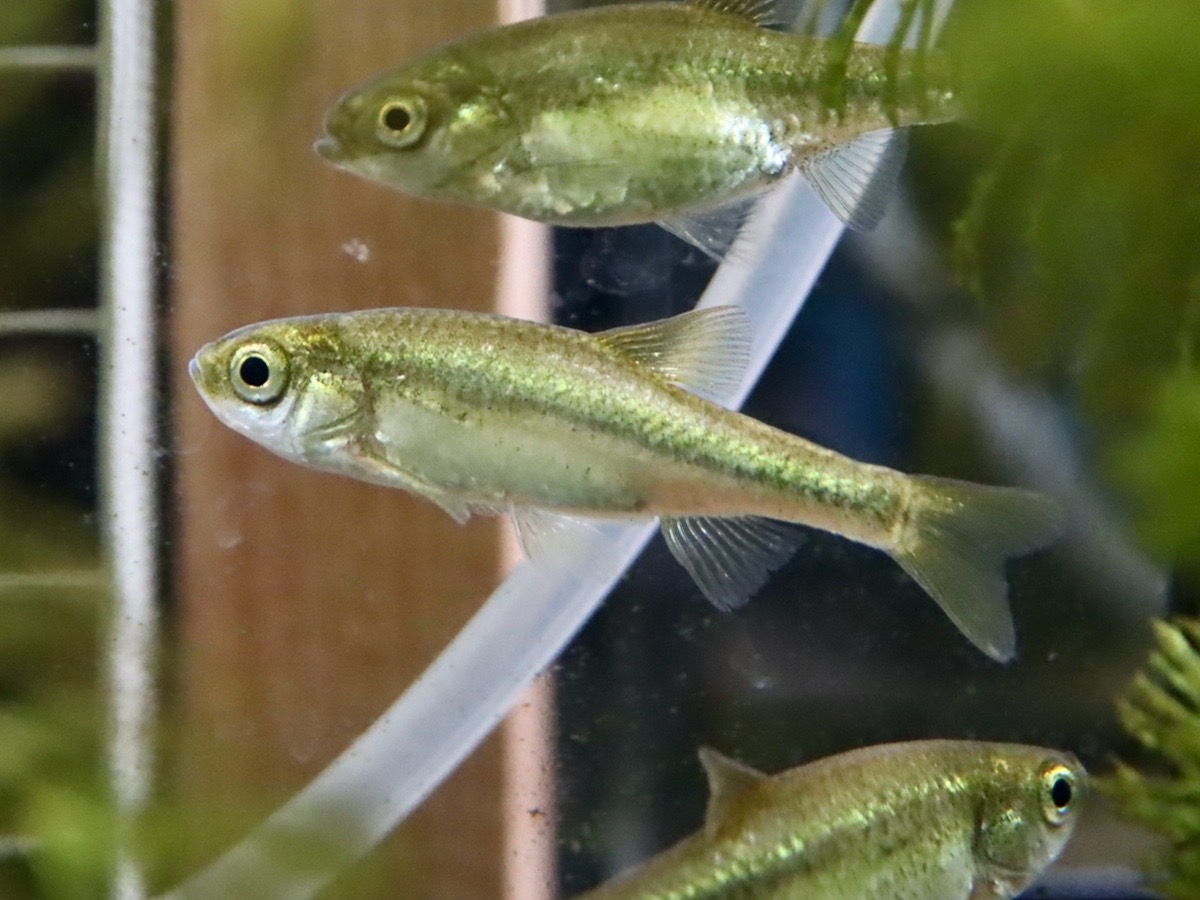
2024年6月、サイズから2022年生まれと思われる個体を親魚にして繁殖の用意をしました。
Jun. 2024, parental fish were selected from those supposedly born in 2022.
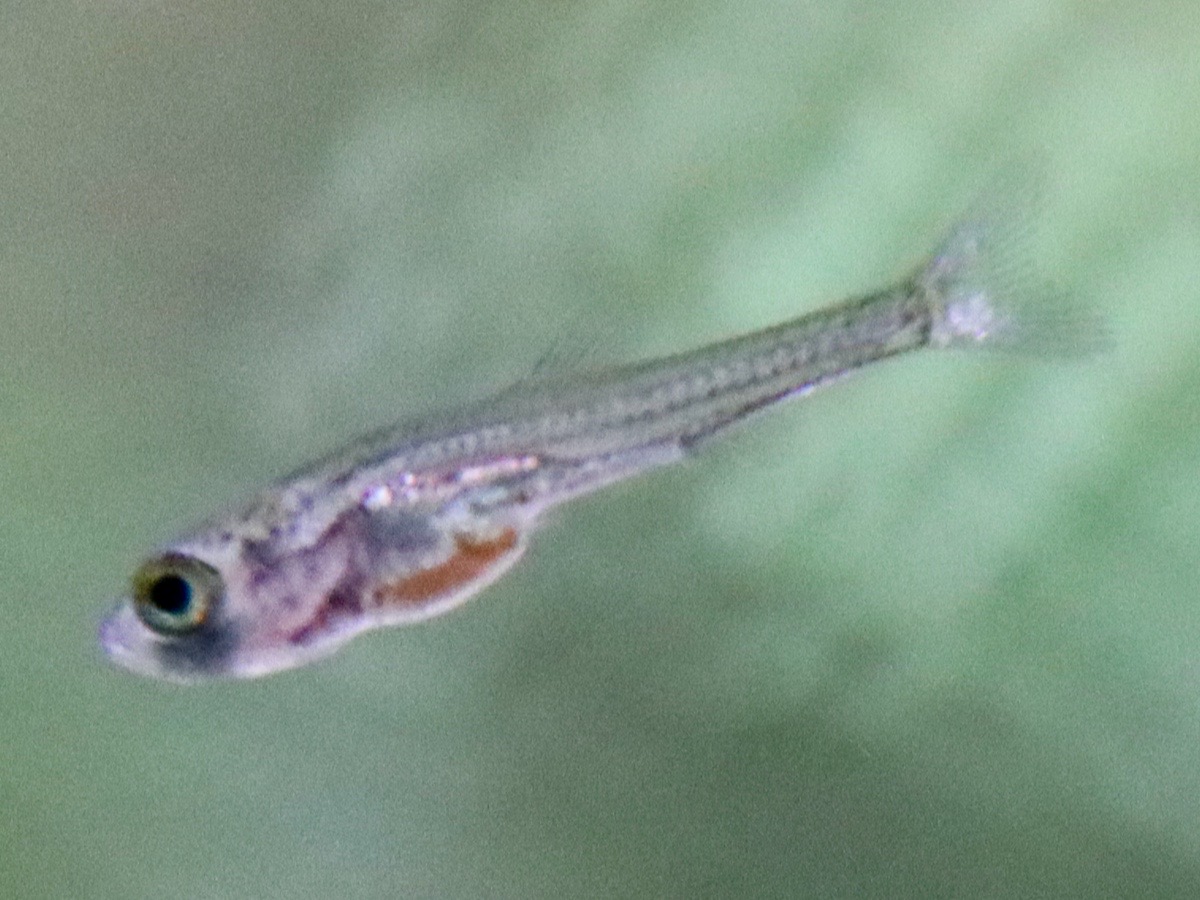
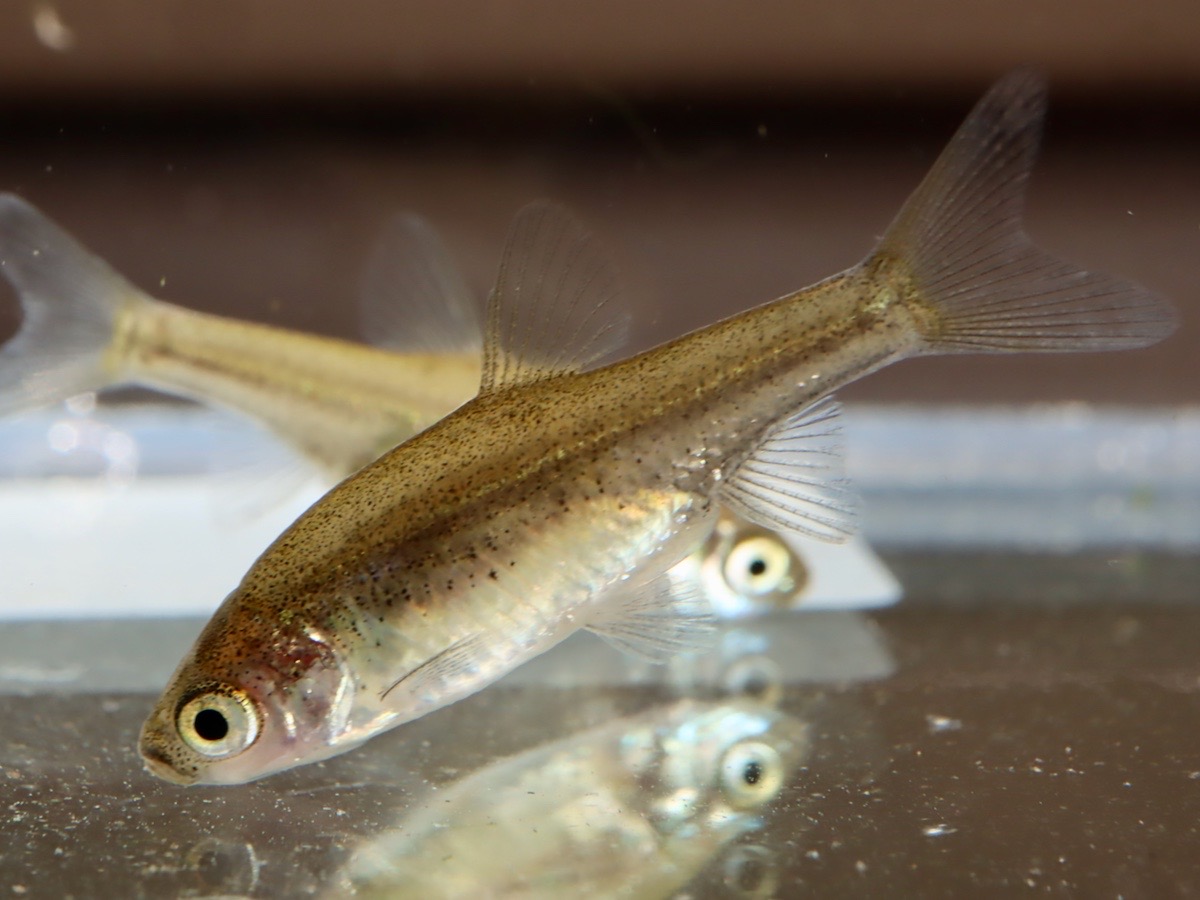
前回までは一度に多数の卵を産みましたが、今回は少しずつ何度も産んでいるようです。いつの間にか稚魚が泳ぎ始めていました。最初の2匹が順調に成長しました。
Previously, the parental fish deposited a lot of eggs at once, but this time they lay small numbers of eggs repeatedly. I found a couple of fry in the breeding tank and they grew safe.
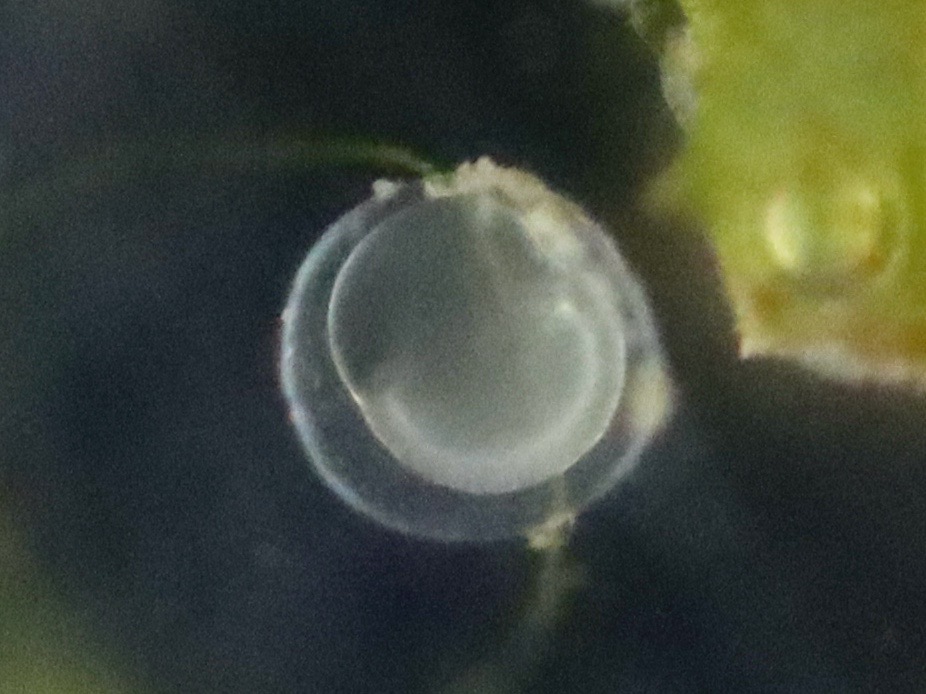
発生が進んだ卵。胚がときどき動きます。
A developing egg. The embryo moves occasionally.
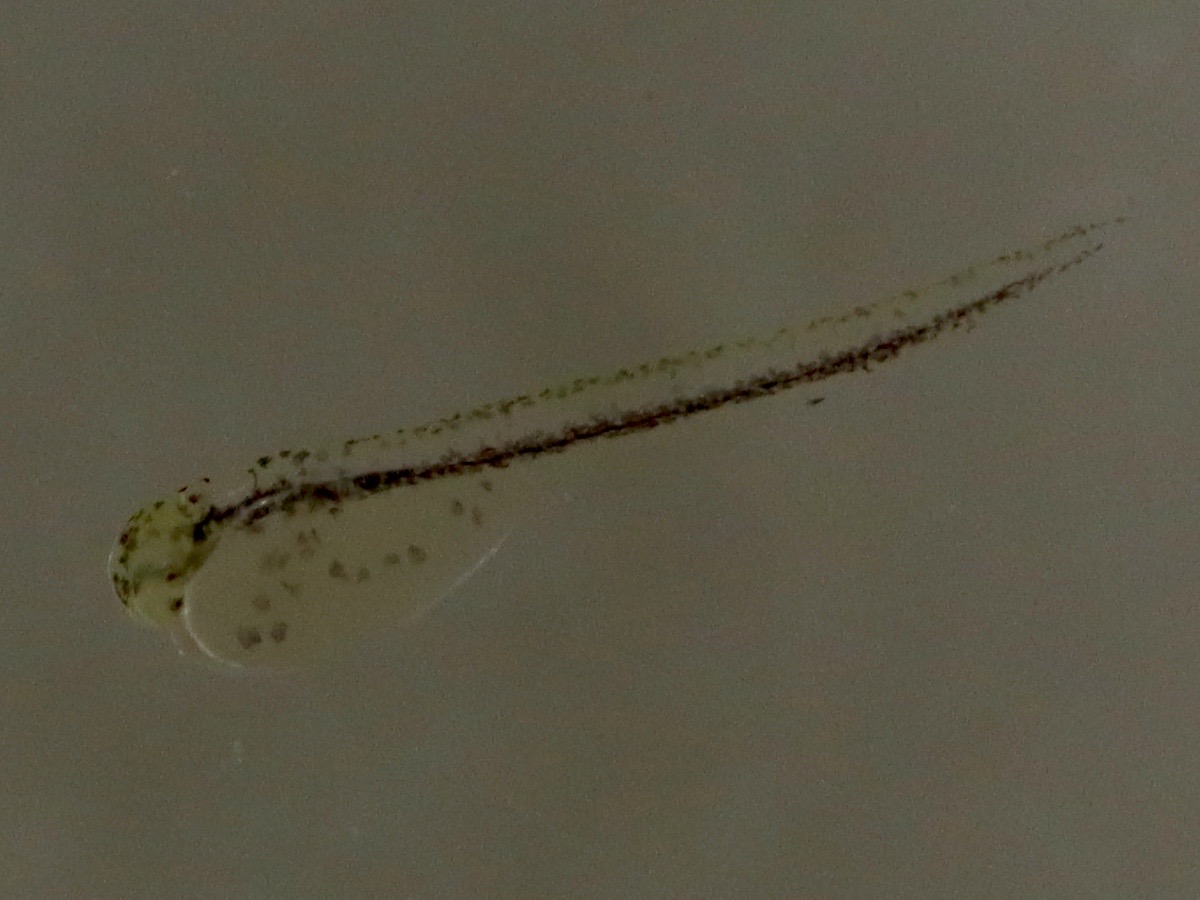
孵化直後の稚魚。
A fry just after the hatch.
眼のすぐ後ろに心臓の拍動がみえます。
Heart beat can be seen.
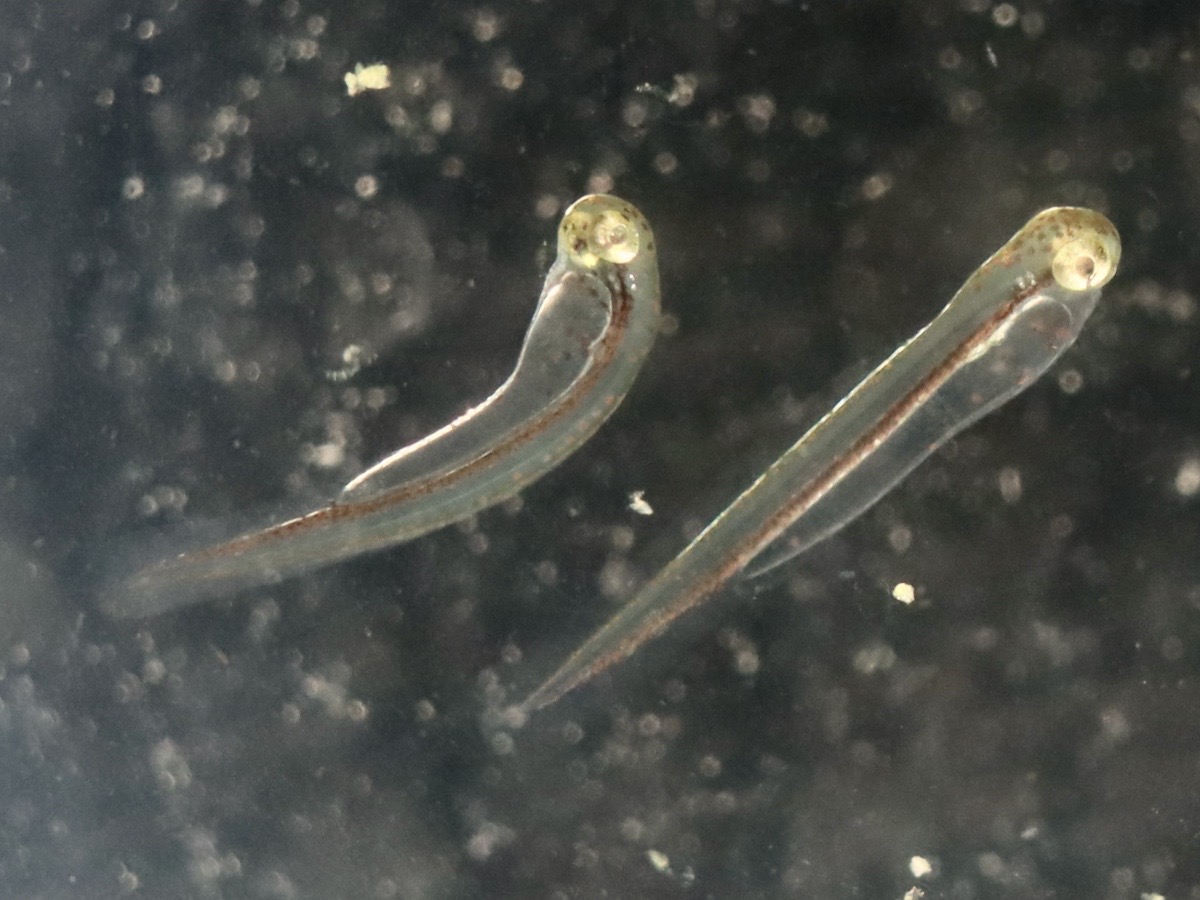
孵化後2日。
Two days after the hatch.
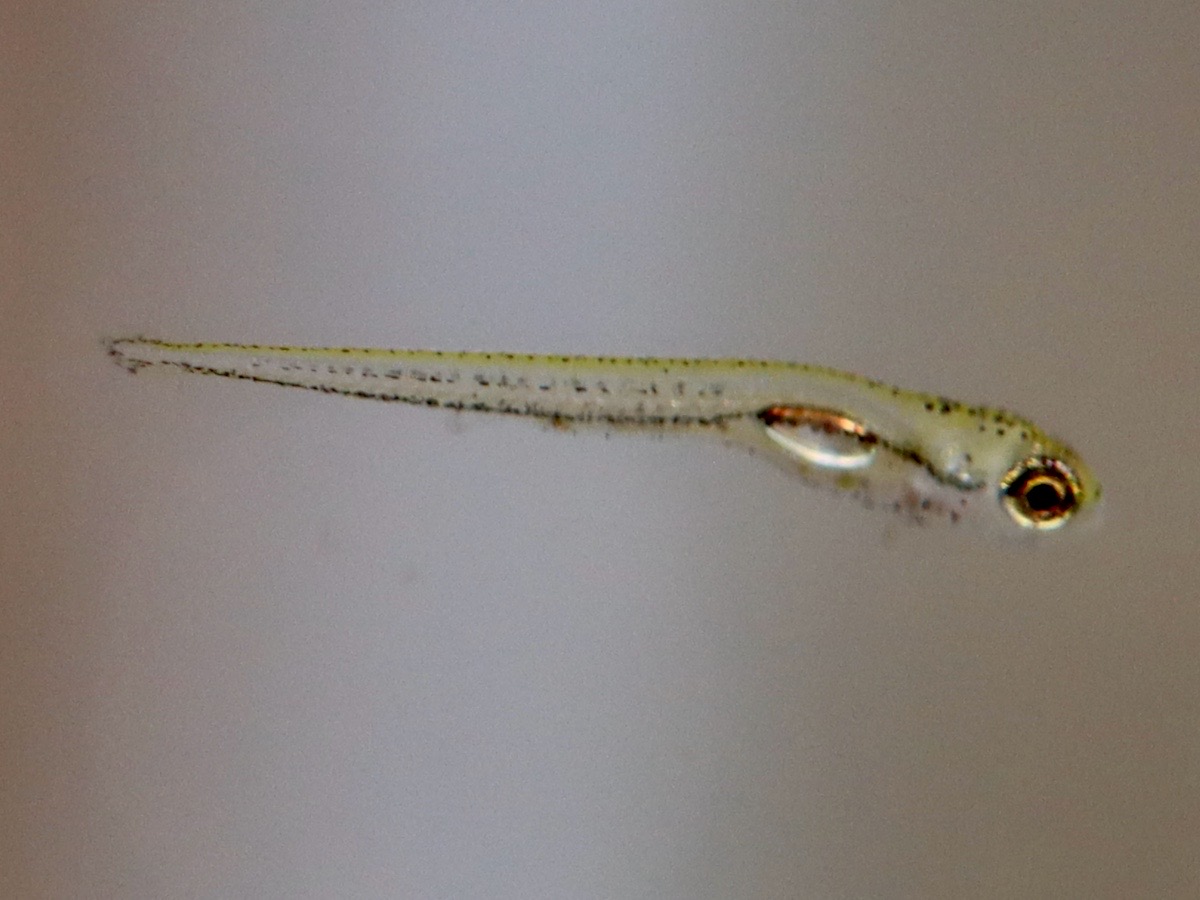
孵化後4日の稚魚。
Four days after the hatch.
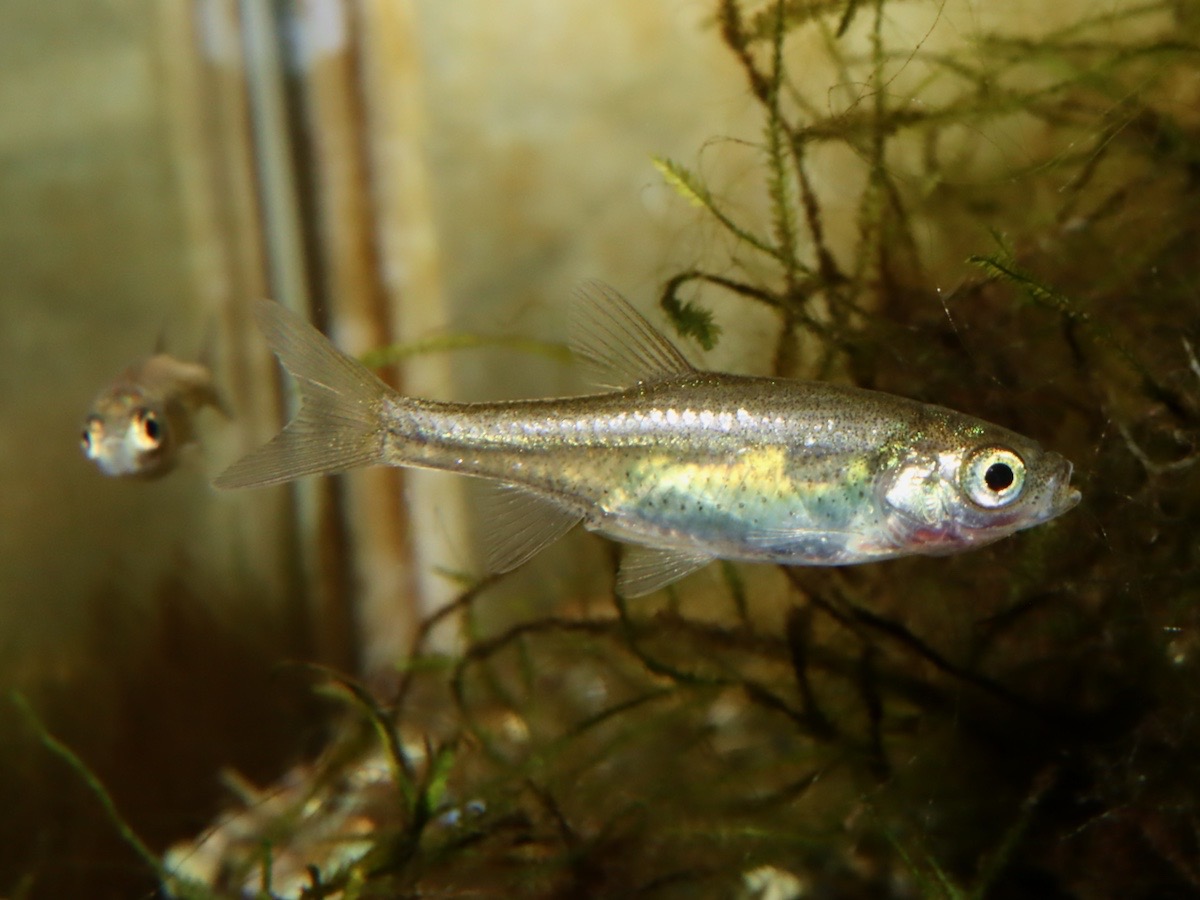
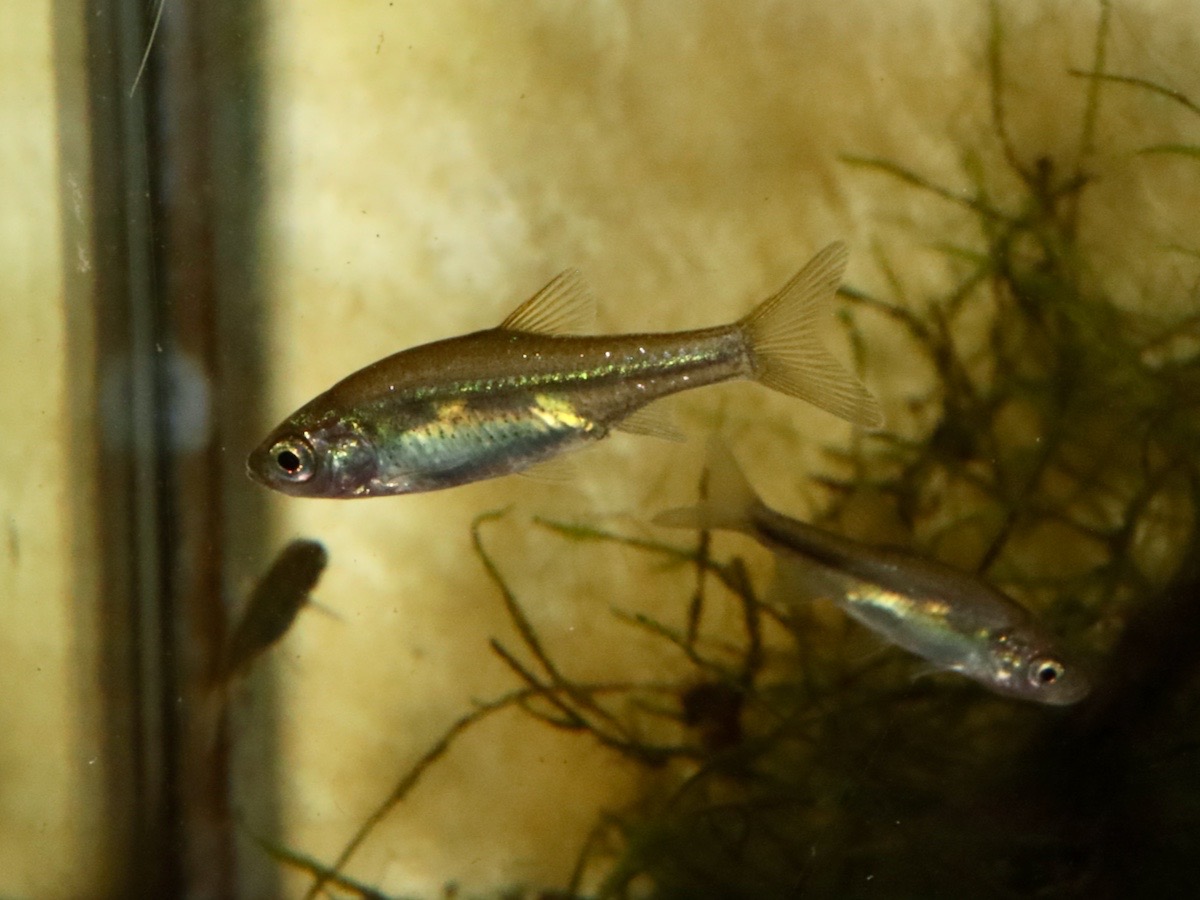
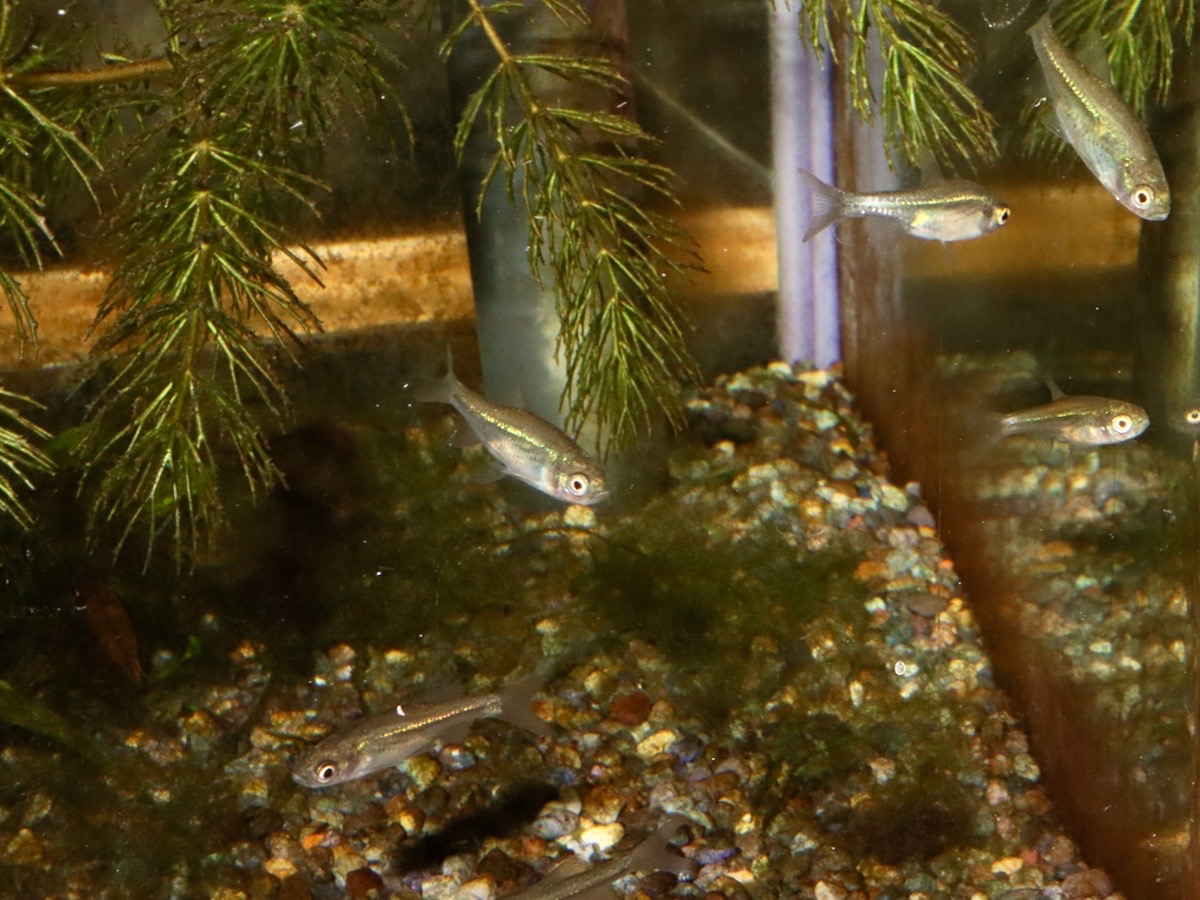
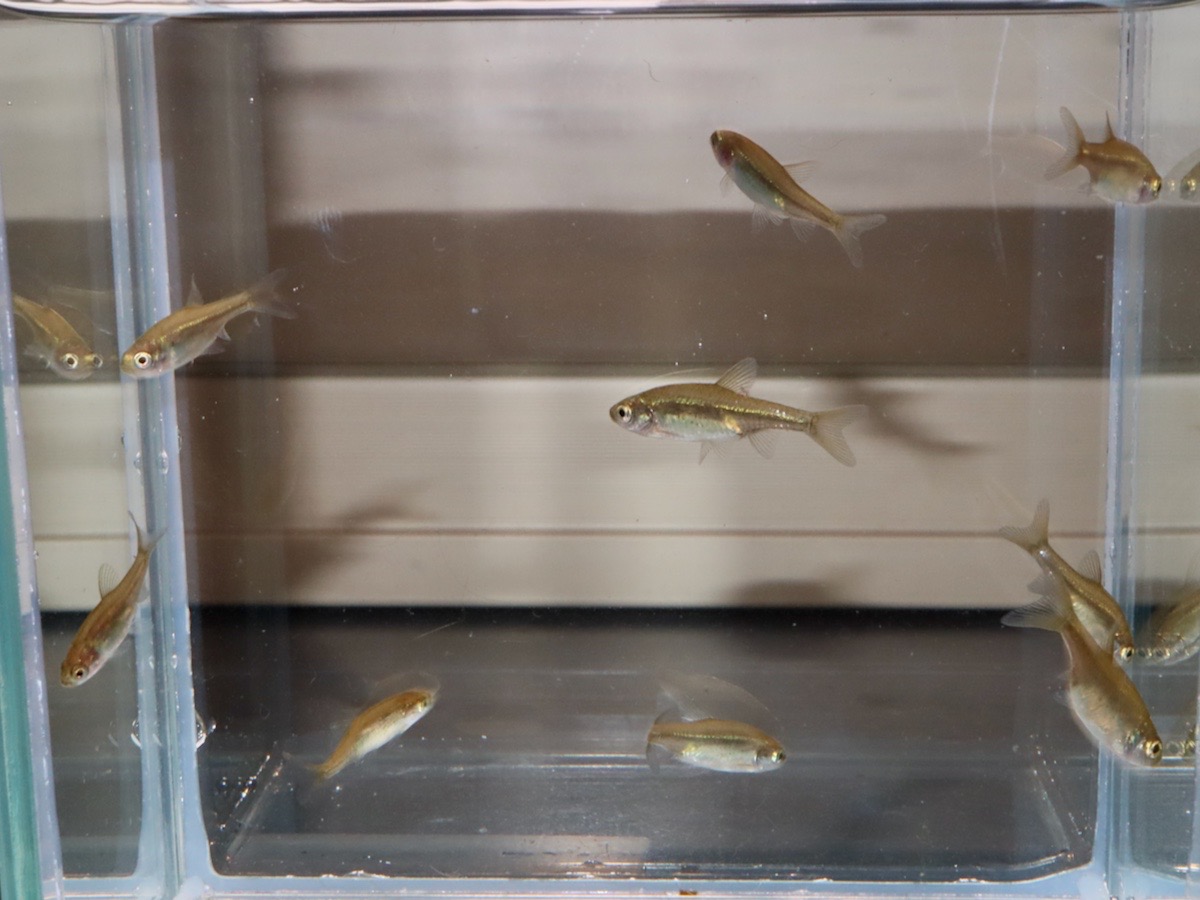
今回は少しずつしか産卵しないようなので、一旦親魚を出して少数の仔魚を育てました。
Because this time the fish seemed laying a small number of eggs at intervals, I once took the parental fish out of the breeding tank, and raised several fry.
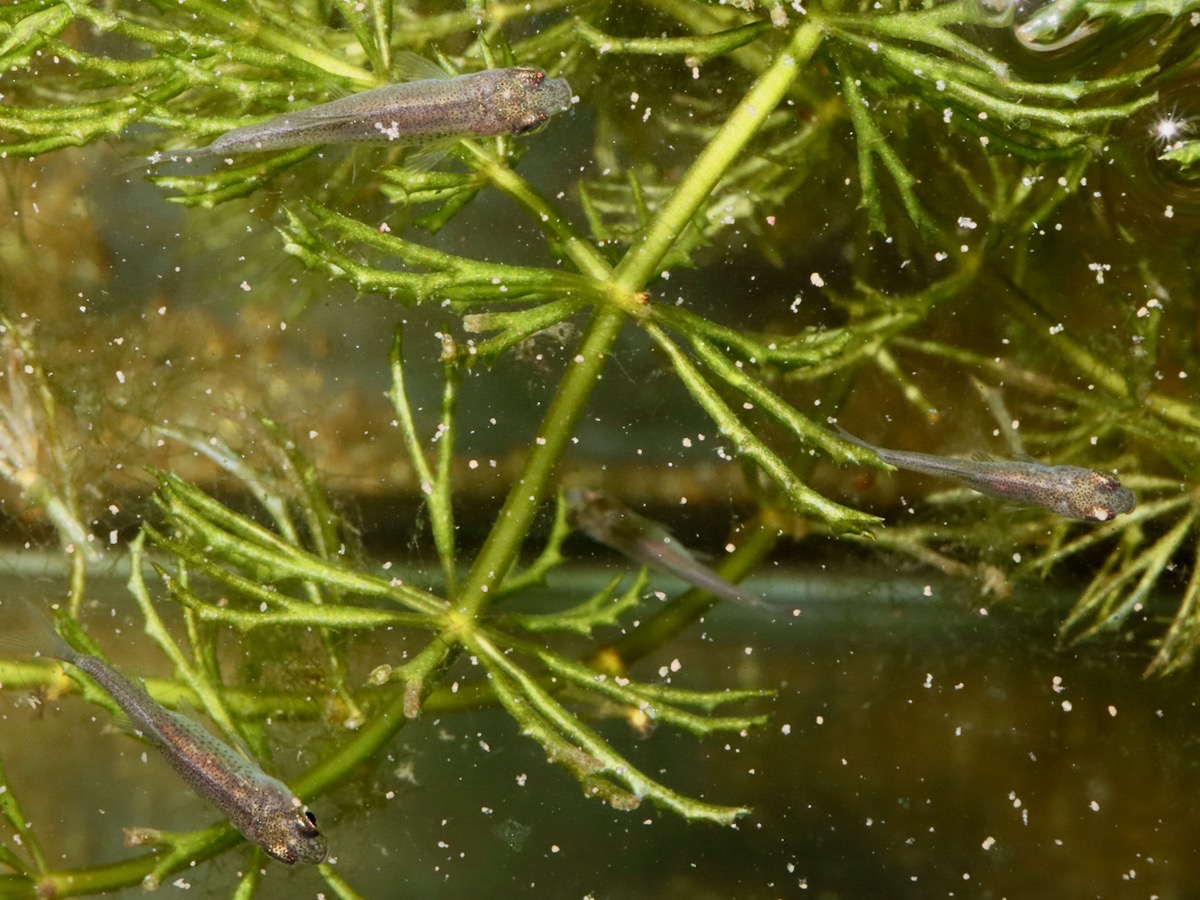
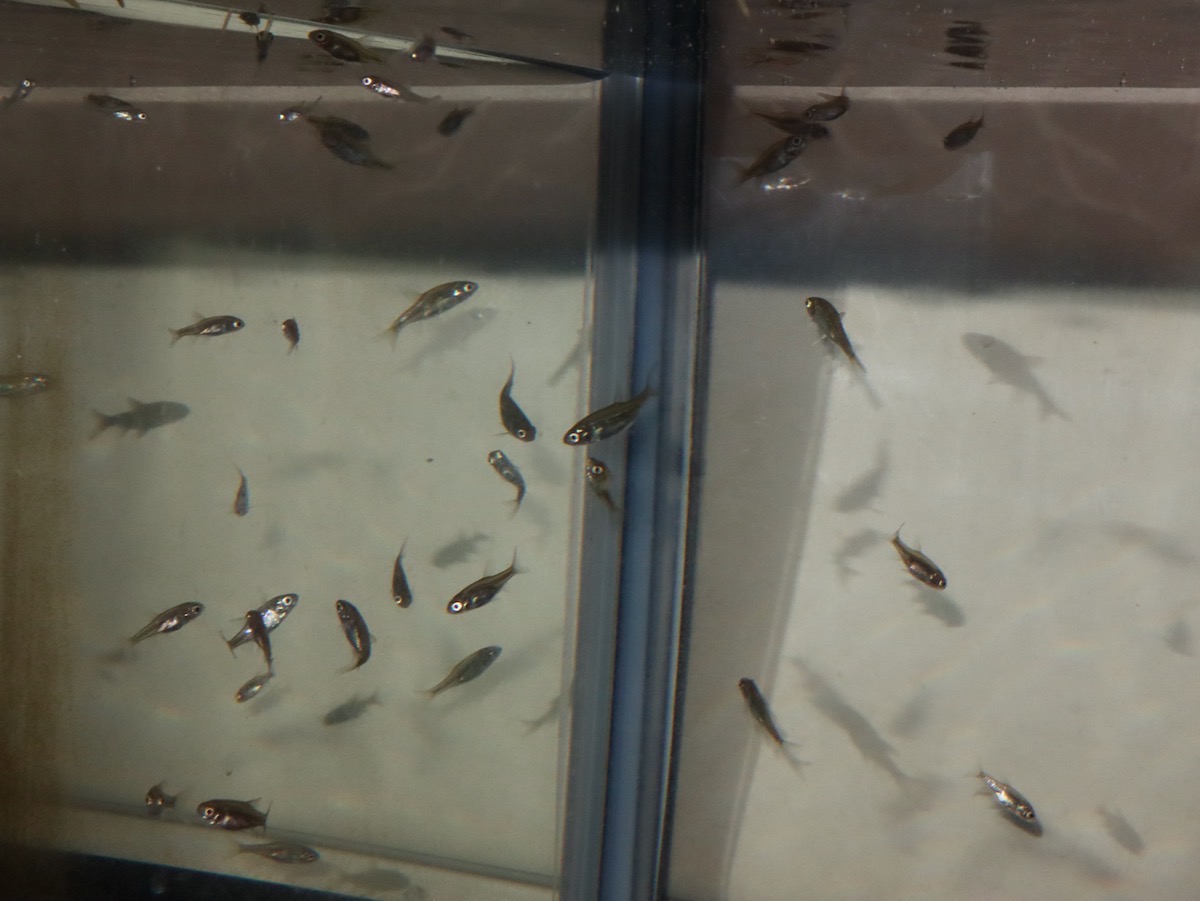
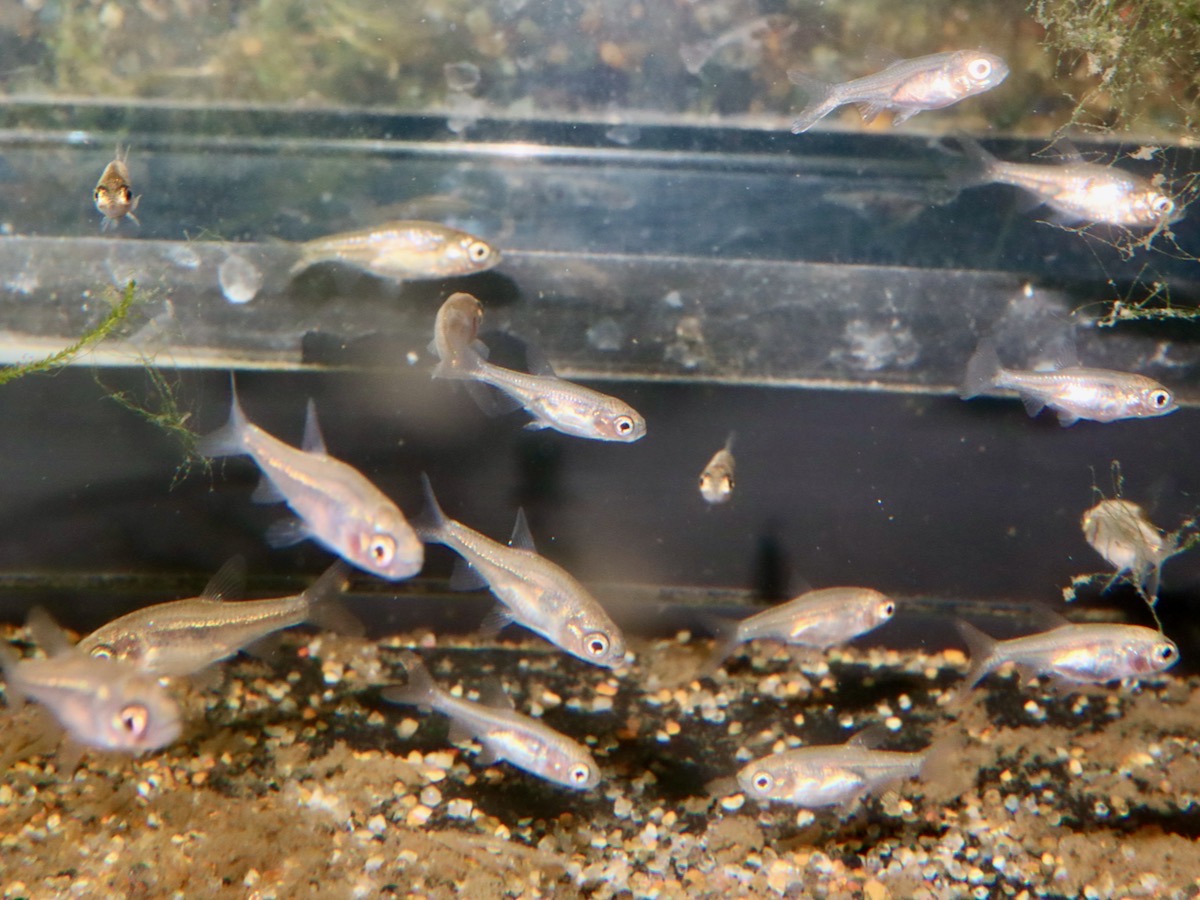
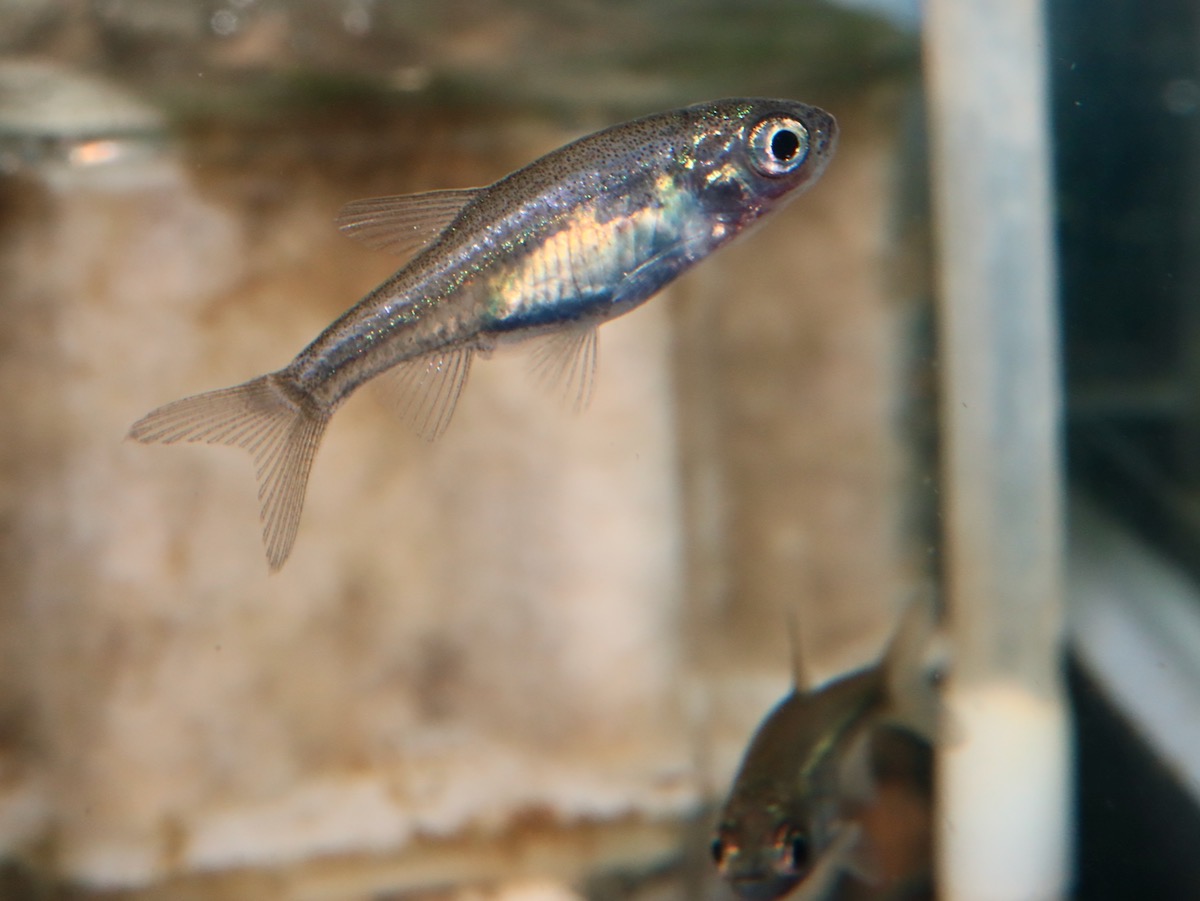
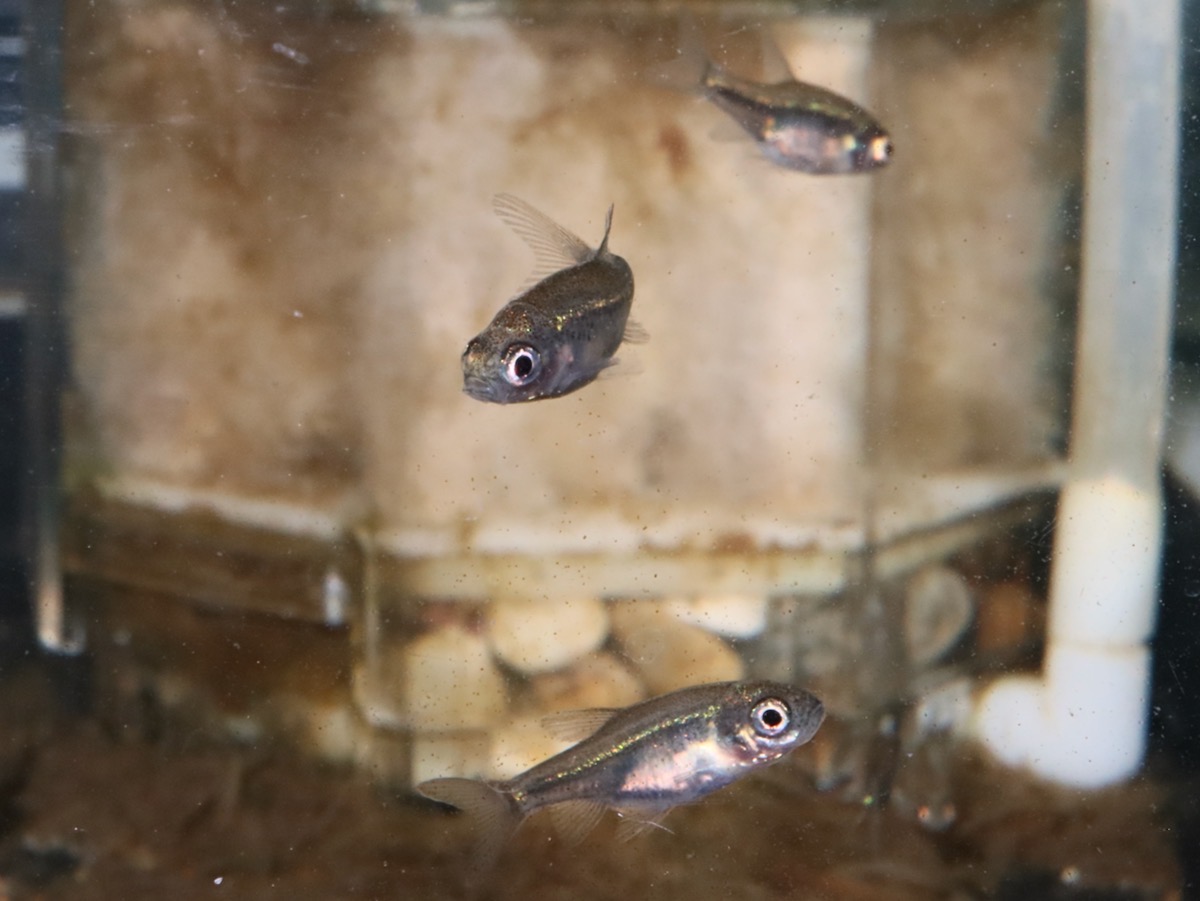
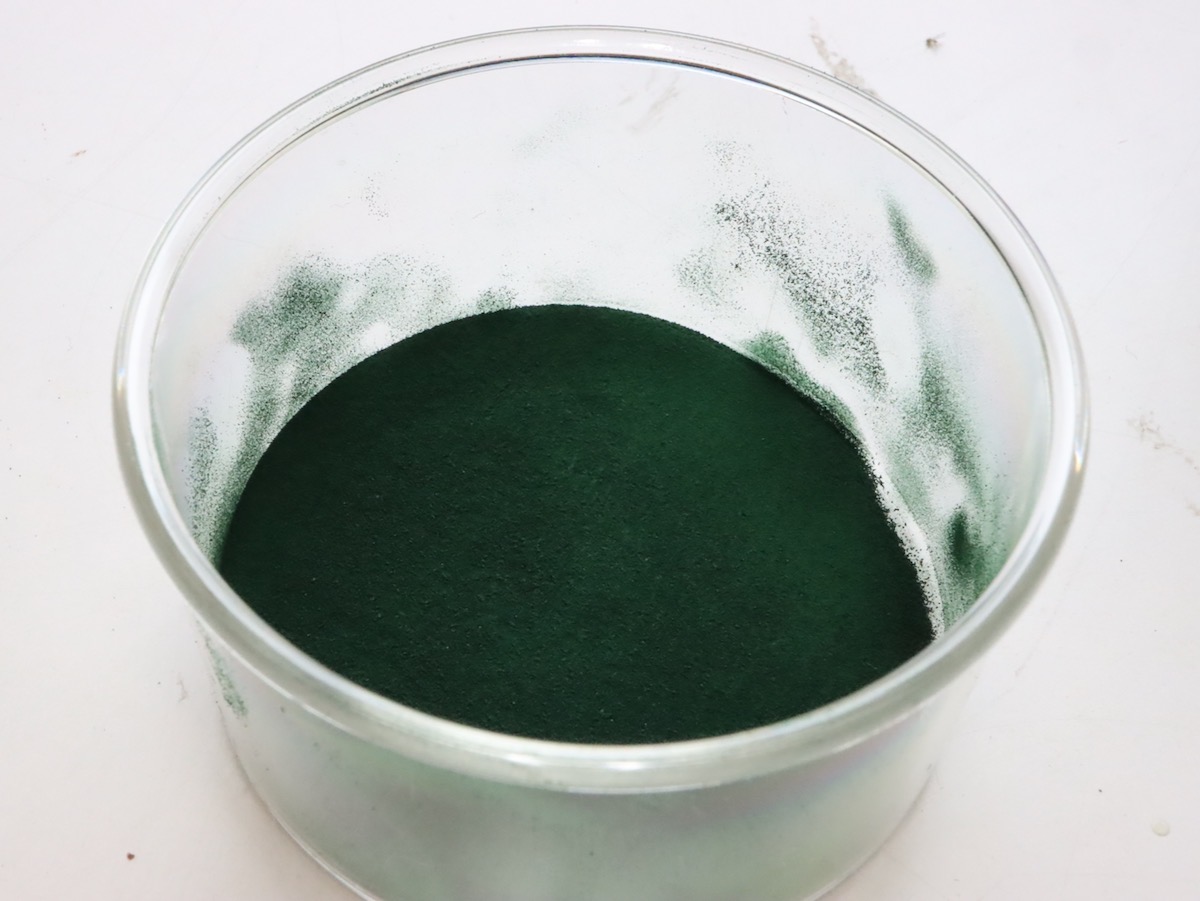
結局、7月の終わりにまとまった産卵があり、多くの仔魚を得ました。今回は上で紹介したグリーンウォーター、インフゾリアに加えて、粉末スピルリナ(人間用)も与えました。生まれたばかりの稚魚が食べているかどうかはよくわかりませんが、ある程度育った幼魚は確かに食べていました。
Finally at the end of July, a lot of eggs were laid and I got so may fry. In addition to green water and infusoria shown above, I fed spirulina powder to the fry this time. Though I could not see if the new born fry ate it, ones a couple of weeks after the birth surely ate it.
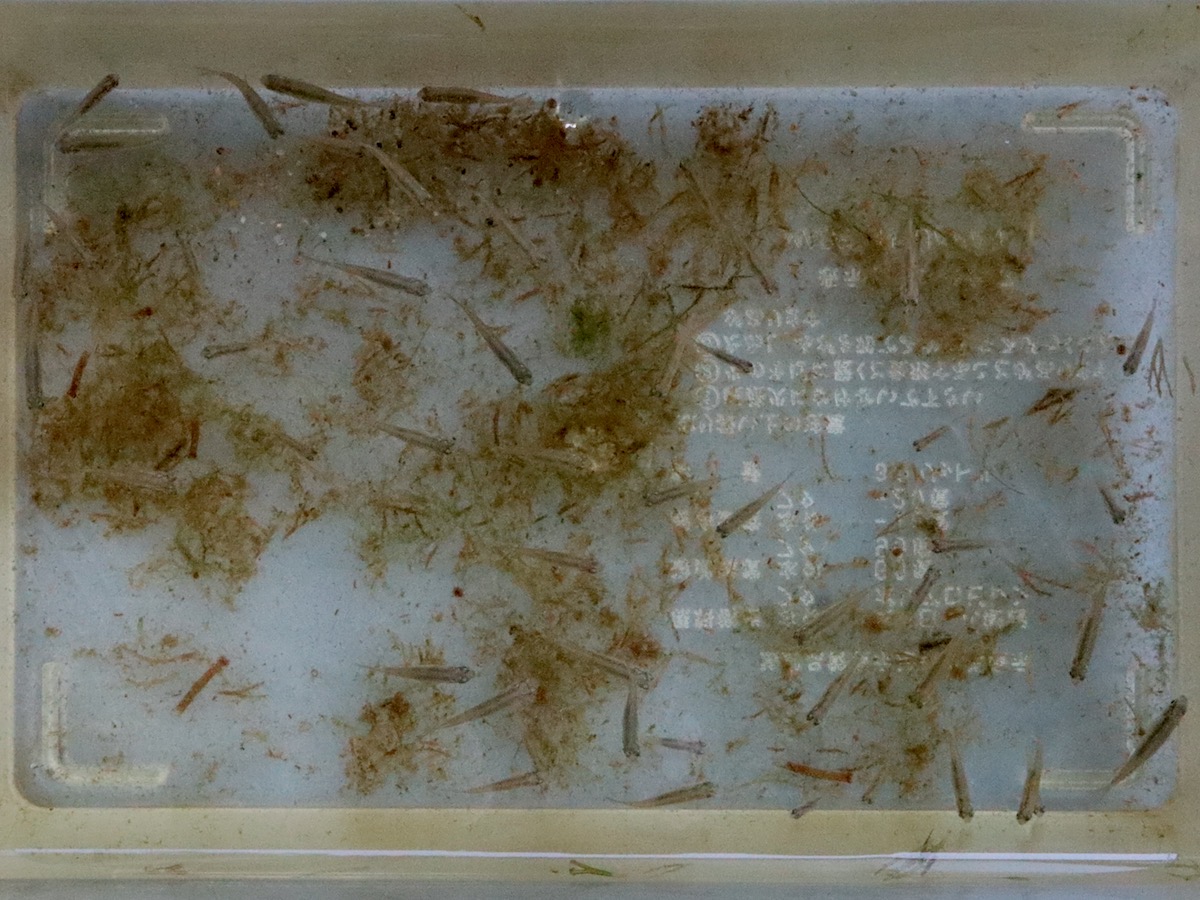
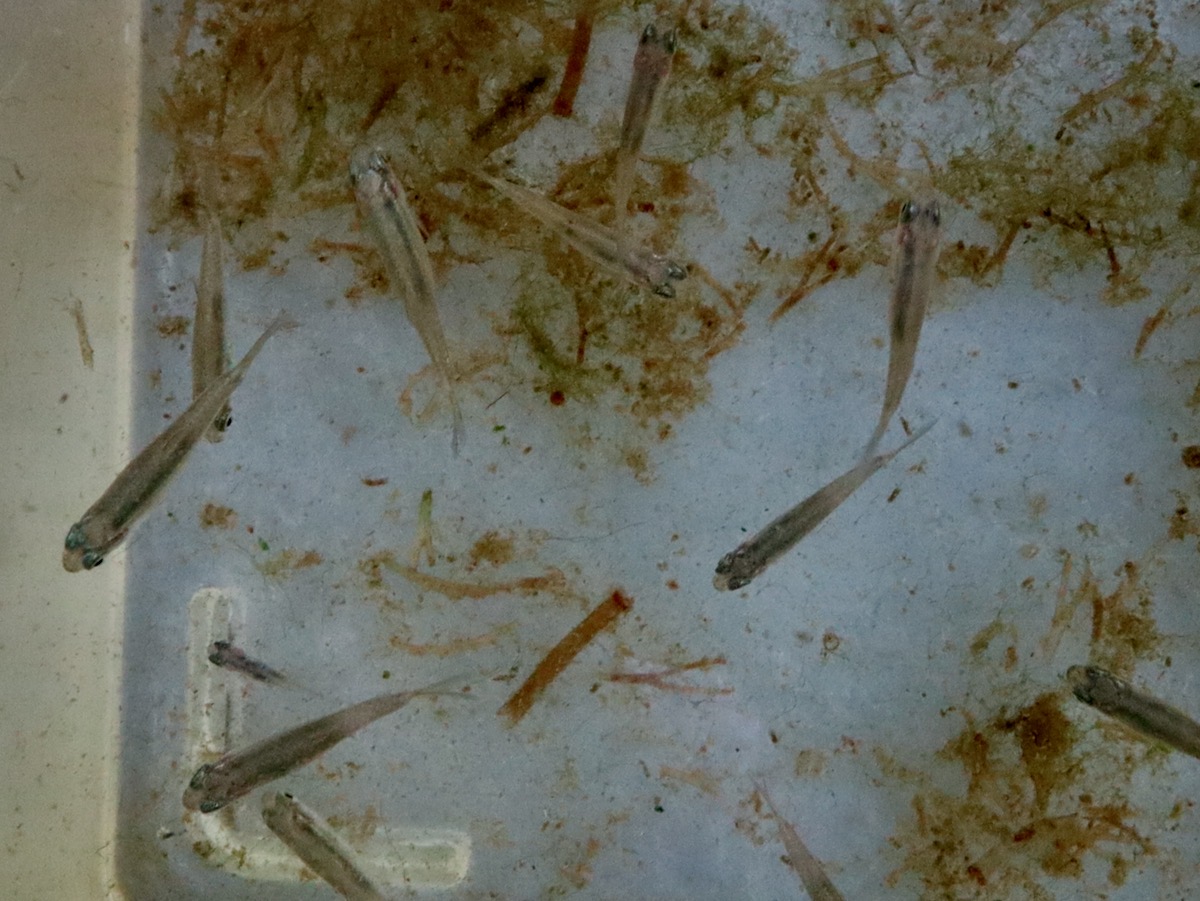
10月、屋外の飼育容器へ移動する途中。
Oct. On the way to the outdoor container.
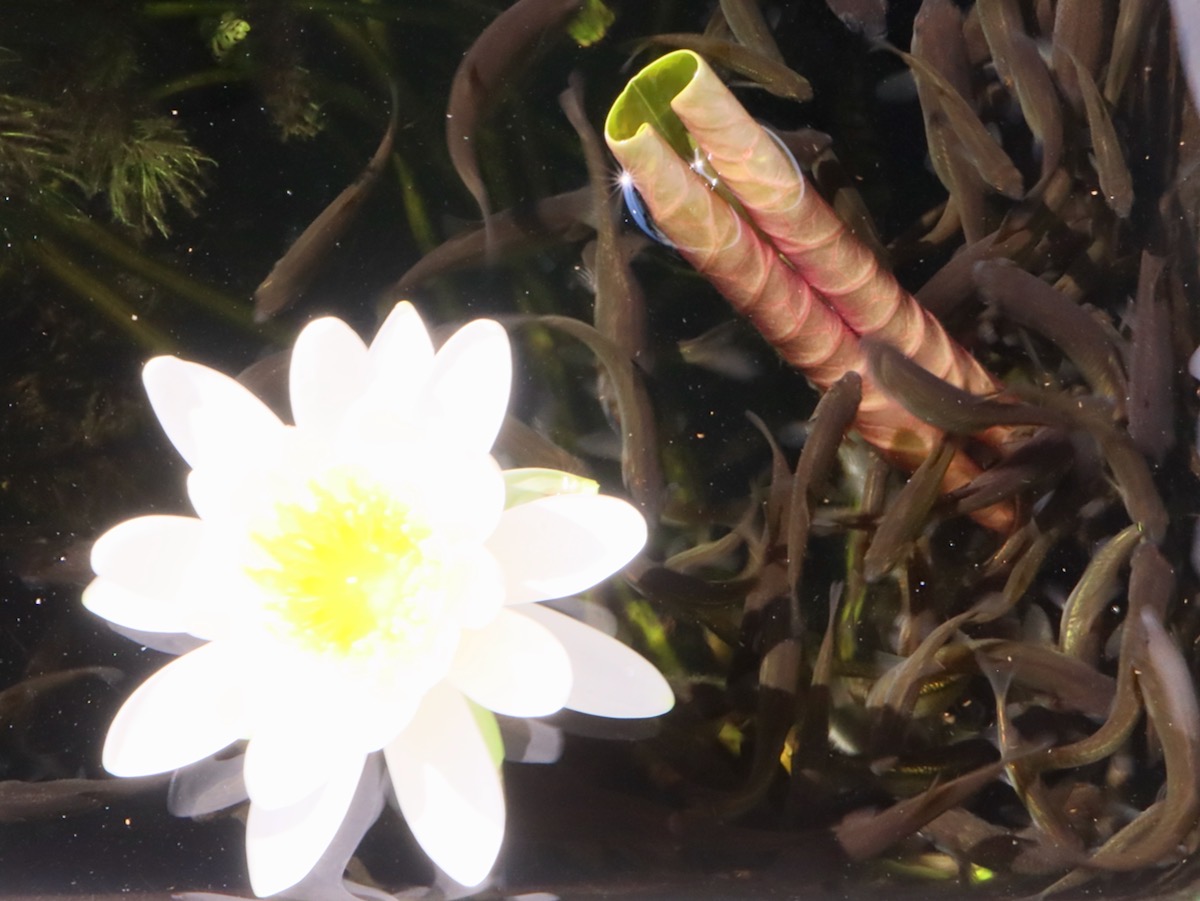
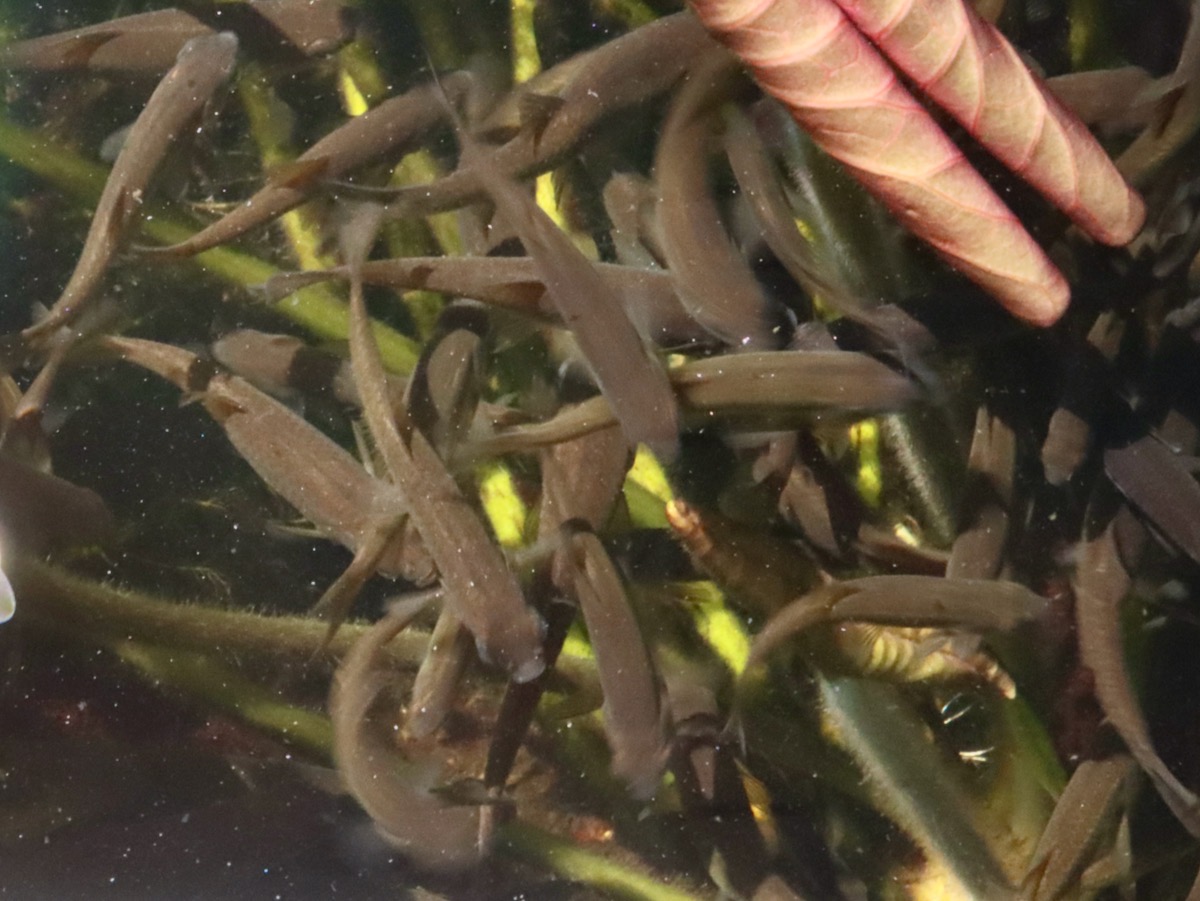
2025年夏、順調に育っています。
Summer 2025, the fish are growing.